




































































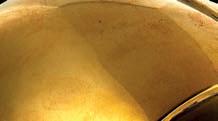


Why the Georgians embraced colourful interiors







FOCUS ON THE SILVERSMITH STUART DEVLIN

PICTURE THIS PORTRAITS BY THE 17TH-CENTURY ARTIST MARY BEALE










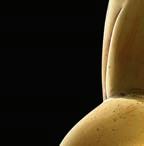



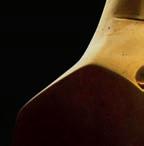

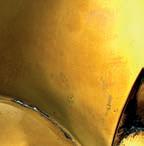

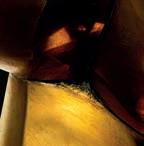
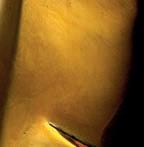

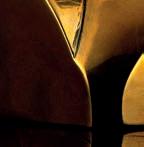












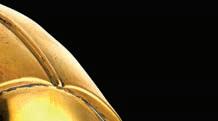
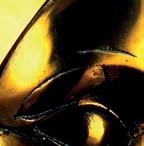



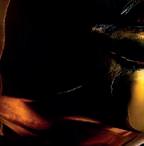

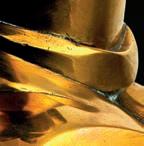
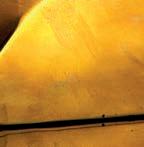
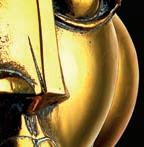
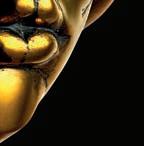



























Celebrating the work of the in uential Scottish Colourist JD Fergusson 150 years after he was born






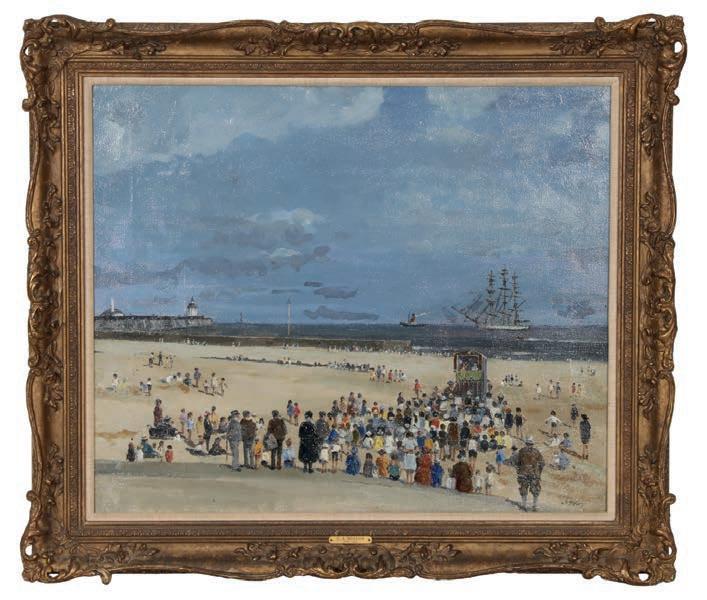

ere’s no doubt that when editing this magazine I often wonder if I am asking too much of you, dear reader.
Who, I ask myself, could be simultaneously interested in the history of Tonka toys, while questioning the colour palette of Georgian interiors? Who wants to know the history of a swagger stick owned by an o cer from the Great Escape, while probing the career of a pioneering 17th-century portraitist? Well, I am hoping that person is you.
To such end I was struck in this month’s magazine by an interview with Ben Irurzun, one of the stars of the BBC’s Interior Design Masters and selfproclaimed Victorian maximalist. Anyone who has seen the show will know Ben’s designs are theatrical in the extreme, brimming with ‘stu ’ and with every room telling a story.
On page 8 he tells us how minimalism, which he hates, has cast out ornamentation which is, he believes, an important expression of our collective memory.
Without layers of belongings we lose our identity. So perhaps our interests should be layered – Tonka toys and Georgian interiors; the Great Escape and 17th-century painters. Collectors are, perhaps, just maximalists of the mind.
So there is much in this month’s magazine to engage the mind maximalist. Mary Beale is the 17th-century portraitist previously mentioned. e daughter of a Su olk puritan minister she became one of the most sought-after portraitists of Restoration London, aided, most unusually for the time, by her devoted husband Charles. As museums and galleries around the world ght to introduce more women artists to their collections, her work is very much in the ascendency as a new exhibition in London shows.
I wonder, as a collector, how far you have gone, or would go, to secure that must-have piece? How about depositing the deeds of your house to get a loan? Such were the lengths numismatist Geo rey Cope went to in order to get his hands on a tiny Roman bronze coin. Mr Cope loved coins for their artistic beauty and part they played in some of history’s most pivotal points. His collection is extraordinary, have a look on page 32. On page 42, art expert Alice Strang considers the life and work of the Scottish Colourist JD Fergusson, while many of his paintings achieve six gures, his works on paper can be bought for the low thousands.
Georgina Wroe, EditorPS Because the next magazine is a joint June and July issue it will be with you slightly later, expect delivery from the second week of June.
Write to us at Antique Collecting, Riverside House, Dock Lane, Woodbridge, Suffolk, IP12 1PE, or email magazine@accartbooks.com. Visit the website at www.antique-collecting. co.uk and follow us on X and Instagram @AntiqueMag
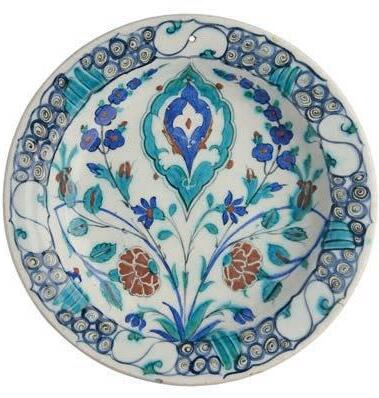

BEN IRURZUN
BBC’s Interior Design Masters and Victorian maximalist, page 8

ELLIE SMITH
On the unconventional working practices of leading female portraitist Mary Beale, page 20

JODY BEIGHTON
Behind the scenes at the upcoming sale of a lifetime collection of treen, page 28

On the 150th anniversary of the birth of the Scottish Colourist JD Fergusson, page 42
Editor: Georgina Wroe, georgina. wroe@accartbooks.com
Online Editor: Richard Ginger, richard.ginger@accartbooks.com
Design: Philp Design, philpdesign.co.uk
Advertising and subscriptions: Charlotte Kettell 01394 389969, charlotte.kettell @accartbooks.com

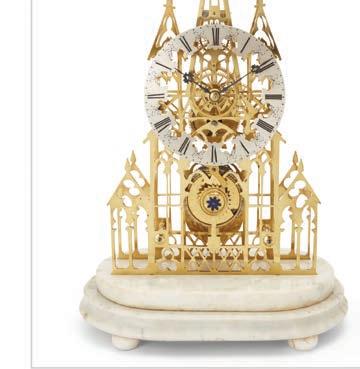

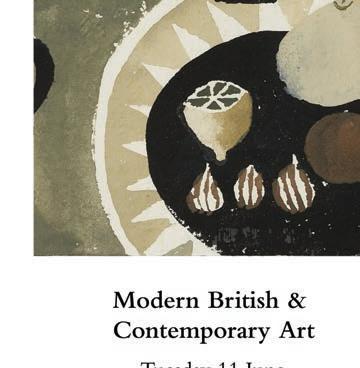


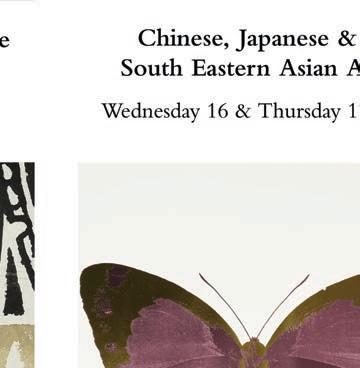

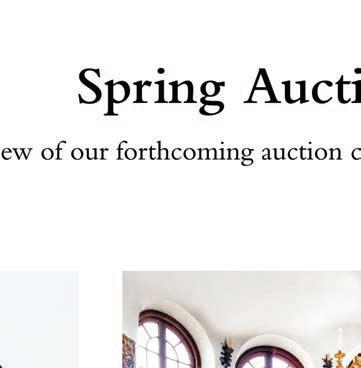
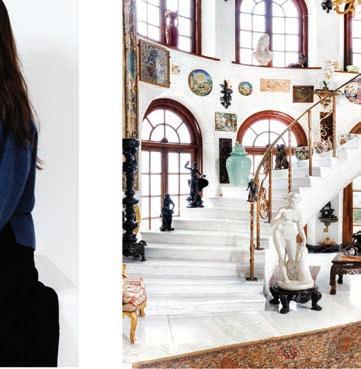
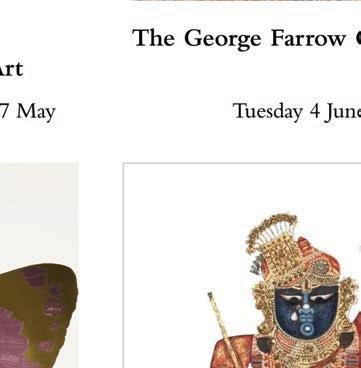
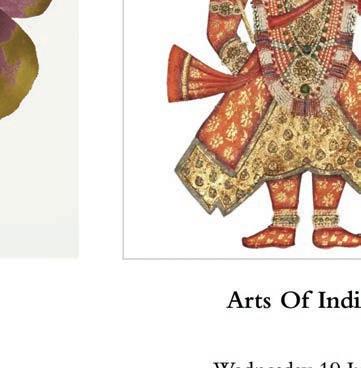




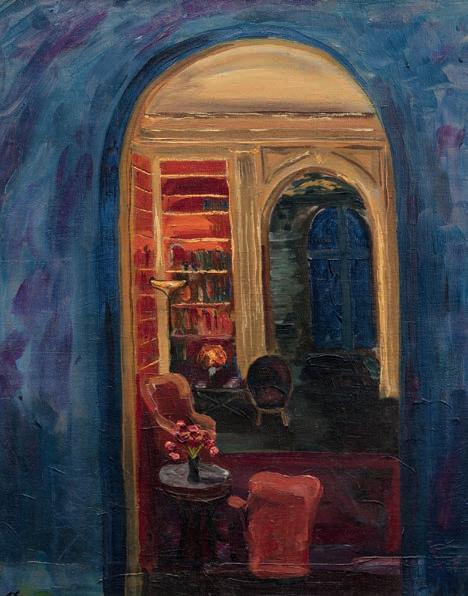
3 Editor’s Welcome: Georgina Wroe introduces the May issue, with the portraitist Mary Beale and Scottish Colourist JD Fergusson in the spotlight
6 Antiques News: Make a plan this month to immerse yourself in the world of ne art and antiques with our four-page guide
10 Your Letters: Correspondence this month includes the ongoing debate regarding two clocks and an insight into the work of the furniture maker Robert ‘Mouseman’ ompson
12 Around the Houses: Our round-up of antique sales making the headlines around the UK, including jewellery owned by 101 Dalmatians author Dodie Smith and ceramics by Clarice Cli



















50 Top of the Lots: Work by three pioneering French female designers go under the hammer in Paris, while chairs from the coronation of George VI appear on the rostrum in London
58 Fairs News: Details of the popular Decorative Fair which returns to a pavilion in Battersea Park this month,
John Duncan Fergusson (1874-1961) Eastre (Hymn to the Sun 1924, bronze, cast dated 1991 and numbered 5/10, image courtesy of Lyon & Turnbull

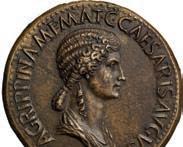
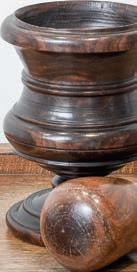
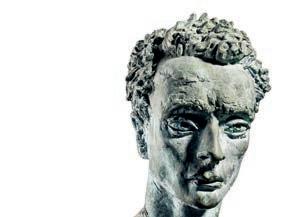

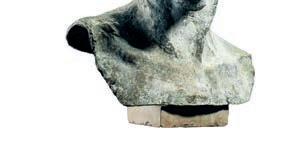
Waxing Lyrical: Antique furniture expert David Harvey takes the temperature on a pair of 19th-century apothecary’s cabinets
Lots of Love: Irita Marriott is bowled over when a collection of 1,500 Tonka Toys drives into her saleroom
Saleroom Spotlight: We shine a light on a lifetime collection of treen going under the hammer in North Yorkshire
In the Knowles: On the 80th anniversary of the Great Escape, Eric Knowles discovers a swagger stick owned by one of the o cers who played a major role in the audacious plan
Puzzle Pages: Invigorate a sluggish brain by going head-to-head with our champion quiz editor Peter Wade-Wright
59 Fairs Calendar: Never miss another event with our up-to-date listings
60 Auctions Calendar: Discover sale dates even before they are o cially announced with our guide
66 Marc My Words: Life in the fast lane of the business as seen by Antiques Roadshow expert Marc Allum
20 Family Affair: We go behind the scenes at an exhibition of the work by the 17th-century portraitist Mary Beale whose artistic endeavours were assisted by her husband and sons
40 Subscription O er: Save more than a third on the annual RRP and you, or a friend, receives a free gift
32 e Face of History: Coins tell a country’s history like no other artefact, as shown by the lifetime collection of Geo rey Cope which goes under the hammer this month
41 Lots to Talk About: Catherine Southon sings the praises of the celebrated midcentury silversmith Stuart Devlin whose work is up for sale this month

friend, receives a free gift ranging from Tibetan rugs to Monet’s
48 Book O ers: Boost your knowledge with a selection of titles from our sister publisher ACC Art Books, with topics ranging from Tibetan rugs to Monet’s inspirational garden
42 Scot Free: On the 150th anniversary of his birth, art expert Alice Strang delves into the life and career of the Scottish Colourist JD Fergusson
52 Boldly Go: We go behind the scenes at an exhibition at Harewood House to discover the colourful interiors loved by its Georgian owners – a far cry from the muted shades we associate with them today
WEEKDAYS FROM 9.30AM TO 1PM,
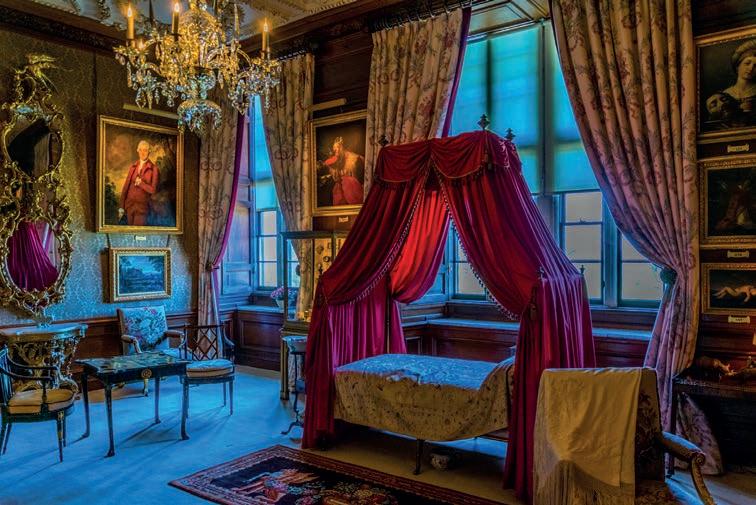
Saucy works by Beryl Cook are on show in London, while an unusual dress made from a WWII escape map goes on display in Scotland
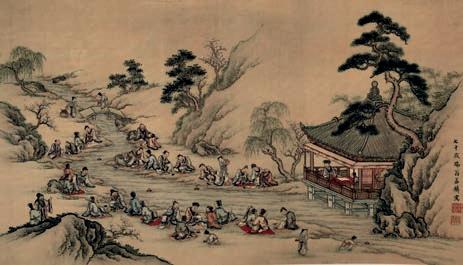
The ancient Chinese ‘winding stream’ party, first recorded in the fourth century, is celebrated in a new exhibition and sale at a London auction house. Roseberys will host Ancestors and Alcohol: The History of Wine in Chinese Culture on May 10, showcasing 40 highlights from its upcoming sale on May 15 and 16.

i s month sees a behind-the-scenes tour of Burghley House in Lincolnshire – one of the UK’s largest and grandest surviving houses of the 16th century.
Staged by the Friends of BADA (the British Antiques and Dealers’ Association), the tour on May 22 is hosted by the furniture restorer and expert Anthony Beech.
Above e interior of Burghley House in Lincolnshire, image Shutterstock
Right Karl’s home pays homage to the Georgians. Photo Hansons, Nathan Fitzsimmons
Below left e winding stream party at Orchid Pavilion in Shaoxing, hosted by Wang Xizhi in 353, image public domain
Below right Gentile Bellini (1429-1507), Portrait of Sultan Mehmed II, 1480, oil on canvas, image public domain
Bottom left A pair of mid-Qing dynasty Chinese double-gourd wine warmers, one of the pieces in Roseberys’ Chinese, Japanese and South Eastern Asian Art sale this month
Below An early bronze portrait medallion of the Ottoman Sultan Mehmed II, c. 1450, it has an estimate of £1.m-£2m
Visitors will lunch in the Orangery before an exclusive behind-the-scenes trip to the textile workshop. Burghley in Stamford, is an example of an Elizabethan ‘prodigy’ house, built to honour the Queen. It was conceived by one of her most powerful courtiers, her Lord High Treasurer, William Cecil, and built between 1555 and 1587. Tickets cost £75 for Friends and £80 for guests. For more details call 020 7581 5259 or email Anne Green on anne@bada.org. e price includes a Zoom talk by Nicholas Merchant Merchant before the visit.
One of the UK’s leading Georgian buffs is holding a series of valuations. Derby resident Karl Martin’s entire home is a tribute to the era, with a particular focus on Royal Crown Derby porcelain and the clock maker John Whitehurst of Derby (1713-1788). He will be hosting three valuations at Hansons in Etwall, Derbyshire, on May 17, June 14 and July 5. To book, call 01282 733988 or email service@hansonsauctioneers.co.uk
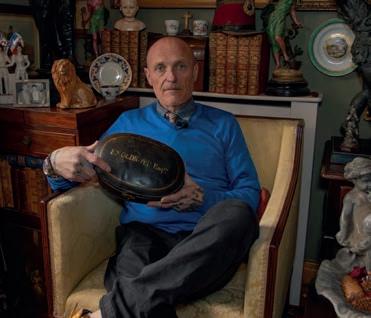

A 10cm (4in) 15th-century bronze medallion of the Ottoman ruler who brought Islam to Europe is expected to make £2m at auction this month.
Sultan Mehmed II (1432-1481) who conquered Constantinople in 1453 aged 21, was both fearedand respected in the Christian West, where he wasnicknamed the ‘Grand Turk’. His vast empire laterextended to Greece and the Balkans, and as faras Wallachia on the Danube.
The medal, which came to light in 2000, is one of the highlights of Bonhams’ sale at New Bond Street on May 21.
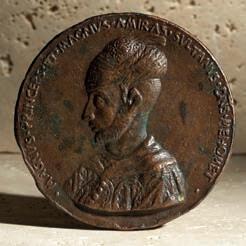
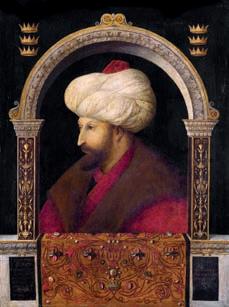
e V&A Dundee is showcasing photographs of cities which have helped frame our perceptions of urban living in the 19th and 20th centuries.
e explosion of photography in the mid19th century coinciding with the rapid growth of cities across the globe.
Photo City: How Images Shape the Urban World, on at the museum until October 27, includes 150 photographs, lms and installations by some of the 20th-century’s most acclaimed snappers, including Henri Cartier Bresson (1908-2004); the American photographer Berenice Abbott (18981991) and the pioneering US photo journalist Margaret Bourke-White (1904-1971).



Although best known for his industrial paintings of Manchester and the surrounding area, the seascapes of LS Lowry (1887-1976) are the focus of an exhibition in Berwick-Upon-Tweed this month.
Showcasing 20 paintings, Lowry and the Sea at the Granary Gallery from May 25-October 13, reveals how the artist captured scenes from the Northumberland coast over several decades.
Lowry began visiting the northeast of England in the 1930s, with his rst visit to Berwick-upon-Tweed in 1935. He became a regular visitor to the seaside town until his death in 1976.
But the spectre of industrialisation was still never far away. In his 1965 work Tanker pollution appears to bleed into the murky green water and dirty sky.
Left Margaret BourkeWhite (1904-1971), e Statue of Liberty, 1963 © Courtesy of Margaret Bourke-White/ e LIFE Picture Collection/ Shutterstock
Right Beryl Cook (1926-2008) e Lockyer Tavern, c. 1974. Courtesy of the Beryl Cook Estate
Far right Beryl Cook (1926-2008) Lady of Marseille, c.1990. Courtesy of the Beryl Cook Estate © John Cook 2023
Left Old Vennel o High Street, Glasgow, 18681889 © V&A London
Above right Tom of Finland (1920-1991) Untitled, 1962, From the Athletic Model Guild’s e Tattooed Sailor series © 1962 Tom of Finland Foundation
Left Denise Scott Brown (b.1931), Pico Boulevard, Santa Monica, California, 1966, courtesy of Denise Scott Brown
Right LS Lowry (18871976) Tanker, c. 1965 all three images © e Estate of LS Lowry. All Rights Reserved, DACS 2024. Image © e Lowry Collection, Salford
Below right L.S. Lowry (1887-1976) On the Sands, Berwick, 1959.
Below LS Lowry (18871976) July, the Seaside, 1943. Image © Arts Council Collection,

Two contemporaneous 20th-century artists born thousands of miles apart but linked by their playfully erotic images are celebrated at a new exhibition.
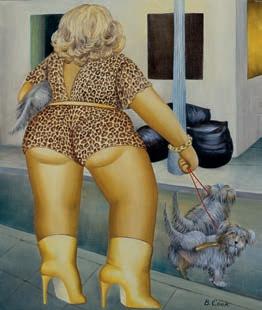

Studio Voltaire in Clapham is pairing the work of Egham-born artist Beryl Cook (1926-2008) with that of Tom of Finland (1920-1991) born in Kaarina, in the southwest of the country.
Self-taught Cook is renowned for her images of larger-than-life women, generally engaging in bawdy fun, while Tom of Finland’s work depicts semi-clad bikers, cowboys, sailors and mechanics. Both worked outside the gallery system: Cook reproducing her work in postcards, calendars and prints, while Tom of Finland used tness magazines and mail-order subscriptions. Beryl Cook / Tom of Finland runs from May 15–August 25.
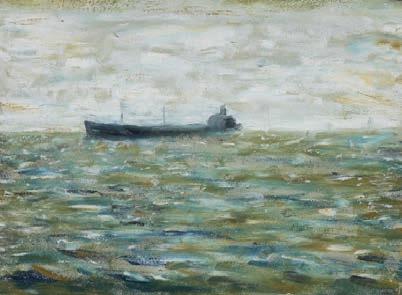



The influential role played by the ladiesin-waiting of the Tudor court is the subject of an evening talk this month at Southwark cathedral. Nicola Clark author of the book The Waiting Game will reveal how rather than being mere decorative ‘extras’ the women were serious political players who changed the course of history, with four of them becoming queen themselves.
The talk is on May 2 from 7-8.30pm, visit the cathedral’s website for booking details.
Five of Wellington’s military dress uniforms, three of which have never been on public display before, have gone on show at Apsley House – the duke’s London home. Because of his military victories in the Napoleonic Wars, Wellington was awarded the highest military rank of Field Marshal, or its equivalent, by eight nations’ armies. Each appointment had a dress uniform for formal occasions and an undress uniform for everyday wear. Other highlights on show include the writing set the duke used in the eld, a battle eld telescope and his woollen slippers.
Above right Conservator Alex Seth-Smith repairing Wellington’s Field Marshal of England coat, image courtesy of Apsley House
Right e Striped Drawing Room at Apsley House will display the uniforms, image courtesy of Apsley House
e results of the long-awaited annual ‘pest’ report from the National Trust is out, with good news for textile collectors. According to the conservation charity, which is in charge of more than a million historic objects across the UK, 2023 saw an 18 per cent tumble in clothes moths.

Ben Irurzun, recent star of the BBC’s Interior Design Masters and selfproclaimed Victorian maximalist

What is it about Victorian style you most admire?
I love the inventiveness of the Victorian middle classes who, thanks to the Industrial Revolution could afford luxuries like crystal, velvet, wallpaper and a plethora of ornamentation. It was a time to showcase wealth and pride through objects on show in the quintessentially Victorian parlour.
Ornamentation is part of our culture and collective memory, so I do hope minimalism has died for good. Ikea and other brands have sold us the illusion


Trust conservator Alexandra Radford, said: “ e alarming increase we saw in 2021, driven by lockdown closures, is now a distant memory.”
But with 2023 being the second-warmest year on record for the UK and increased rainfall, the damp-loving silver sh did well, retaining their top spot as the country’s number one pest with numbers rising by 6 per cent.
e top ve insect pests in 2023:
1.Silver sh (lepisma saccharina)
that white, stark and modern is the way to go, but never in history have we lived without ornamentation.
What do antiques add to a room?
Interest and a sense of heritage and layering. I don’t use antiques as a focal point, I prefer to surround myself with a plethora of wonders. I like the idea of an organic accumulation of objects through time, almost like an inheritance that we carry generation after generation.
Where are your best hunting grounds?
I live in The Midlands where antiques are quite affordable and easily attainable. I traipse all around the area, including the Old Mill Antiques Centre in Bridgnorth, Cosy Cottage Antiques on the Bridgnorth Road and Jones of Shropshire. I even go as far as Llangollen, Shrewsbury, Church Stretton and Ironbridge.
2.Webbing clothes moth (tineola bisselliella)

3.Booklice (liposcelis bostrychophila)

4.Woolly bear (carpet beetle larvae)
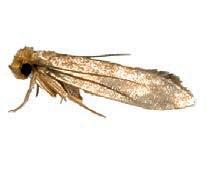
5.Australian spider beetle (ptinus tectus)
Do you collect? If so, what?
I’m not a collector, per se, but I’m always hunting for the next piece for the retrofitting of the 1450 country house I own in the Basque country...an apothecary cabinet handle, opaline glass shade, taxidermy...or anything that fits the scheme. Textiles, drapes and wallpaper always have a place in my heart.
Which were your most enjoyable challenges from the series?
The former convent in Norfolk and the hospitality suite in Ascot. Both were spaces of pure theatre and so the closest to my heart – even though one was a winning space and the other landed me on the sofa. I don’t waste my time with modernity, I find it terribly dull.
Catch up on Interior Design Masters on BBC iPlayer.
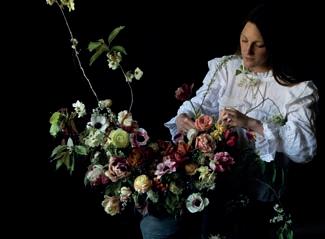
A oral display in the style of the Dutch masters is one of the garlands on display at this summer’s British Flowers Week at the Garden Museum in Lambeth.
Running from June 6-10, ve of the country’s top oral designers have been chosen to create oral displays along the theme ‘re-imagine’, echoing the museum’s exhibition Gardening Bohemia: Bloomsbury Women Outdoors
West Sussex-based orist Milli Proust uses the rich darkness of Dutch still life paintings to create some of her bestknown bouquets.
While most collectors may agree there is nothing funny about settling a claim, the insurance company Hiscox has recruited the witty performance poet John Cooper Clarke, aka the bard of Salford, as its (under) writer in residence.
e 75-year-old rose to fame in the 1970s for his razor-sharp wit and keen observation of urban life, touring with Joy Division, the Sex Pistols, Buzzcocks and e Clash.
He has penned ve poems for the insurer based on unusual claims it has had to settle, ranging from cameras stolen by baboons to a light- ngered poltergeist. He said: “Insurance may seem like a mundane realm, but as the poems show, it’s a rich tapestry of human chaos, from tragedy to comedy and beyond.”
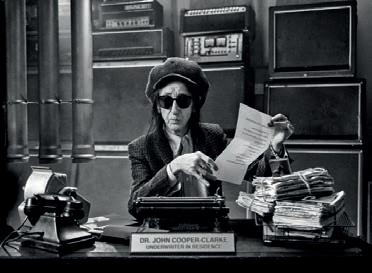
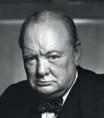
e largest collection of paintings by Winston Churchill (1874-1965), some of which have never been exhibited publicly, have gone on show in California. Some 10 works from a single owner make up the exhibition at Heather James Fine Art’s gallery in Palm Desert, ranging in theme from Scottish lochs to Marrakech. Churchill painted 550 works throughout his life — approximately half of which were executed between 1930 and 1939. He a ectionately called them daubs — only six of which he sold and even then, under a pseudonym.
Above right Yousuf Karsh (1908-2002) Sir Winston Churchill, 1941, Bibliothèque et Archives, image public domain
Right Winston Churchill (1874-1965) e Library of Sir Philip Sassoon’s House at Lympne, c. 1928, oil on canvas, courtesy of Heather James Fine Art
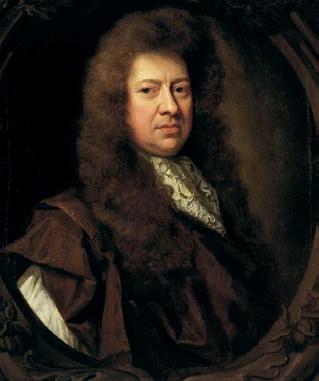
Professor Dickon Weir-Hughes has been appointed as the new chair of the Ephemera Society pledging to reinvigorate the association with a revamped fair, new website and a greater social media profile.
A new display at the National War Museum in Edinburgh Castle explores the importance of military maps in WWII.

Between 1939 and 1945, more than 342 million maps were produced for use by the armed forces, many of which have changed purpose from their original use. One such is a dress made from silk escape maps which would have been issued to pilots or sewn into their uniforms to aid their navigation home if they were shot down.
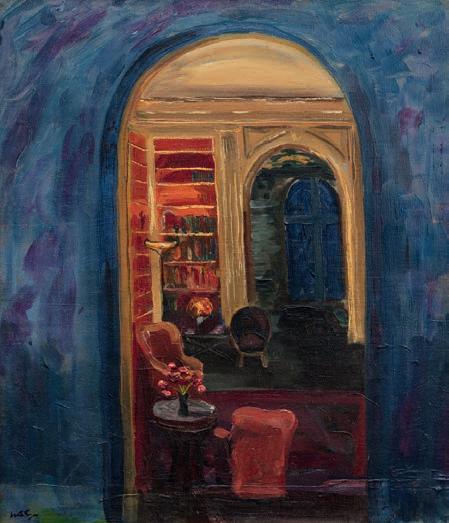
Established in 1975, the society is internationally recognised as the authority in the field of ephemera, covering everything from tickets to posters, with members in 20 countries.
This year’s summer fair, at the Holiday Inn Bloomsbury in London on June 22, promises to be its biggest ever, with 65 dealers taking part.
Professor Weir-Hughes, who takes up the reins following Val Jackson-Harris’ 15-year tenure, said: “The society has had rather a fallow period and there are now plans in place to re-invigorate it. These include plans for academic partnership and a push to encourage new and younger members to join the society.”
Membership to the society costs £35. For more details go to www.ephemerasociety.org.uk
Above left e society’s emblem is the diarist Samuel Pepys (1633-1703), described as ‘the rst general ephemerist’, image public domain
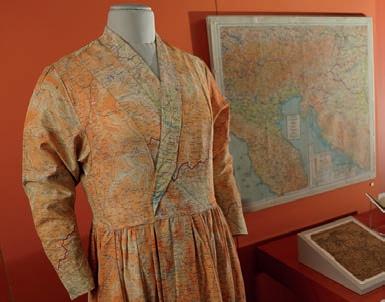
Maps: Memories of the Second World War is on until January 2026.
While one clock query is answered, another timepiece poses questions. Plus memories of a trip to the Mouseman workshop in the 1960s
Our star letter receives a copy of British Designer Silver by John Andrew and Derek Styles worth £75. Write to us at Antique Collecting magazine, Riverside House, Dock Lane, Melton, Woodbridge, Suffolk, IP12 1PE or email magazine@ accartbooks.com
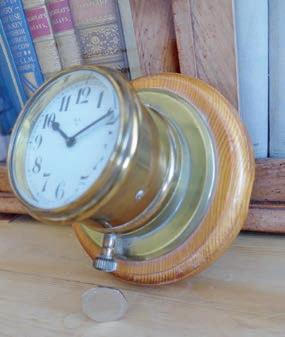
I have a mystery for your readers in the shape of this very substantial allbrass clock. On the dial are the letters ‘BLK’ in tiny print, along with the words Made in Wurtemberg. e movement is eight-day. Guesses are, that it was made around the turn of the century. None of the many books on clocks have any reference to the manufacturer. e museum in Wurtemberg was unable to help or give guidance. Watch and clock repairers that I know are ba ed and very curious. e wooden base is my addition. I have been a conscientious and oh-so-happy reader of the magazine for decades and decades, with decades to come – I will be 90 on April 2.

Can I add a footnote to your excellent article on “Mouseman” ompson’s furniture (Mouse in the House, March issue). During a visit to his workshop in the 1960s the guide explained how his furniture was given its rich brown colour. is was achieved by placing the furniture into a large air-tight chamber where it was exposed to very strong (0, 880) ammonia fumes for a speci ed period of time. e ammonia fumes, by reacting to the tannic acid inherent in the oak, turned its natural straw colour into a lovely medium brown colour. is was then beeswaxed by hand to give it a beautiful showroom satin sheen.
Dr T. Richardsem, by email
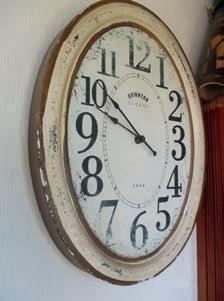
I regret that your correspondent, Martin Briggs (Your Letters, March issue) is probably mistaken in the age of his Downton clock. From the limited evidence available in the photograph this appears to be more likely a much later timepiece, electric, possibly quartz, movement, dating no earlier than the 1930s and more likely c. 1970s. e evidence is the lack of winding hole or holes on the face, the shallow depth of the movement and the style of the dial and surround. Sorry, Martin, the only source of the name Downton is likely to be the ctional Downton Abbey.
Mark Nevard, by email

Above right What was the purpose of this allbrass clock and who was the maker BLK?
Left Mouseman furniture from the collection of David Lamb which was sold in 2023, image courtesy of Sworders
Right e answer to question number six in this month’s quiz. Coalbrookdale’s serpent and grape design on a garden bench
Below left Reader Martin Briggs thought the clock may date to the late 19th century
Graham Mays, Windsor, Berkshire
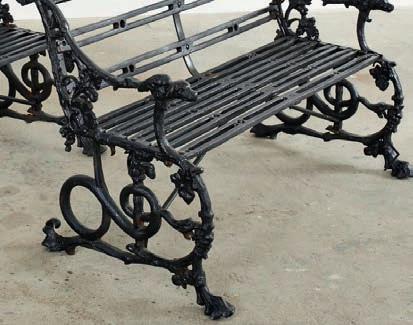
The answers to the quiz on page 10. Q1 (b). Flock wallpapers simulating damask (according to The Connoisseur’s Handbook of Antique Collecting.) Also called caffoys. Q2 (a). It was made in England for the American market. Also called Gaudy Ironstone. Q3 (d). Modern stop watches can be stopped and started again. Early (ie late 17th century) ones stopped and stayed stopped. Such ‘pulse watches’ were used by doctors. Q4 (c). They were designed by the firm of Lock & Co. by its chief hatter, Thomas Bowler, for gamekeepers on a Norfolk estate. Q5 (b). Q6 (a). Garden furniture made by the Victorian cast iron foundry Coalbrookdale c.1870. It refers to ‘pattern number nine’ (see above) which has been copied many times since. Q7 (b). Card games, according to some moralists, were the mark of an idle nature and hence the attribute of Vice personified. Q8 (c). It is a tea or food warmer dating from the middle 18th century. Q9 (d). He was a modeller at Meissen. Q10 (b). It can be seen on metal objects buried in saline soil.
The words pirate’s drug can be rearranged to form the word guardstripe; clone peers is an anagram of polescreen; retire aces can be rearranged to make the word secretaire and vermin rag is an anagram of the word marvering.
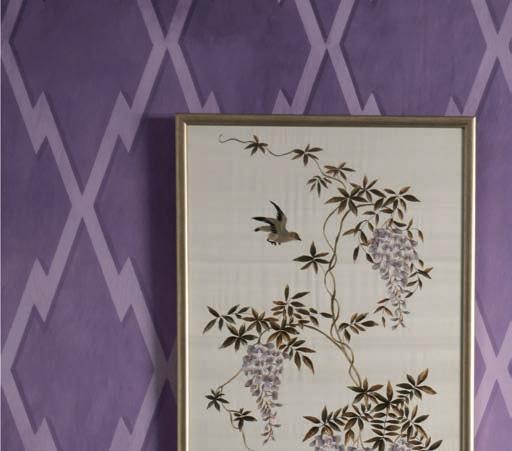

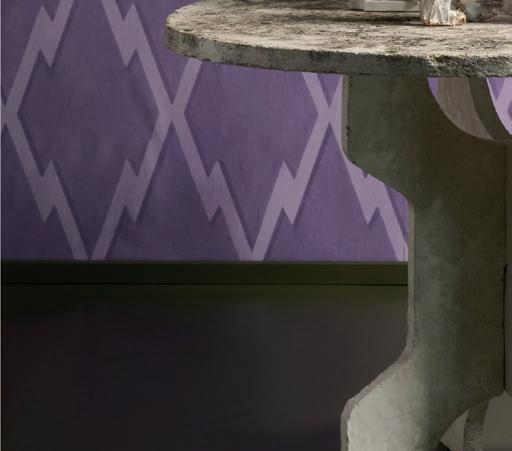
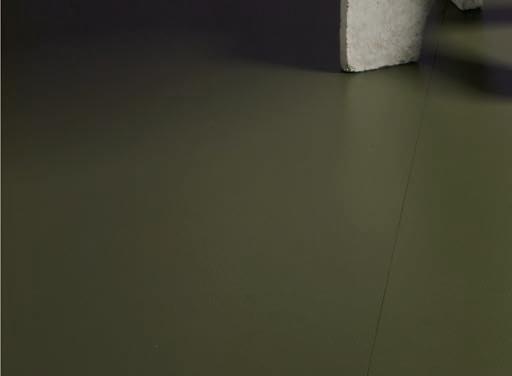



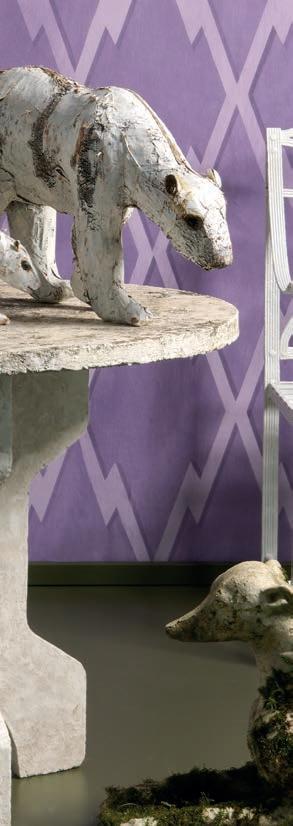

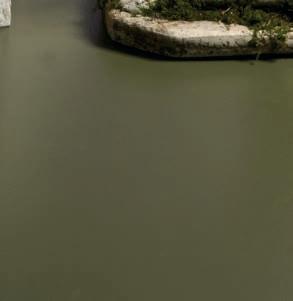

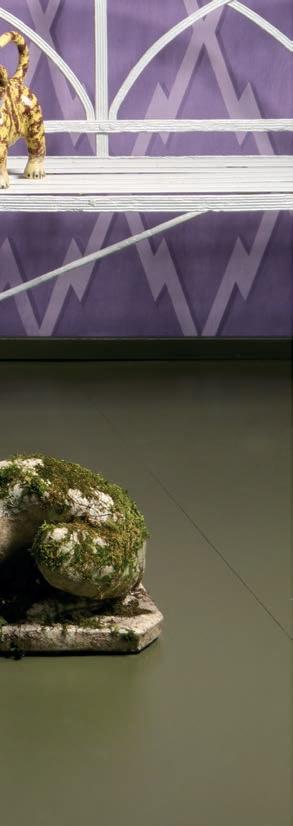

From a y , to rare model locomotives, we round up the latest results from the UK salerooms
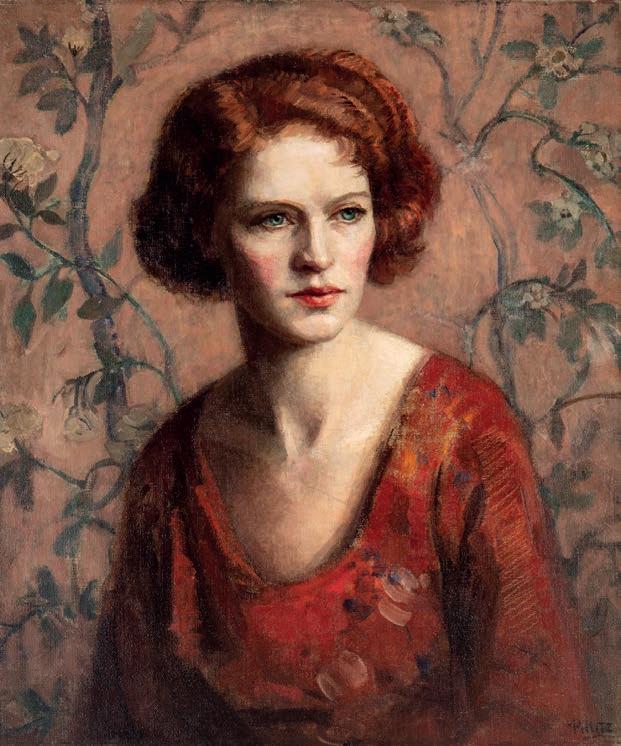
Hedwig Pillitz (1896–1987), Portrait of Paddy Goodman Vine, oil on canvas, sold for £4,200 in London
A silver cigarette box once owned by Haile Selassie I (1892-1975), the Ethiopian Emperor from 1930 to 1974, sold for its mid-estimate of £1,375 at the auctioneer's recent sale. The filigree box, with the cypherof the emperorin gold below the country’s imperial crown, had been donated to a UK charity in 1969. An accompanying letter read: “It is his Imperial Majesty’s wish that the enclosed itemwill serve your noble objective.”When the fundraiser for the National Society for Mentally Handicapped Children didn’t take place, the box descended in the family of the vendor.
A portrait by Hedwig Pillitz (1896-1987) was the top seller in the auctioneer’s recent ‘From the Studio’ sale when it hammered at £4,200, beating its pre-sale guide price of £200-£300.
Six of the 11 paintings by Pillitz appeared in the sale’s top 10, including Portrait of Joan Hood and Portrait of a Seated Man, both estimated around £300 and both selling for £2,200.
A spokesperson said: “15 artists’ estates were on o er, including works by émigré female artists Marie-Louise von Motesiczky (19061996) and Pillitz, demonstrating the continued keen interest in 20th-century female artists amongst buyers.”
Pillitz, who lived in Hampstead, was the daughter of Hungarian émigrés and built a reputation as a portraitist among artists and actors. Her portrait of Dorothy Black, who she painted in the role of Emily Brontë in the play e Brontës, is in the V&A.

A rare vase in the Archaic pattern by Clarice Cli (1899-1972) sold for £4,500 at the Wiltshire auction house’s recent sale, tripling its low estimate of £1,500. e design, dated 1929, is said to be based on one featured in Owen Jones’ Grammar of Ornament published in 1856, portraying the columns of a temple in Luxor. e series came in ve di erent shapes, with early pieces having a printed outline, like Jones’ depiction.
At the same sale a Garden Implements jug, part of a lemonade set, designed by Eric Ravilious (1903-1942) for Wedgwood in 1938, beat its guide price of £150-£250 when it fetched £504. Ravilious worked for the company for a short period from 1936. His work was so popular that Wedgwood continued to produce his designs after his deat as a war artist in 1944.

The Garden Implements design is highlighted with pink lustre on enamel
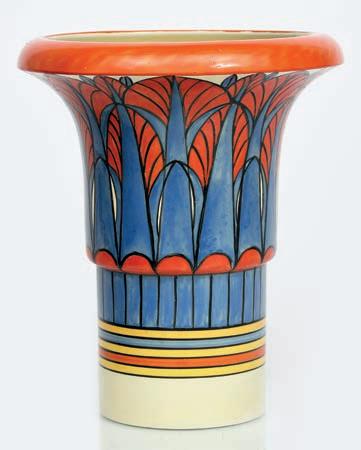
Two highly sought-after model locomotives, made by the ‘Fabergé’ of the model railway world, each sold for £7,000 at the Leicestershire auction house’s recent sale.
Both dated 1966, they were built by James Stanley Beeson (1906-1990) and made in a rare ‘EM’ or 18mm gauge, resulting in smaller, closer-to-scale locomotives preferred by discerning modellers.

Both trains in the rare ‘EM’ gauge were 24cm long, 3.5cm wide and 6.5 cm high

A four-piece Kutch tea service, with serpent-shaped handles, c. 1900, expected to make £500-£800, sold for £2,210 at the Cotswold’s auctioneer’s recent sale. Kutch or (Cutch) silver was made in the region of the same name in India between the mid 19th and early 20th century.
Known for its scrolling foliate patterns interspersed with depictions of animals, the style became so popular that it was imitated in other parts of India as well as in Europe and North America.
The ornate 19th-century service proved everyone’s cup of tea in the Cotswolds
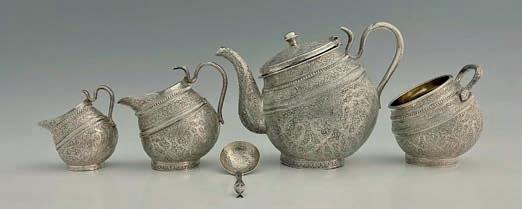
A tiny hawking ring owned by Charles I and found in a spoil heap by the ames by a metal detectorist in the 1980s, hammered for £7,000, beating its estimate of £2,000-£3,000. e 10mm (⅓in) wide ring, which would have hung from a tether attached to a hawk, had languished in an attic for nearly 40 years until its owner Roy Davis decided to clean it. He said: “Going through some old nds recently I decided to clean the dirt-encrusted ring and saw it was inscribed with a royal coat of arms and the legend Charles King.” Noonans’ expert, Nigel Mills, said: “Charles I would have owned a number of trained birds of prey used for hunting small game such as rabbits. It is also likely he would have kept some of his hawks at the Tower of London.”
The small hawking ring fetched a large price at the London auction house

A painting by the self-taught Irish painter James Dixon (1887-1970) sold for £6,000, double its low estimate, making it the top seller at the Gloucestershire auctioneer’s recent sale.
West End Village sold for £6,000 in
Dixon spend his entire life on Tory Island, nine miles o the northwest coast of County Donegal, where he worked as a sailor and sherman. He was introduced to painting when he was in his sixties by the English artist Derek Hill who regularly visited the island. While Hill supplied him with painting materials, Dixon reportedly refused paint brushes as he preferred to make his own from donkey hair. e subject matter, like his St Ives counterpart Alfred Wallis, came from his own experiences in and around Tory Island.
A mid-17th century mother-of-pearl inlaid ower picture in the manner of Dirck van Rijswijck (1596-1679) shot past its guide price of £70-£100 at the Somerset auctioneers when it sold for £17,500.
It was part of the private collection of the late Somerset dealercollector George Withers.
Apparently trained as a goldsmith, van Rijswijck was a master of inlaying mother-of-pearl into ebony or black marble, a technique in which he created mostly “pictures” as well as several tabletops.
is still-life, one of the larger pieces known by the artist, depicts spring and summer owers and includes small insects.
The flower picture made from mother-ofpearl measures 35 x 29cm (14 x 12in)
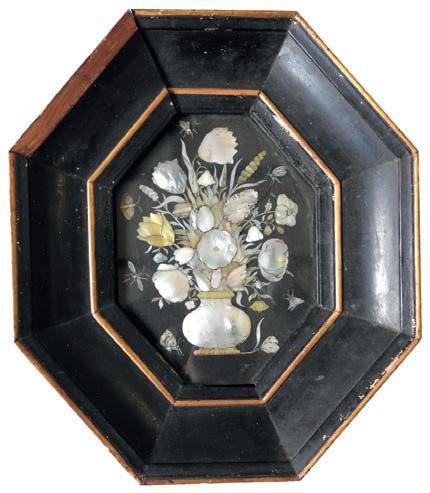
The collection of costume jewellery was owned by the novelist Dodie Smith

Jewellery owned by the e Hundred and One Dalmatians author Dodie Smith (18961990) sold for well beyond its estimate when it appeared for sale at the south London auction house.
A group of her costume jewellery, including two Chanel necklaces and a pair of Miriam Haskell earclips – expected to make £400-£600 – sold for £7,216.
The necklace by Van Cleef & Arpels dated 1960 sold for £19,680

The word “dearest” is spelt out in a diamond, emerald, amethyst, ruby, emerald, sapphire and topaz
Also from the novelist’s collection, a 19th-century acrostic brooch, in the form of a hand wearing a rose-cut diamond set ring, guided at £300-£500, sold for £2,624. At the same sale a coral and turquoise bracelet by Van Cleef & Arpels sold for £19,680 almost ve times its low estimate of £2,000.
A menu signed by Albert Einstein (1879-1955) at a Savoy meal in 1930 to raise money for Jewish communities in eastern Europe, sold for £18,000, beating its guide price of £1,200£1,800 at the Somerset auctioneer’s recent sale.
More than 370 people attended the dinner, including George Bernard Shaw, with Einstein seated between HG Wells and Lord Rothschild who organised the event at which the Nobel prize-winning physicist presented a speech in German. Autographs by Einstein, known as “the father of modern physics” are highly sought after by collectors.
The tantalus was a gift from the actress Gracie Fields to the film director Basil Dean

A silver tantalus given to the lm director Basil Dean (1888-1978) by the actress Dame Gracie Fields (1898-1979) sold for £XX at the North Yorkshire auctioneers on April 10, beating its guide price of £1,500-£2,000.

Einstein’s signature is rare which explains the lengths bidders went to

e art deco bottle set, engraved To Basil with love from Gracie, was made by George Betjemann & Sons, London, 1930. Fields was one of the top 10 lm stars in Britain during the 1930s and was reputedly the highest paid movie star in the world in 1937. She featured in a number of lms directed by Dean, including the 1934 musical Sing As We Go and the comedy Look Up and Laugh (1935). e pair also came together during WWII when Fields signed up for the Entertainments National Service Association headed up by Dean.
As well as Fields, Dean worked with an ‘A list’ of stars including John Gielgud, Noel Coward and Vivien Leigh.
A lover’s eye miniature brooch sold for 10 times its low estimate when it fetched £1,000 at the Cambridge auctioneer’s recent jewellery sale.
e hand-painted miniature, in unmarked yellow metal, was encircled by a border of split pearls in cut down collets.
e short-lived trend of eye miniatures set as jewellery became very popular in the late 18th century until the 1820s.
As well as being gifts between lovers, there are records of artists commissioned to paint eyes for entire families.
is would explain female eyes mounted in very feminine settings, which were likely given by mothers to their daughters.
Eye brooches were fashionable at the end of the 18th century


FINE ART AUCTIONEERS SINCE 1911

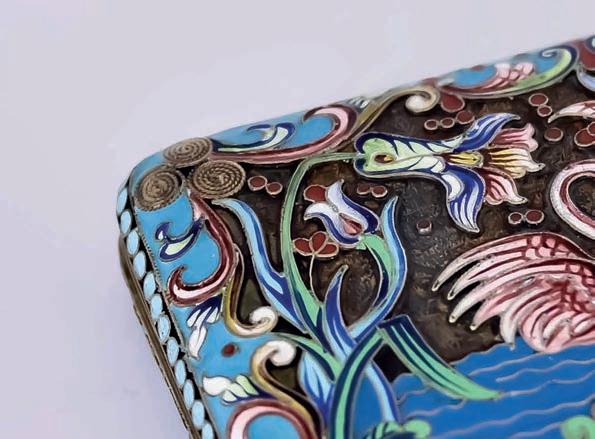
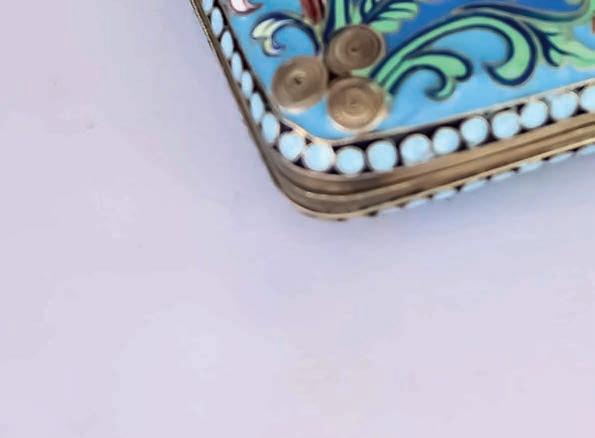

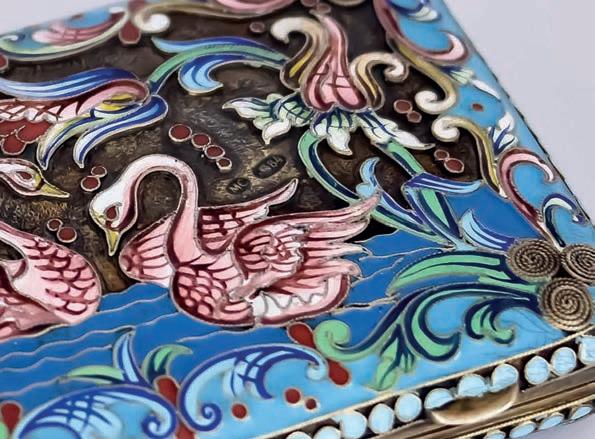
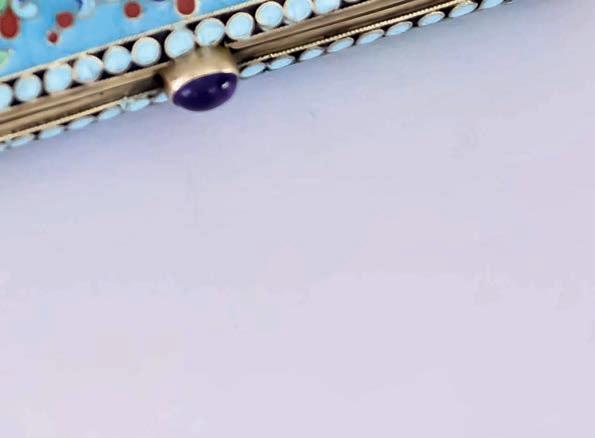

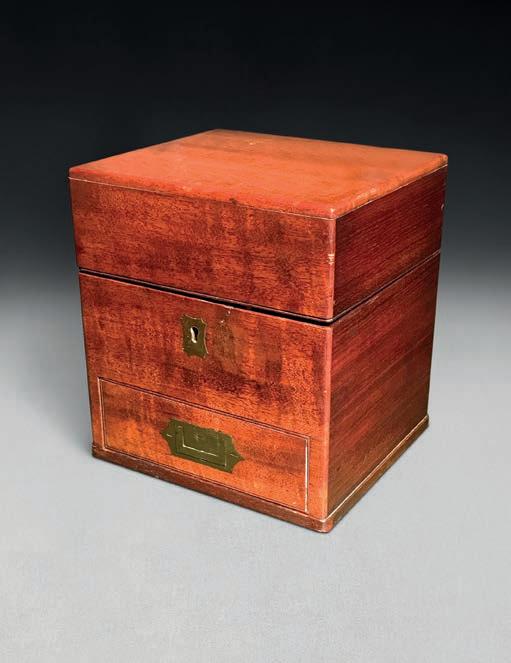

David Harvey swoons when he comes across two perfectly preserved Georgian apothecary’s chests
While there is so much to admire in ne English antique furniture, from its craftsmanship to its ingenious design, nothing propels you back to the very heart of Regency society like these two mahogany apothecary’s cabinets. Imagine the tales they could tell.
e smaller of the pair has no handles, and it’s easy to see it strapped to the back of an apothecary surgeon’s horse as he made his way to one of the far- ung regions of the Empire.
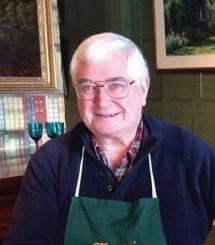

Above A Regency mahogany apothecary’s cabinet e bottles to the main part contain collodion, poison, tartaric acid, aperitive seeds and laudanum
have housed poisons or hard-to- nd ingredients.
But while the chests are elegant, it is in the potions and patented ‘cures’ they contain, including laudanum, tartaric acid, aperitive seeds and, most disturbingly, a phial labelled ‘poison’, that most intrigue me.
While the 1800s was a remarkable century for medical discoveries – Edward Jenner published work on a smallpox vaccination in 1798, and 1817 saw the stethoscope invented in France – for many in Regency England medicine was still based on medieval ideas. Wellness was made up of four important liquids called humours: phlegm, blood, yellow bile, and black bile. If there was too much of one, illness was the result. With no formal medical care – or knowledge – the Regency man and woman looked to bottled tinctures, tonics and remedies sold without a prescription.
e other is larger, with a countersunk brass handle, and the size of the bottles it contains suggests it wasn’t a domestic medical cabinet but owned by a professional medical man. It may have been a campaign apothecary’s chest, taken to any number of the numerous wars Georgian Britain was involved in. Perhaps it was used on a naval or merchant ship to cure scurvy, infections, injuries and other diseases. Either way both present a wonderful insight into 19th-century medical practices.
Above right e smaller cabinet is without a carrying handle suggesting it may have been designed to be strapped to the back of a horse
Right e second cabinet includes bottles containing jalap powder, goulard, soda bicarb, Indian pink powder, bicarbonate of potash, hart shorn, sulphate of quinine and opodeldoc
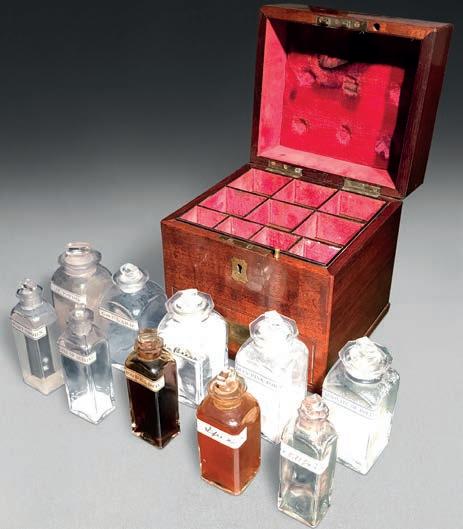

Newspapers of the day were full of advertisements for medicines such as ‘opodeldoc’ (a bottle of which is contained in the larger chest), described in the advertisement below as “esteemed for its superior E cacy as an Embrocation for the Gout and Rheumatism”. e liniment was made of soap in alcohol, to which camphor and sometimes wormwood was added.
Not only were these remedies of unproven e ectiveness and questionable safety, many of them contained powerful narcotics and opiates. Added to which, they could all carry the word “patent”.
One such was James’s Fever Powder, a bottle of which is in the larger chest, one of the most popular medicines of the early 18th century.
Patented in 1746, the remedy – thought to be a mixture of antimony (a poison) and calcium phosphate – was eulogised about by the patients who took it, ranging from the playwright Oliver Goldsmith to George III (who used it to cure his cataracts). Horace Walpole claimed the powders could “cure most complaints that are not mortal, or chronical” and when Goldsmith died at the age of 45 Walpole wrote “I think he might have been saved if he had continued James’s powder, which had much e ect.”
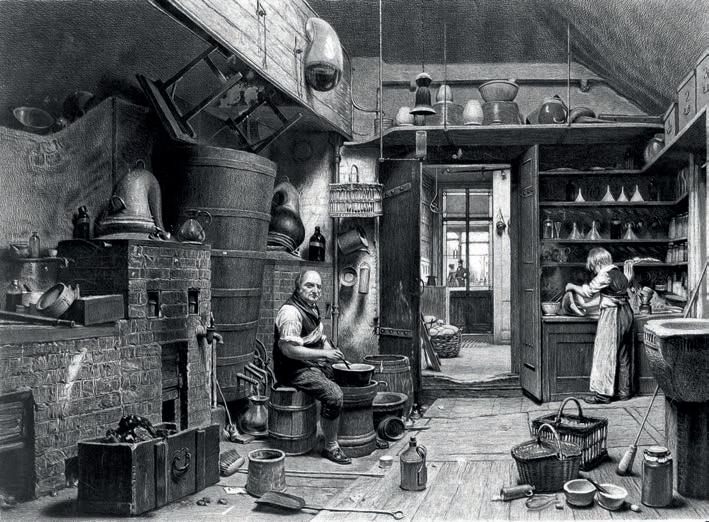
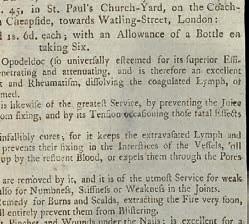

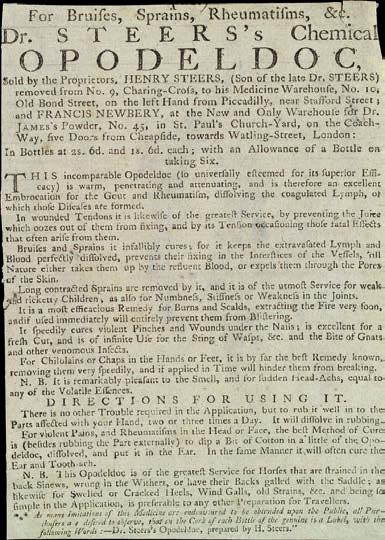


‘But while
the chests are
elegant,
it is in the potions and patented ‘cures’ they contain, including laudanum, tartaric acid, aperitive seeds and, most disturbingly, a phial labelled ‘poison’, that most intrigue me’
Above An apothecary and his apprentice working in the laboratory of John Bell’s pharmacy. Engraving by JG Murray, after WH Hunt, 1842, image courtesy of the Wellcome Collection
Left An advertisement for the cure-all patented medicine opodeldoc, image courtesy of the Wellcome Collection
Below left A bottle of James’s Fever Powder, image courtesy of the Wellcome Collection
Below right omas Rowlandson (1756–1827) e Quack Doctor, Apothecaries Hall, 1814, hand-coloured aquatint and etching, image public domain
A bottle of laudanum, also known as tincture of opium, is also present in the larger chest with a suggested dose of 10 to 30 drops on its label (19 drops being the equivalent to one grain of opium).
Highly addictive, laudanum was used by members of Georgian society to “relieve pain ... to produce sleep ... to allay irritation ... to check excessive secretions ... to support the system ... as a sopori c.”
Until the early 20th century, laudanum was sold without a prescription and was a constituent of many patent medicines. Some of its most notable fans were the poet Samuel Taylor Coleridge and Elizabeth Barrett Browning who started taking it for a bad back.
Luckily, the 19th century saw medicine become more regulated. ere were fewer quacks and barber-surgeons o ering their services. A professionalisation for which, every time I reach for an aspirin or make a doctor’s appointment, I am extremely grateful.
David Harvey is the owner of Witney-based W R Harvey & Co. (Antiques) Ltd. For more details and to view the archived catalogues go to the website www.wrharvey.com
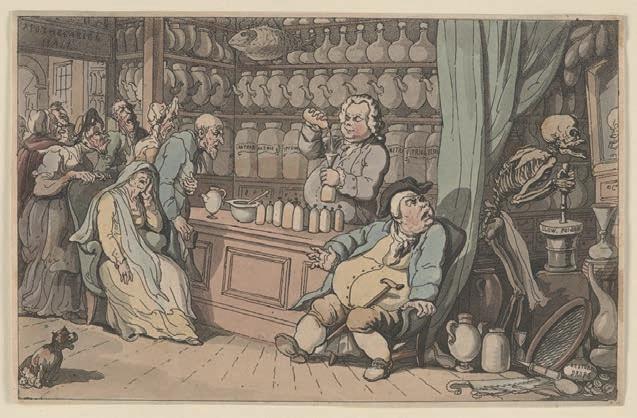
Our marketplace gathers valued objects from auction houses around the world – and delivers them safely to your door. It’s the easiest way to explore, find and buy Valued Objects.
auctionet.com

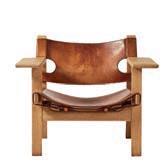
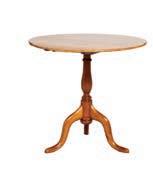
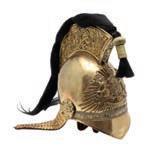
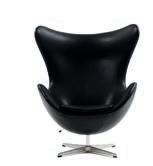

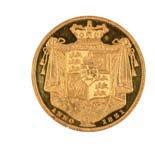
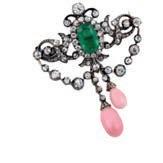
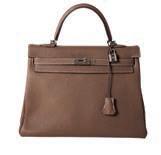
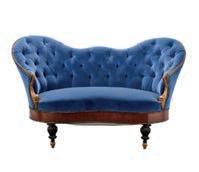

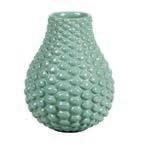
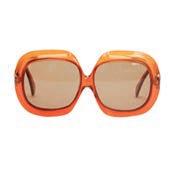
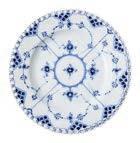

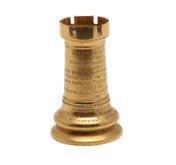



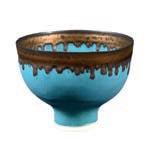


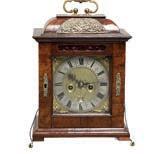


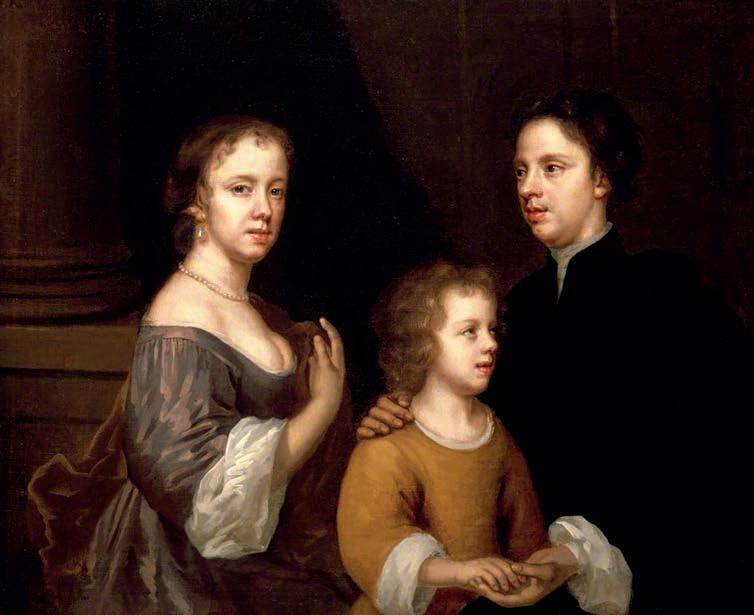
For years female artists struggled to succeed in a man’s world. Not so the leading 17th-century portraitist Mary Beale whose husband and sons both worked for her. Antique Collecting goes behind the scenes at a new exhibition on the site of her former studio
If time travel was possible and visitors to Philip Mould’s Pall Mall gallery this month turned the dial back to Restoration London, what would they see?
Shimmering up from the ether would be the studio of Mary Beale, an amenable family environment overseen by the matriarch herself – Mary Beale (16331699). In contrast with other studios of the day – bustling with apprentices and assistants – the ‘paynting roome’ at the top of the house was a uniquely feminine space. Along with her two young sons, who variously helped her and amused the sitters, her husband worked alongside her mixing her paints, priming canvases, managing the business and looking at ways to lessen her load. It was a genial style of working that clearly worked with some of the most important gentry of the day ocking to her studio, near e Golden Ball, at 18-19 Pall Mall. Today Beale’s home studio is the gallery of the host of BBC’s Fake or Fortune’s, Philip Mould, which
this month is staging the exhibition, Fruit of Friendship showcasing 25 of Beale’s works from public and private collections, including some never seen before in public.
It will also shed light on Beale’s progressive studio practices and highlight its radical reversal of conventional gender roles. In an era when convention expected married gentlewomen to be deferential, modest and virtually silent, the exhibition explores how Mary’s husband Charles, dedicated himself to his wife’s career.
Philip Mould, who over the last 30 years has placed a number of Beale’s rediscovered works in public collections, said: “When we recently discovered the remarkable fact that our gallery is on the site of her London studio, our destiny with Beale felt even more complete. is exhibition celebrates this connection and acknowledgment of a remarkable artistic pioneer.”
She was born Mary Cradock, at Barrow Rectory in Su olk in 1633, the elder daughter of Revd John Cradock (c.1595–1652), a puritan rector and his wife Dorothy. As well as a religious man, Mary’s father was an amateur artist and member of the Painter-Stainers’ Company and his involvement in the nearby artistic scene of Bury St Edmunds makes him the likely candidate for being his daughter’s rst tutor in art, a tradition seen in a number of early female artists, including Artemisia Gentileschi.
What artistic ambitions the young Mary harboured is di cult to know, but one thing is for sure after she married Charles Beale (1631-1705) in 1652, aged 18 – an act which usually sounded the death knell to female
Above Mary Beale (1633-1699) Self Portrait of Mary Beale with Her Husband and Son, late 1650s, Museum of the Home
Right Mary Beale (16331699) Charles Beale, late 1650s, Philip Mould & Company
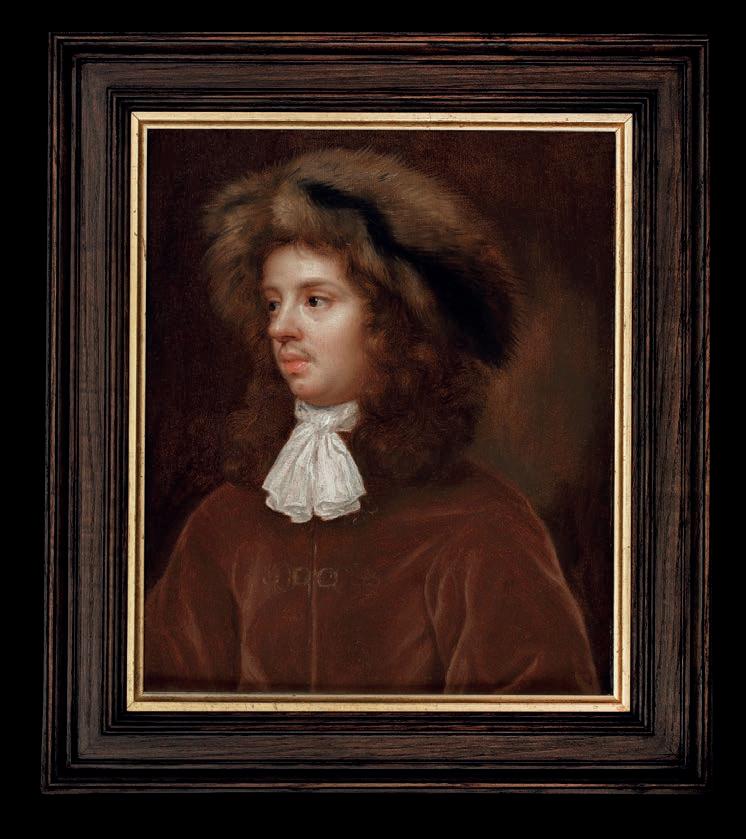
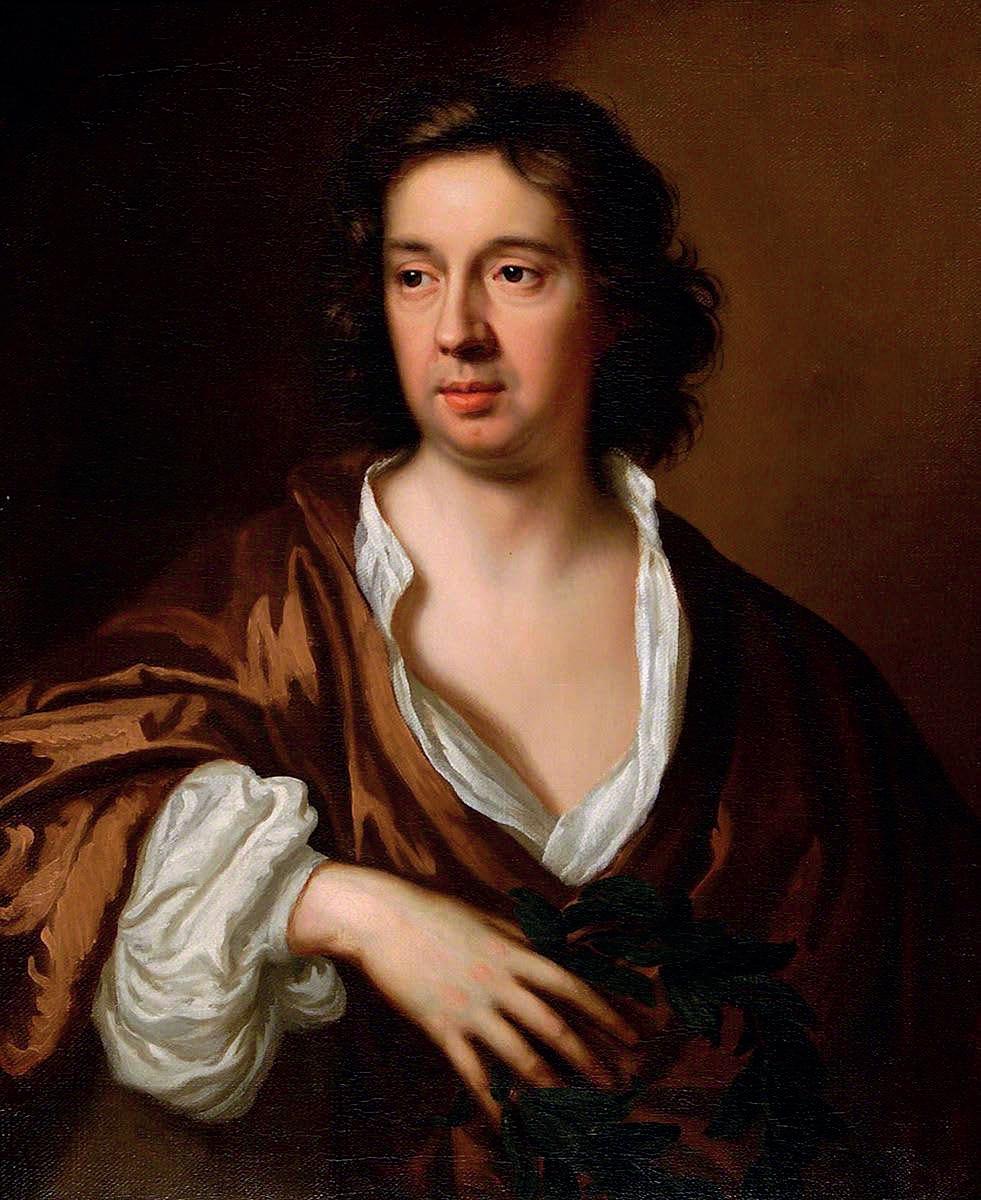

Like his wife, Charles Beale was born into a puritan family in Buckinghamshire. Little is known of his education or early years until 1647 when he started to record his artistic activities in a notebook, Experimentall Seacrets found out in the way of my owne painting – a 24-leaf, leather-bound notebook with entries compiled between 1648 and 1663.
Bound by an artistic persuasion, the union also appears to have been a love match with Charles referring to his wife as his “Dearest and most Indefatigable Heart”.
Shortly after marrying, the couple moved to Covent Garden, later moving to Fleet Street, and began associating with a fashionable circle of artists, intellectuals and clergymen who later became the base of her patronage. In 1656, she gave birth to her rst son Bartholomew (1656-1709) and four years later Charles (1660-1726). Until 1665 Beale’s painting remained purely amateur but, by 1664 Charles’ job at the patents o ce had become insecure and, with the plague threatening, the family left for Albrook, in Otterbourne, Hampshire.
Above Mary Beale (16331699) Charles Beale, 1680s, West Su olk Heritage Service
Above right Charles Beale (1660-1726) Carter, the Colourman, c. 1680, red chalk heightened with touches of black chalk and graphite, image Metropolitan Museum of Art
‘What ambitions the young Mary harboured is difficult to know but one thing is for sure after she married Charles Beale in 1652, aged 18 – an act which usually sounded the death knell to women – Mary’s star began to shine’
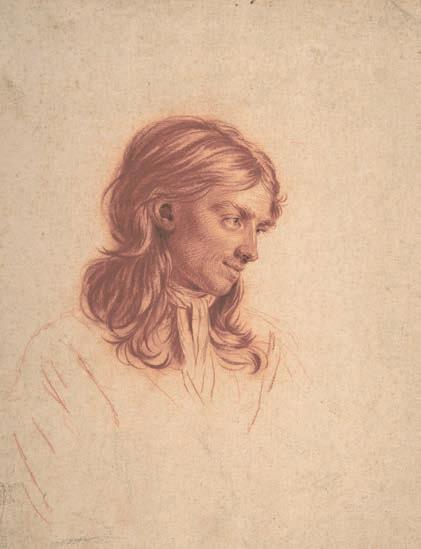
Carter the Colourman
Charles Beale’s almanacs, which documented his wife’s professional and personal affairs in minute detail, are a lasting and invaluable resource.
They are particularly insightful into the technicalities of oil painting of the time. Details record the purchase of 2lbs of ‘excellent deep Terra Vert at 4s 6d a pound’ which was mixed with linseed oil and stored in a pig’s bladder.
One of the merchant families Charles called on for materials were the Carters, made up of a father-and-son selling team who became friends.
This red-chalk study of son George Carter is by Mary’s son Charles Beale the younger who worked on 30 pictures between 1676-1677. He showed such promise he was sent to Thomas Flatman in 1677 to learn the skills of a miniaturist (his miniatures occasionally appear for auction today).
Charles perfected his draftsmanship in drawings, like the one above, made when he was about 20. His choice of red as the primary tone is striking, and its effect is strengthened by black touches that define the pupils, nostrils, and ear.
At Albrook Mary wrote her Essay on Friendship. Both Mary and Charles strongly believed in the concept of equality between husband and wife. Without such, Mary believed, true friendship could not exist. She wrote: “...For when God had at rst created him, it is not Fit said he, that Man should be alone, so then he gave him Eve, to be a meet help, and what can that imply but that God gave her for a Friend as well as for a wife.”
When the Beales returned to the capital in 1670 (Mary aged 38 and her sons aged 14 and 10) she put the theory
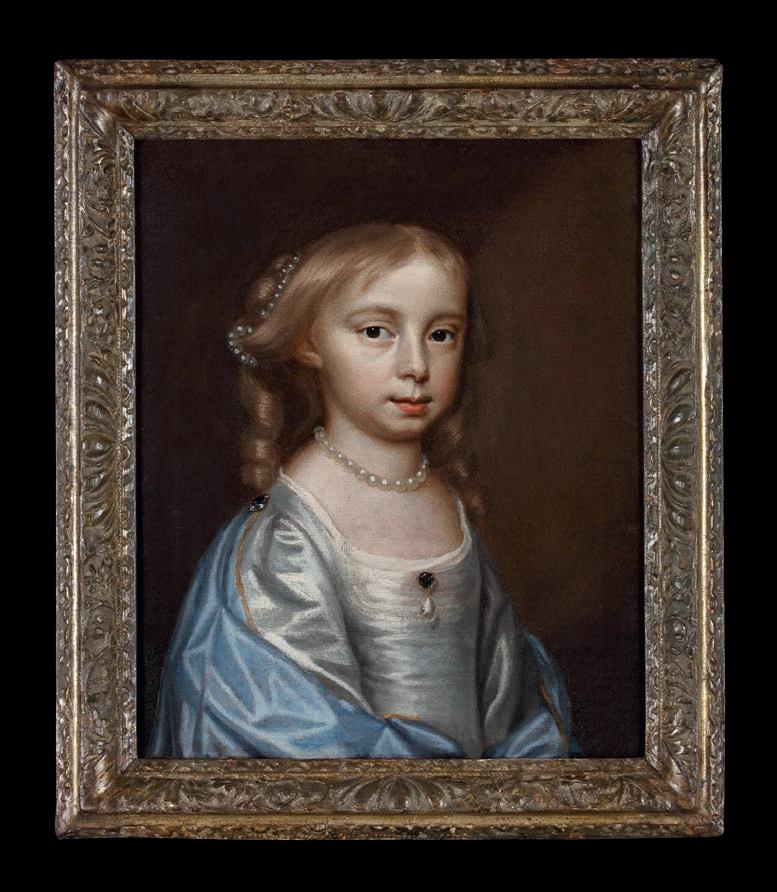
Painter’, becoming the chief supporter of her family in their rented house in Pall Mall.
London’s population in 1670 was around 500,000, making it one of the largest cities in Europe. In the aftermath of the Restoration of Charles II the capital was rife with artists and scientists keen to gain the ear of the court. It was a bustling cultural centre, with theatres, taverns, and co eehouses providing entertainment. As before, the Beales’ circle of friends included courtiers, intellectuals, artists and literary gures. ese were the men, and their wives, who Charles termed ‘persons of quality’ in his studio records, whose formal portraits Mary would be commissioned to paint.
But in the 1660s it was one thing for a woman to paint portraits of her family and friends for love rather than money, but it was a di erent proposition for her to invite male strangers into her home for commercial purposes.
To achieve respectability Mary had to call on and expand her network of friends. In this way the ‘persons of quality’ who came to sit for her could be perceived as guests, rather than paying customers. She also made the most of the courtly culture of gift exchange, allowing her to give portraits and texts as gestures of a ection, but also as payment in kind for favours and loans.
Philip Mould said: “Mary Beale pioneered a practice
that was both supported by, and was reliant on, her immediate circle; from friendship and trust established within the home between her husband and children, to the bonds she created throughout her wider circle of neighbours, friends, and fellow artists.”
One of the key friendships she enjoyed was with Sir Peter Lely (1618-1680) Charles I and II’s court painter. By 1672 Lely, who Mary may have met when he visited Su olk in the 1640s (and some say who encouraged her to paint), had visited her London studio and later allowed her to study his painting techniques. is was a remarkable opportunity and she even created a market selling replicas of his portraits. In fact so similar are their styles, Mary’s work has on occasion been wrongly attributed to Lely.
Mary’s circle also included members of the puritan clergy, notably Edward Stilling eet, who was to become Dean of St Paul’s Cathedral and Bishop of Worcester.
Religion was an important element of family life. e diaries of the Beales’ close friend Samuel Woodforde reveals Mary as a “sympathetic and hospitable” friend and the household as a ‘puritanical’ one, regularly setting aside 10 per cent of their income for the poor.
But despite the charity, her prices were competitive: £10 for a three-quarter-length and £5 for a half-length
Above Mary Beale (1633-1699) Elizabeth Jones (c.1664-1681), early 1670s, Philip Mould & Company
Right Mary Beale (1633-1699) Portrait of Anne Sotheby (née Robinson) (1657-1727), 1677, Philip Mould & Company


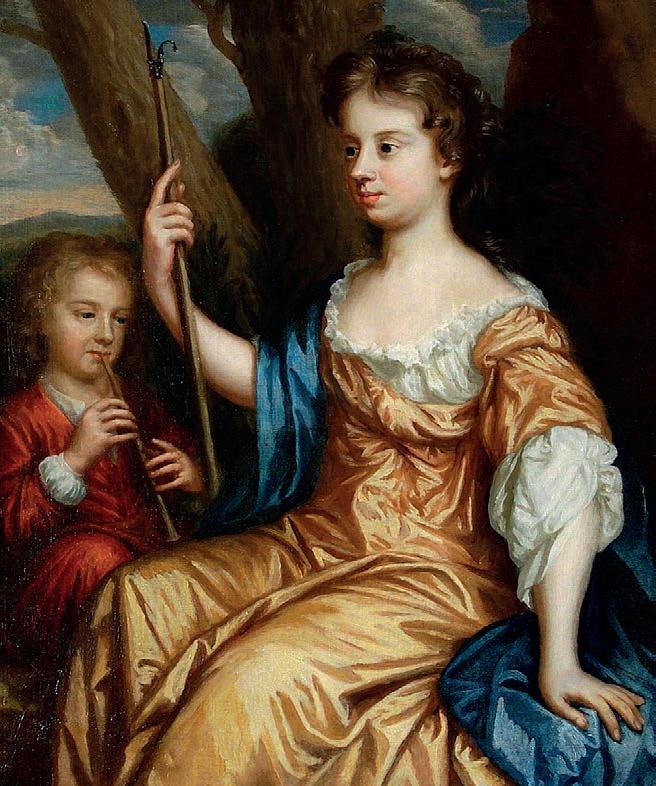
employed and trained a number of female studio assistants, including Sarah Curtis (1676-1743) who later pursued a successful career as an artist. While Bartholomew would become a physician, Charles went on to nd success in miniatures.
Meanwhile, Charles continued to assist with the practical side of running a studio, including chemical experiments to mix expensive colours more coste ectively, in order to make commissions more pro table. (As well as painting on expensive imported linen Mary also used sacking, and even, at times, on onion bags and striped bed ticking fabric.)
In 1677 alone, her most pro table year, Charles’ records show Mary was commissioned to paint 83 portraits. While six years previously her annual income totalled £118 5s., in 1677 it had risen to £429.
Her workload was relentless. In 1677, a snippet of her schedule records: “1st Mr Moore, third sitting two hrs.
Above Mary Beale (16331699) Self Portrait as a Shepherdess, West Su olk Heritage Service
Above Right Mary Beale (1633-1699) Portrait of Bartholomew Beale (1656-1709). It sold for £100,000 in 2021, image courtesy of Reeman Dansie
Below right Mary Beale (1633-1699) Portrait of Charles Beale (16601714) c. 1680, which sold for £8,365, image courtesy of Bonhams
‘In the 1660s it was one thing for a woman to paint portraits of her family and friends for love rather than money but it was a different proposition for her to invite male strangers into her home for commercial purposes’
Until the 1975 exhibition The Excellent Mrs. Mary Beale at the Geffrye Museum (now Museum of Home) in London, Beale’s name had almost been assigned to the scrapheap. Not so today. As museums rush to redress the balance of women painters in their collections, there has been a frenzy to acquire her work.
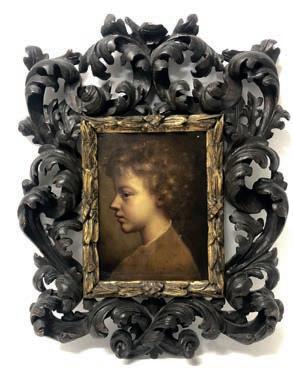
One noteworthy sale was at the Essex auction house Reeman Dansie which catalogued a picture of a young boy with tousled chestnut brown hair and twinkling brown eyes as “18th-century Italian School”, giving it an estimate of £400-£600.
But eagle-eyed collectors realised its similarity to a number of known portraits by Beale of her son Bartholomew, one of which is on display at Tate Britain this month, with another selling for £75,000 at Sotheby’s in July 2019.
Its overblown, carved Florentine frame was unidentified but did not fool Philip Mould who recognised the sleeper as a lost work by Beale.
After strenuous competition with the bidding lasting four minutes, it was eventually knocked down at £100,000, representing a new high for the artist at auction. To show the appreciation in prices for her work, a portrait of her younger son, Charles Beale, aged around 20, sold for just £8,365 at Bonhams’ sale in 2004.

Feb 3rd Mrs Twisden’s picture. Feb 5th Mrs Fitzjames face and breast nished. Feb 7th Mr Rog Twisden’s face carried a good way. Feb 8th Mrs Twisden third sitting. Feb 9th Countess of Derby face in little well laid in. Feb 10th Countess of Derby face and breast. Feb 12th Countess Derby scumbled and re-touched. Feb 13th Mrs Twisden’s face laid in for nishing.”
But the good times couldn’t last. e decline in demand for Mary’s portraits coincided with the death of Lely in 1680. By 1688, the year of the ‘Bloodless Revolution’ that deposed James II in favour of his Protestant daughter Mary and her Dutch husband, William of Orange, her

This month Tate Britain unveils a celebration of 400 years of women artists from 1520 to 1920, including work by Mary Beale who joins the rollcall of 100 trailblazers.
Other leading lights include Angelica Kauffman (1741-1807) who, with Mary Moser (1744-1819), were among the two female founding members of the Royal Academy of Arts in 1768.
The exhibition starts at the Tudor court with Levina Teerlinc (1510-1576) the Flemish-born painter who was the most important miniaturist at the
style was out of favour. She died in London in 1699 and was buried in St James’s Church, Piccadilly. Charles outlived his wife by ve years.
In an era stacked high with obstacles to women’s ful lment both artistically and economically, her life and career from the daughter of a rural curate to professional portraitist is a nothing short of remarkable.
Fruit of Friendship is on at the Philip Mould Gallery, Pall Mall, from April 25 until July 19. For more details go to www.philipmould.com. Beale’s work can also be seen in this month’s Now You See Us exibition at Tate Britain (see below for details) while Moyses Hall in Bury St Edmunds in Su olk has a ne collection of her paintings.
English court between Hans Holbein the Younger and Nicholas Hilliard. The exhibition brings together her miniatures for the first time in four decades, along with Esther Inglis (1571-1624), whose manuscripts contain Britain’s earliest known self-portraits by a woman artist.
Moving into the 17th century, focus turns to one of art history’s most celebrated women artist: Artemisia Gentileschi (15931653) who created major works in London at the court of Charles I, including the recently rediscovered Susannah and the Elders, 16381640. Alongside Beale’s achievements, the success of two contemporary female portraitists –Joan Carlile (1606-1679) and Maria Verelst (1680–1744) – are considered.
A gallery spokesperson said: “These women’s careers were as varied as the works they produced: some prevailed over genres deemed suitable for women like watercolour landscapes, flower painting and domestic scenes. Others dared to take on subjects dominated by men like battle scenes and the nude.”
Like Mary Beale, some women did succeed in carving out a career including
the miniaturist Sarah Biffin (1784-1850), who painted with her mouth, having been born without arms and legs.
The work of the botanical illustrator Augusta Withers (1793-1877), who was employed by the Horticultural Society and went on to be one of the founders of the Society of Female Artists in 1857, is also celebrated.
The exhibition also considers women’s connection to activism, including the satire Woman’s Work by the artist and humourist Florence Claxton (18381920). The life and work of the English educationalist and artist, Barbara Bodichon (1827-1891) who campaigned for women’s rights – resulting in women being admitted to the Royal Academy Schools – is also brought into focus at the exhibition.
Left Mary Beale (1633-1699) Sketch of the Artist’s Son, Bartholomew Beale (1656-1709), Facing Left, c. 1660, on show at Now You See Us, Photo Tate
Below Mary Moser (1744-1819) Standing Female Nude. e Fitzwilliam Museum, Cambridge
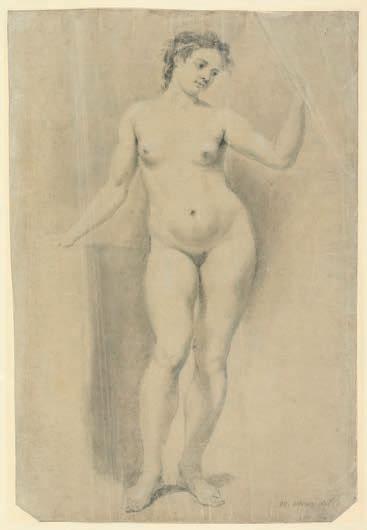
We asked Ellie Smith curator of the exhibition Fruit of Friendship for her insights into the artist

AQWhat other historic sources were valuable for informing the exhibition?

Mary Beale’s husband, Charles, meticulously chronicled her daily work in the studio. The diaries, two of which survive in full (others survive in part through notes taken by George Vertue, and published by the Walpole Society), are invaluable primary sources. They detail which portraits Beale was working on at any given time, record her experiments with different materials, the payments her children received for their work in the studio and Charles’ distribution of pigments.
QThere are several thoughts as to the artists who taught the young Mary – who do you think were the most important?
AThere is no conclusive evidence to allow us to say with any certainty who Beale trained with. It has been purported that she received training from Sir Peter Lely and Robert Walker but neither of these have been confirmed through primary evidence. Her father was an amateur painter, so it is highly possible that she was introduced to painting through him.
AQHow vital was it for Mary to be seen as respectable?
Beale’s entire career relied on her status as a virtuous, respectable woman. Married women were not expected to earn a living, in fact they were often prevented from doing so, which meant that it was essential for Beale to ‘prove’ her respectability, and slowly build her reputation. She painted members of the Church, who would have greatly bolstered her reputational standing as a woman of virtue.
Q
The exhibition is called Fruit of Friendship –how important were Beale’s relationships both in terms of respectability and networking?
A Beale’s friendships played a vital role in building her reputation. Unlike many of her male contemporaries, who could afford to be brazen in their self-promotion, Beale adopted a more nuanced approach, which relied heavily on her close connections. In slowing building her clientele, through family and friends, Beale’s artworks found their way into the homes of some of London’s most privileged and wealthy individuals. It appears that this had a snowball effect, which allowed her reputation to grow.
Q
In which portraits do we see Beale at her best?
A This, of course, depends on the eye of the beholder. At the gallery, we think that her
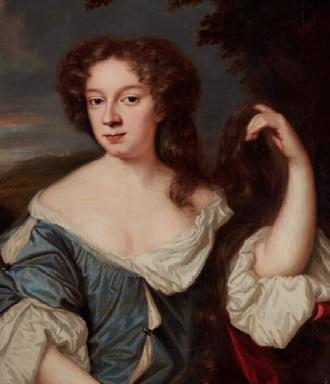

portraits of her immediate family – her sons and husband – constitute some of her most experimental and emotive paintings. These differ from the glitz and glamour of her portraits of high society, which often used poses and patterns from Lely’s portraits. Her familial portraits offer an insight into her determination to perfect and develop her skills as a portrait artist –numerous paintings show her family in different poses and with a variety of expressions. These works, which were not a money-making exercise, are a true record of her determination to excel in her career.
Q How much of a family affair were her works? What part did her sons play?
ABy at least 1676, Beale’s sons were playing a vital part in their mother’s studio. They were paid, per painting, for their contributions towards the drapery and oval surrounds which have become synonymous with her work. Painting drapery was a typical task given to studio assistants during the 17th century – both Lely and Godfrey Kneller employed assistants in their studios. An excellent example of this in our exhibition is Beale’s portrait of Anne Sotheby; Charles Jnr was paid £1 for the assistance with the drapery in this instance.
Q What are the hallmarks of a typical Mary Beale portrait?
A Brightly lit, warm colouring and clear facial modelling, and often the inclusion of ornamental ovals surrounding her half-length portraits.
Above left Mary Beale (1633-1699) half length portrait of a lady in blue robes holding her long hair, sold for £10,000 in 2020, image courtesy of Lyon & Turnbull
Above right Mary Beale (1633-1699) Portrait of a Young Boy, in a carved and gilt Sunderland frame, it sold for £9,000 in 2008, image courtesy of Bonhams
‘“At
Q What effect will the current exhibitions have on the market for her work?
A We have been dealing in Mary Beale for over 35 years and have seen the market rise steadily. This has also increased notably of late because of the rise of interest in women painters. We cannot predict the commercial impact of this exhibition – this is not our primary motivation. Our aim is to bring into the public domain the tremendous research undertaken over the last 10 years or so which will further consolidate her emotive position in British art history.
the gallery, we think her portraits of her immediate family – her sons and husband –constitute some of her most experimental and emotive paintings. These differ from the glitz and glamour of her portraits of high society’”

ey were the robust, bright-yellow kings of the sandpit – so Irita Marriott was delighted when a collection of Tonka toys revved into sight

For men of a certain age – and a few women – the sight of a Tonka dump truck can make them go weak at the knees. So imagine the e ect on the saleroom when a consignment of 1,500 Tonka toys from a Yorkshire collector, one of the largest collections in the UK, came our way. Today, as the baby boomers who played with them sink into their second childhoods, these mid-century modern vehicles are becoming more and more popular at auction.
Tonka Toys were a celebration of both the internal combustion engine and pioneering spirit of US industrialisation. And as such represent an iconic part of American culture. e company was founded in 1946 by three Minnesota men: Lynn Everett Baker (1899-1964) Avery F. Crounse (1890-1960) and Alvin F. Tesch (19152000). Tesch was a pressed metal craftsman, and when the trio came together it was under the name Mound Metalcraft. eir intention was to make the most of a surplus of cheap steel after WWII, by producing tie racks, garden tools and other pressed metalworks.
But, in 1947, they acquired the patents to several metal toys and when they were joined soon after by the toy designer Charles M. Groschen (1921-2012) they began manufacturing toy metal vehicles.
Baker and Crounse had one design goal: the toys had to be as detailed and realistic as possible, complete with working moving parts and on a 1:18 scale. eir attention to detail paid o and a year later toys were the company’s most pro table division. By 1955 Mound Metalcraft had changed its name to Tonka Toys Incorporated. e name comes from “Tanka”, which means “great” or “big” in Dakota Sioux, with nearby Lake Minnetonka represented by a wavy blue line in the earliest company logos.
e toys were durable (they were made out of 20-gauge automotive grade steel) and soon caught on with valueseeking, post-war parents. In fact, the Steam Shovel no. 100 and its Crane and Clam no. 150, sold 37,000 units in their rst year, outstripping tool sales.
Each truck was designed around the same one-piece steel cab with a baked-enamel nish, which rotated on a base that rolled on four real rubber wheels.
As the years progressed, Tonka’s line-up became more diverse. Designer Groschen visited local re departments and companies to make the toys as lifelike as possible, with the hose on the re truck able to squirt up to 30ft. Utility vehicles, such as the trencher and the grader, were also introduced. Advertisements also re ected the toys’ durability with one famous campaign from the 1970s showing an elephant standing on a Tonka truck which remains steadfastly uncrushed.
Above ree examples of the iconic Mighty Dump truck and part of the 1,500-strong collection
Below right Estimates vary from £10 to £60, images courtesy of Irita Marriott Auctioneers
But it was in 1964 that the agship Tonka vehicle – the Mighty Dump, designed by Groschen, was introduced. It was the beginning of a line of jumbo trucks which over the next seven years expanded to include 13 trucks, including the Wrecker, Bulldozer and Loadmaster. As many as 15 million Mighty Dump trucks have been sold over the years as it became Tonka’s best-selling toy for the rest of the century. Weighing in at 11lbs, the beefed-up vehicle was large enough for a child to sit on. Happy memories for any child lucky enough to own one.
e collection of Tonka toys will be sold over upcoming months at Irita’s saleroom in Melbourn, Derbyshire, with the rst lots going under the hammer on May 15, for more details go to www.iritamarriottauctioneers.co.uk

‘Advertisements also reflected the toys’ durability with one famous campaign from the 1970s showing an elephant standing on a Tonka truck which remains steadfastly uncrushed’

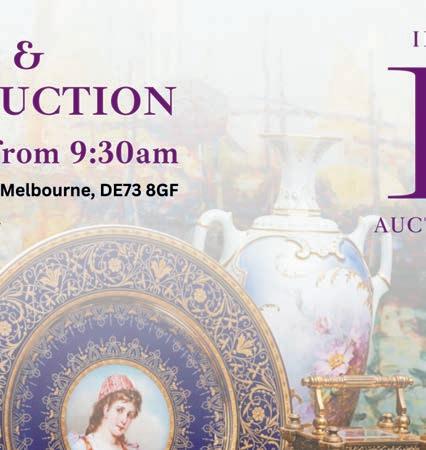





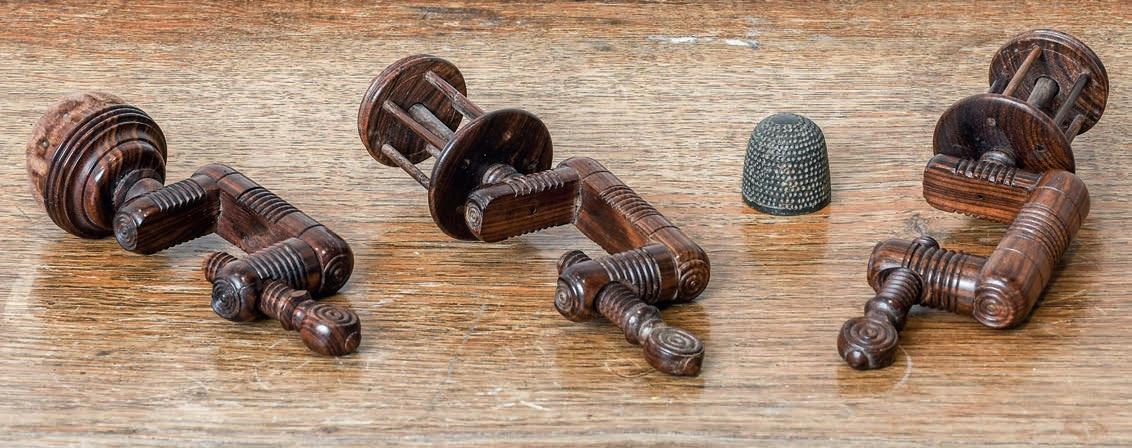
A lifetime collection of treen goes under hammer in North Yorkshire this month with estimates starting at just £80
For some collectors it is the rich and ornate that attracts. For others it is the minutia of domestic life that is prized above all else. is second category is the one to which David and Hilary Hide belonged, with their lifelong collection of treen going under the hammer in North Yorkshire. It is a tting location as the north was where much of their collection originated.
Until Edward Pinto wrote about treen in the 1960s, most collectors paid little regard to these pieces of domestic ware. Now they are very collectable and can be highly sought after in the saleroom.
e Hides had wide ranging interests but were particularly enthusiastic collectors of handmade, pre-industrial and vernacular British artefacts, which shed light on domestic life both at work and play.
Prior to the widespread introduction of pewter, silver or ceramics in the late 17th century, most household items would have been made of wood. e scope of objects was vast, including candlesticks, egg cups, lemon squeezers, spoons, plates, corkscrews, darning mushrooms and wooden tools.
Above ree 19th-century turned rosewood sewing clamps, comprising two winding clamps and one pin cushion, 14.5cm, and a 17th-century bronze thimble. e lot has an estimate of £100£150
Right A selection of treen from the Hide
At the more decorative end of the scale came gingerbread moulds, love spoons and snu boxes. Most pieces were fashioned from fruitwood or close-grained wood, such as sycamore, beech and boxwood, although ne pieces can be found in more exotic species like rosewood or lignum vitae – a dense wood imported from the Caribbean.
Most were su ciently small to be made from a single piece of wood by turning on a pole lathe (while some say the word ‘treen’ comes from “of the tree” or wooden; others say it derives from the word ‘turned’.)
Although their interests were wide, the Hides had speci c and detailed knowledge of the items which they purchased. Where possible, they bought from dealers and auctions local to the area where the items originated, so even if detailed provenance could not be established –treen is never signed by its maker – they were able to tell where they originated.
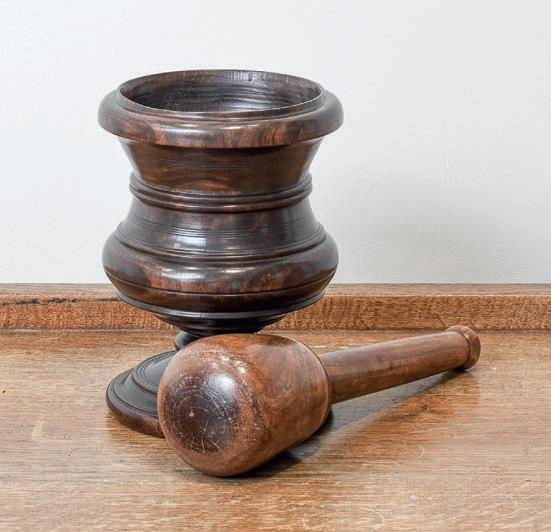
Left An 18th-century lignum vitae mortar on a pedestal and circular foot, 18.5cm high. It comes with a hardwood pestle 26cm long. It has an estimate of £300-£500
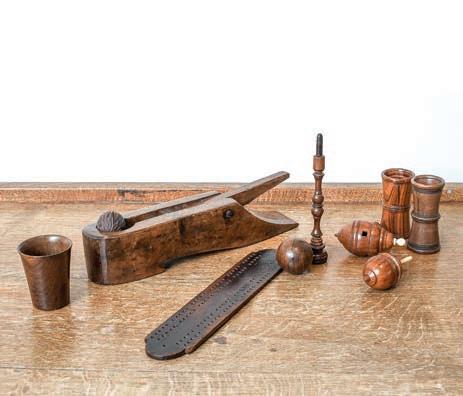
‘David
specialised in domestic ironwork while Hilary delighted in her “pre-plastic” kitchen. She loved small pieces and would derive as much joy from a humble handmade clothes peg as others might from a more refined item’
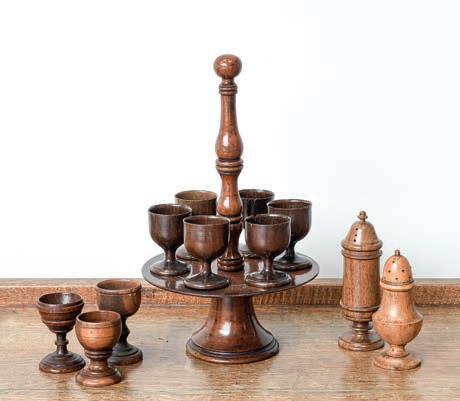
eir geographical focus was mainly the north of England, particularly the Lake District, the Yorkshire Dales and Northumberland, but they also bought from dealers in the Cotswolds. e Hides’ interest was more than mere aesthetic, although they loved the treen and ironwork for those qualities as well as the craftsmanship, they were very interested in the history of domestic life. e couple appreciated the lessons in wood types and carving techniques the pieces were able to provide.
While David specialised in domestic ironwork, Hilary delighted in her “pre-plastic” kitchen. She loved small pieces and would derive the same joy from a humble handmade clothes peg as others would from a more re ned item.
WHAT: The David and Hilary Hide Collection of Treen and Metalware
Where: Tennants, The Auction Centre, Harmby Road, Leyburn, North Yorkshire DL8 5SG
When: May 18
Viewing: Wednesday May 15 to Friday May 17 from 10am to 5pm and online at www. tennants.co.uk
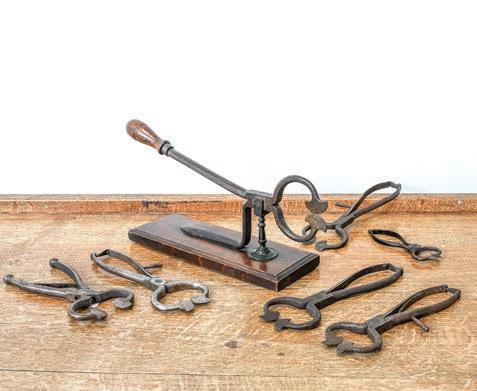
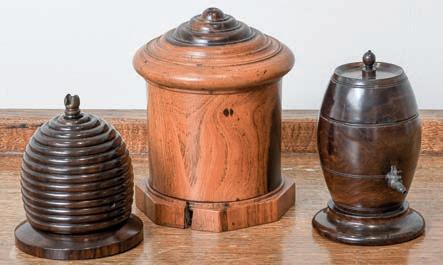
Three 19th-century string boxes are among the pieces on offer. While string has limited uses today, it was a necessity in Georgian, Victorian and Edwardian households and shops. Every parcel required it and its culinary uses, from puddings to roasts, were also numerous. Cord would have been kept in the body of the box, which unscrewed to be refilled. String was then pulled from a knop at the top with the best versions having a cutter.
Boxes came in various shapes with the most popular being barrel, beehive, egg and acorn. The majority of them, like these examples, were made from lignum vitae.
We asked Tennants’ auctioneer and valuer Jody Beighton for his sale highlights

How important is the collection – what makes it special?
The joy of this collection is the sheer quantity of really good pieces, carefully selected and curated over the course of a lifetime. The collectors’ passion shines through; it is always a privilege to handle a much-loved collection and find each piece a new home.
How is the current market for treen?
Quality and unusual items always sell well from any discipline and treen is no different. There are some very quirky pieces in the collection, too, which are sure to attract a great deal of attention.
What makes the category so special?
With new materials and technology, as well as the desire for convenience, making treen really is a dead art. So from a historic perspective there will alway be an interest. Treen is also a wonderfully tactile with a deep, rich patina making every piece unique. While we may never know a piece’s true history, these artefacts are tangible reminders of long-forgotten lives.
What’s the most unusual item of treen you have come across?
Top left An early 19th-century fruitwood egg stand and six cups, 30.5cm high, with three other egg cups and two pepperettes. ey have an estimate of £100-£150
Middle left A pair of 19th-century steel sugar cutters, mounted on a moulded rectangular wooden plinth, 28cm long and six handheld pairs. ey have an estimate of £80-£120
Above left ree 19th-century lignum vitae string boxes one in the shape of a beehive (with a cutter), one in the shape of a barrel with the string dispensing from a tap and a larger pillar box-shaped design. e trio has an estimate of £100-£150
Cats always fascinate me, and there are three nice mahogany examples included in the collection. Cats are turned six-spoked stands; metal ones were used to warm plates before a fire, while wooden designs were used to hold bowls and work baskets – and even witch’s glass balls. It is thought they were called cats as, due to their even-spoked design, they always landed on their feet.
Have you got a favourite lot?
There is a fabulous set of three, turned sewing clamps in the sale; the clamp mechanisms are all identical, but two have bobbin holders on top while one has a pin cushion. They exhibit great craftsmanship and it is so unusual to get a set of such objects.
Where is interest likely to come from?
While there are some known specialist collectors, both in the UK and overseas, treen has a wide popularity with private buyers looking for something small and aesthetically pleasing to have in their home.



With this year marking the 80th-anniversary of the Great Escape, Eric Knowles is staggered by a swagger stick owned by an o cer who inspired a character in the famous lm
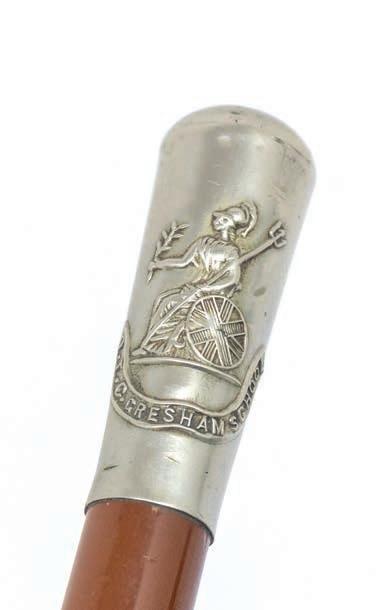
Aswagger stick which belonged to a Great Escape hero, RAF Flying O cer Marcel Zillessen, goes under the hammer in Derbyshire this month. Zillessen was last in the queue of 200 men waiting to crawl through the famous tunnel at Stalag Luft III, but the alarm was raised before his turn came. His central role in the audacious plan was the inspiration for James Garner’s ‘Scrounger’ character in the 1963 classic lm. But Zillessen’s failure to make it out of the tunnel no doubt saved his life.
Of the 76 men who made it to freedom, 73 were recaptured within three days, of whom 50 were executed on Hitler’s orders. Only three men got away. Zillessen, who died in 1999 aged 81, remained in the camp until the war was nearing its end, when thousands of POWs were forced to march in winter from the camp in Sagan – now Zagan in Poland – to Spremberg in eastern Germany.
e stick came to light close to the date of the 80th anniversary of the famous break out, on the night of March 24 to 25 in 1944, after languishing for two decades in a cupboard, having been given to the seller’s son by a friend of his mother-in-law in the 1990s.
e stick, a short crop carried by a uniformed person as a symbol of authority, had belonged to her late husband who, it is speculated, knew Zillessen at Gresham
Left e pommel bears the badge of Gresham School’s O cer Training Corps and the words ‘Gresham’ and ‘Holt’, the latter being the location of the Gresham School in Norfolk
Below left e 70.3cm-long swagger stick has a lacquered malacca cane body, brass ferrule and nickel pommel
Below right A photo of prisoners in Stalag Luft III owned by one of its inmates, RAF Flight Lieutenant Viv Phillips which sold at Hansons in 2019
cer Training Corps in Norfolk.
Zillessen was born in Northampton to a German father and Irish mother and attended Gresham School from 1930-1933, becoming a member of its O cer Training Corps from the ages of 13 to 16. It’s unknown what rank the young Zillessen held during his time in the OTC but this swagger stick is a memento of his time there.
Later, Zillessen studied in Berlin and became a uent German speaker, a skill that paid dividends during his time spent as a POW. In 1943, while piloting a Hurricane in North Africa, his plane was shot down. Zillessen ended up in the Luftwa e-run Stalag Luft III, which had opened the year before and held air forces personnel only.
His uency in German helped him gain favours from his captors who provided him with pens, paper and ink later used to forge travel documents.
At its height the infamous camp, which covered 59 acres and had ve miles of perimeter fencing, held 10,000 prisoners. It took up to 600 prisoners to dig the three tunnels used in the escape which were named Tom, Dick and Harry. In Hollywood style, the famous lm depicted the three prisoners who escaped to freedom as British, Polish, and Australian. In reality, they were Norwegian (Jens Müller and Per Bergsland) and Dutch (Bram van der Stok). In fact, no Americans took part in the escape.
In 2019, a diary penned by RAF Flight Lieutenant Viv Phillips, an inmate of Stalag Luft III, sold for £13,500 at Hansons Auctioneers. As well as anecdotes, sketches, cartoons and poems, it contained black and white photos of men held in the camp – the characters who played their part in one of the greatest prison escapes of all time.
e swagger stick has an estimate of £100-£150 at Hansons’ medals and militaria auction on May 15. As well as appearing in a number of TV programmes, Eric Knowles is a consultant for the auction house in Etwall, Derbyshire.
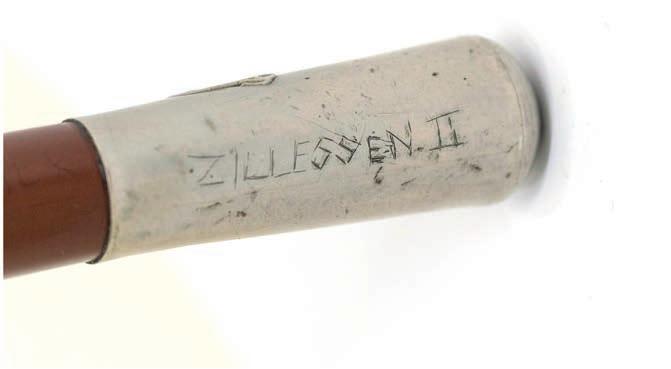

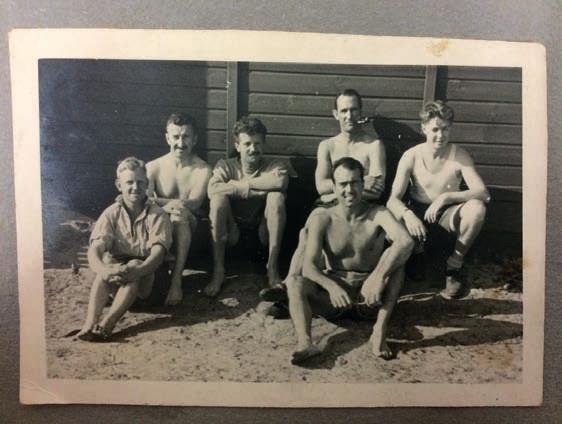
‘Zillessen’s central role in the audacious plan was the inspiration for James Garner’s ‘Scrounger’ from the 1963 classic film. His failure to make it out of the tunnel no doubt saved his life as only three escapees survived the escape’
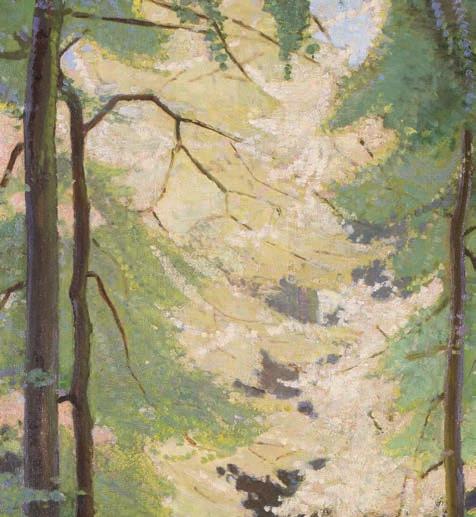
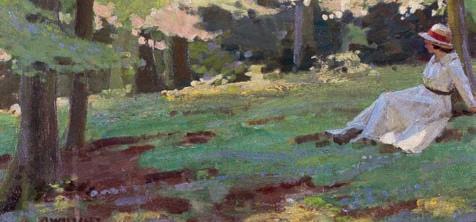



THURSDAY 16 TH MAY | 09:30 BST ALL ENQUIRIES +44 (0)207 431 9445 info@dawsonsauctions.co.uk www.dawsonsauctions.co.uk


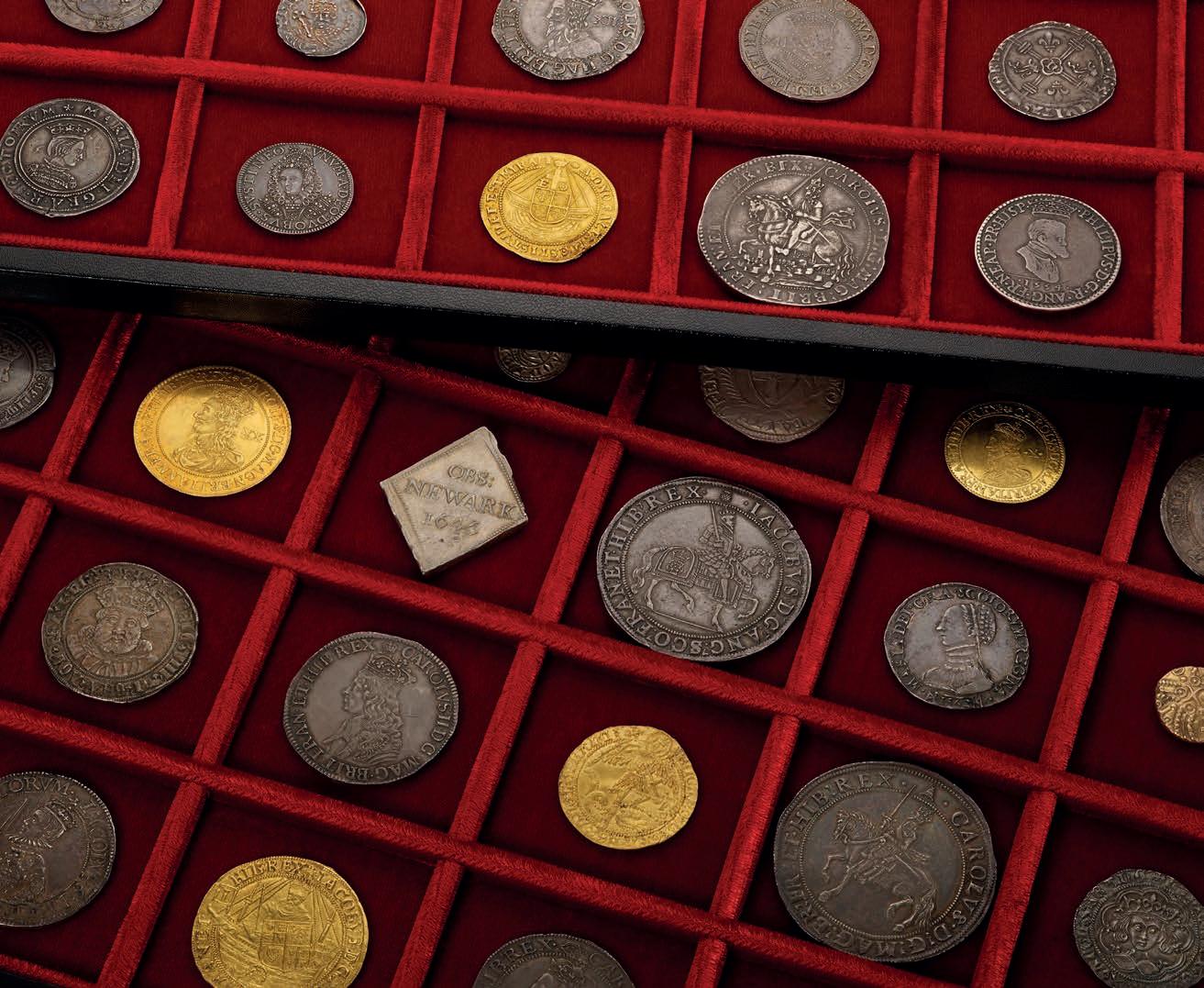
For many collectors nothing is more redolent of a country’s history than its coinage. A remarkable single-owner collection going under the hammer this month marks some of the UK’s landmark events
There are some lengths most collectors will go to secure a piece. And then there are some rather unreasonable lengths. When it came to owning a particular Roman coin Geo rey Cope, part of whose lifetime collection is up for sale this month, was prepared to go further than most. In this case mortgaging his home. He confessed: “Prior to the sale, I deposited the deeds of our house to get a loan.”
But for Leeds-born Cope, whose collection spans millennia of British history from the Celts and Romans to
Above A selection of British coins from the Cope Collection. All images, unless otherwise stated, © Stephen Wakeham
the Tudors, there was more to a coin than its worth.
Cope was enraptured by their ability to capture the history of the age in minute detail and beauty.
He said: “Old coins tell great stories, and the art and history behind each piece holds great allure. e art of numismatics is a continuing love. Coins are the nest examples of miniature art.”
Cope secured the Roman coin – a sestertius of Agrippina the Elder – which has an estimate of £65,000 in this month’s sale.
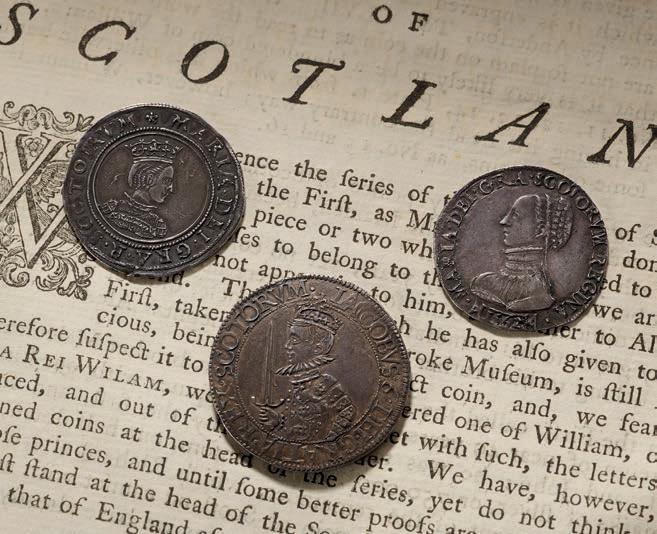
Cope’s journey as a collector began at the age of 12. Rummaging in an antique shop after school he came across an 1887 Queen Victoria half-crown.
By 1979 he’d found his way into the realm of ancient coins, with Roman bronzes among his many loves.
While he was fond of certain denominations, such as crowns, shillings, farthings and sestertii, his collection was not formed systematically. Instead, he would buy what particularly caught his eye and was in great condition.
Along with the joy of shaping his collection came the joy of sharing his passion with his two sons, Simon and Jonathan. Simon Cope said: “To be sat by his side in the auction room when he bought a major rarity, such as the Petition Crown, or a great sestertius, was a major life event for both him and us.”
e collection, made up of 170 ancient Roman bronze coins and more than 800 British coins, goes under the hammer this month in Switzerland in the rst of two sales, with the second scheduled for October.
Director of Numismatica Ars Classica, Arturo Russo, said: “ e Cope Collection contains some of the nest Roman and British specimens in existence. ese coins are spectacular not only for their artistic representations of important moments in Roman and British national history, but also for their pedigree.”
Above Selection of Scottish coins from the Cope Collection
Below right Petition Crown of Charles II from the Cope Collection
Bottom right e reverse of the Petition Crown of Charles II from the Cope Collection
e most valuable and sought after coin in the Cope collection is the Petition Crown of Charles II, which is the highest independently graded of the only 16 known to exist. e crown has an estimate of £585,000 (although earlier this year a similar coin sold for £760,000 in America).
e coin was struck by celebrated medallist omas Simon (c. 1623-1665) and created in 1663 to ‘petition’ the king to rehire him as the chief engraver at the Royal Mint. Following the Restoration, Charles II ordered trials for a milled coinage from the newly-appointed Dutch engravers, the Roettier brothers. But Simon, aggrieved he hadn’t been given the commission, was determined to win the king over and be chosen as the o cial designer with his clever concepts.
Making use of new mechanical technology, Simon printed a message around the edge of the coin entreating the king to “compare this his tryall piece with the Dutch” but the real strength is the striking portrait of the king.
As well as the nely draped fabric of his collar, it is so detailed as to show the muscularity of the Charles’ neck even displaying his veins.
e detail continues on the reverse with interlinked ‘c’s and the shields of England, Scotland, Ireland, and France (with the Order of the Garter at the centre).
But sadly for Simon his e ort was in vain and his petition was ultimately unsuccessful, with the king preferring the work of the Roettier brothers who had assisted him while he was exiled in Holland.

‘As well as showing the finely draped fabric of his collar, the Petition Crown is so detailed as to show the muscularity of Charles’ neck even displaying his veins. The detail continues on the reverse with interlinked ‘c’s and the shields of England, Scotland, Ireland, and France, with the order of the garter at the centre.
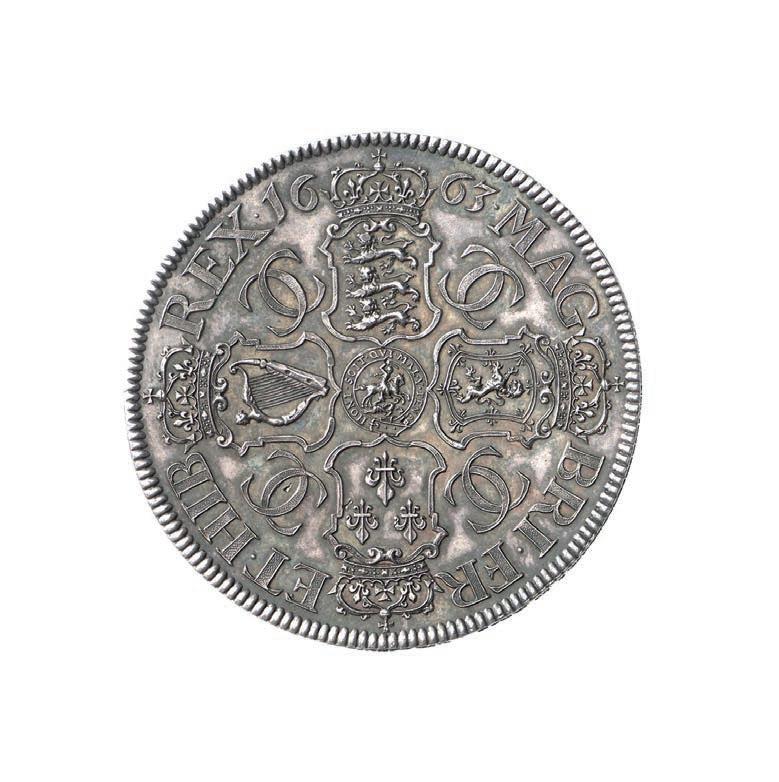
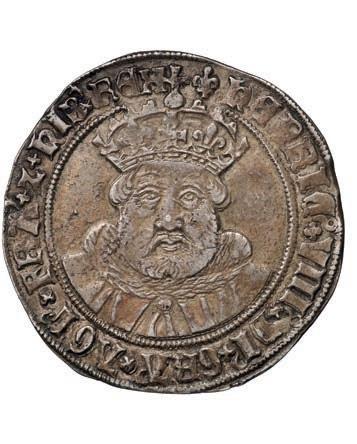
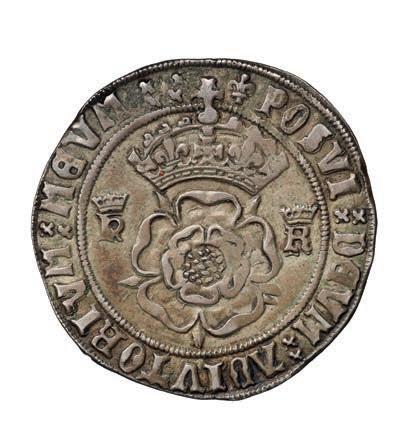
For marking a pivotal moment in English history the Henry VIII testoon from Cope’s collection is hard to beat. It was, according to the collector’s sons, his most prized coin for which he spent the larger part of his life searching. Estimated at £35,000 at this month’s sale, it is believed to be the nest example of its kind in existence.
e beginning of the 1540s saw Henry VIII attempting to raise money for wars with both France and Scotland. While the dissolution of the monasteries and heavy taxes raised some funds, the king had to look to coinage to nd additional revenue.
Known as the Great Debasement, a resulting secret indenture, ordered in May 1542, called for the minting of both gold and silver coins at ever-decreasing purity. It also called for the reinstatement of the testoon, a denomination that had been trialled under the reign of Henry VII with little success.
For the next two years the new testoons were minted in secret and stock-piled at the jewel tower in the Palace of Westminster while production of coins of silver of lower neness continued in parallel. While the testoon was struck in signi cant numbers, its subsequent withdrawal means it is scarce today. But by lessening the amount of silver used, in favour of cheaper copper, it meant the coin was prone to wear and tear. e wearing away of silver to reveal copper gave Henry the nickname “Old Coppernose”. e impact of the Great Debasement continued under Edward VI, and was not righted until the reign of Elizabeth I.
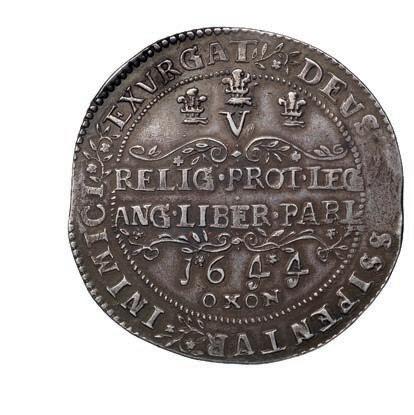
The testoon was struck in 1544 by an unknown engraver but likely based on the famous 1537 painting by Hans Holbein the Younger which remains one of the most famous portraits of any British monarch.
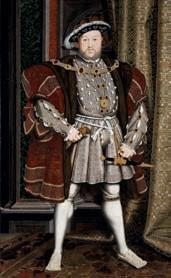
Not only was the painting remarkable for its representation of the king’s finery but the pose was also unusual, with the king’s full-faced stance, legs apart and fists clenched, not generally the pose adopted by a monarch.
In this case it was deliberate, intended to give the king an undeniably commanding presence.
testoon from the Cope Collection
Above Reverse of the Henry VIII Testoon from the Cope Collection
Above right After Hans Holbein the Younger (1497-1543) Henry VIII, 1537, oil on canvas, image public domain
Below Oxford Crown of Charles I from the Cope Collection
Below left Reverse of the Oxford Crown of Charles I from the Cope Collection
Right Reverse of the James I spur-ryal from the Cope Collection
Below right James I spur-ryal from the Cope Collection
But the coin, whether knowingly or not, aptly captures a careworn man. By 1544, Henry was overweight, in bad health and at odds over matters of faith with his sixth wife Catherine Parr. He was also frustrated in his attempts to marry his son Edward to the infant Mary Stuart, Queen of Scots.
As James VI of Scotland and James I of England, the new Stuart king introduced a series of coins with the Scottish arms in his royal shields and the thistle.
He also introduced a new gold coin, the spur-ryal, so called because the sun and rose in the centre of the coin’s reverse resemble a spur.
During James’ era, as a result of ourishing trade with the Far East, gold owed into England as never before.
e abbreviated Latin on the obverse translates as: “James by the Grace of God, King of Great Britain, France and Ireland” and on the reverse reads: “ is is the Lord’s doing and it is marvellous in our eyes,” a psalm from the Bible.
e coin has an estimate of £50,000 at this month’s sale.
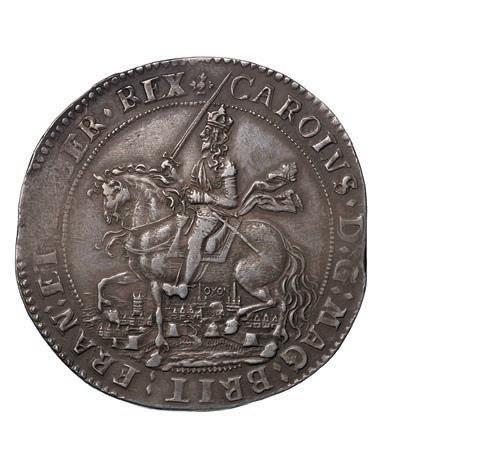
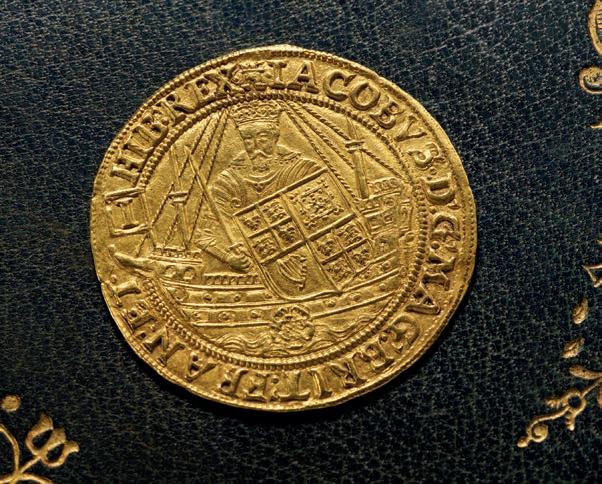
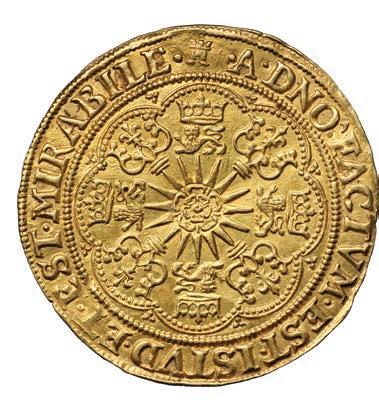

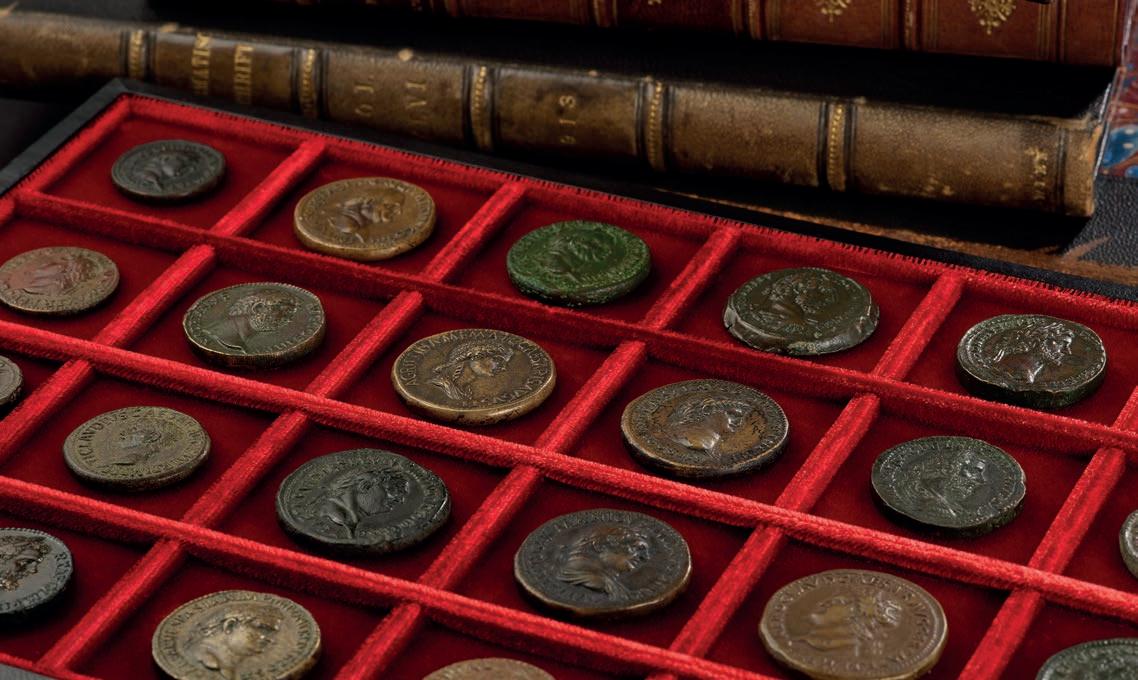
As well as momentous British coins, the Cope collection includes a number of highly sought-after Roman bronze coins which are also notable for the historic moments they capture.
Mr Russo continued: “Discerning coin collectors know that bronze is the metal in which Roman engraved art can be best admired thanks to its patinas and generously sized denominations. Bronze is also the metal in which it is most unusual to come across specimens in such good condition and this is what really sets this collection apart.”
One highlight is a Roman sestertius depicting Hadrian (117-138CE) in Britain thanking British legionnaires for completing Hadrian’s Wall, which Hadrian had commissioned in 122CE and was nished in 130CE. For many years the coin, which is expecting to make £263,000, was on display at the British Museum, becoming a favourite in the coin
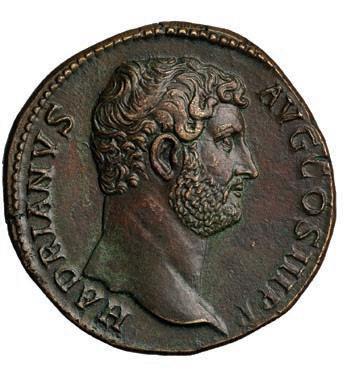
Above A selection of Roman coins from the Cope Collection
Below left Hadrian Sestertius from the Cope Collection
Below Reverse of the Hadrian Sestertius from the Cope Collection
department and being used on one of the museum’s most popular postcards.
e scene well depicts in ne detail the life of a Roman soldier. e two closest men to the emperor wear animal skins on their heads – a means of increasing their visibility to the soldiers who followed them into battle.
e standard bearer closest to Hadrian is an aquilifer, the soldier responsible for carrying the aquila, or eagle, standard of the legion.
Behind him stands the signi er who carries the signum standard of a Roman cohort who is ahead of the vexillarius, the soldier responsible for carrying the vexillum banner or a Roman maniple.
It took about 15,000 men six years to construct the famous wall over some 80 Roman miles, intended as a stone curtain to cut o the Celtic lands of the north from the Roman province of Britannia.
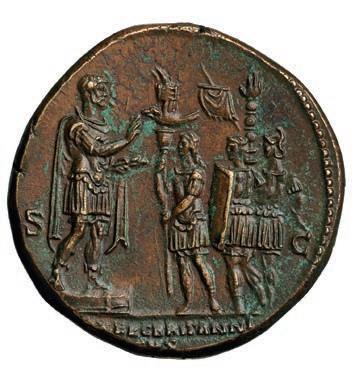
At some point Hadrian changed his plans and the eastern 30-mile section of Hadrian’s Wall was only constructed from turf.
‘Behind the aquilifer stands the signifier who carries the signum standard of a Roman cohort. He is ahead of the vexillarius, the soldier responsible for carrying the vexillum banner or a Roman maniple.’
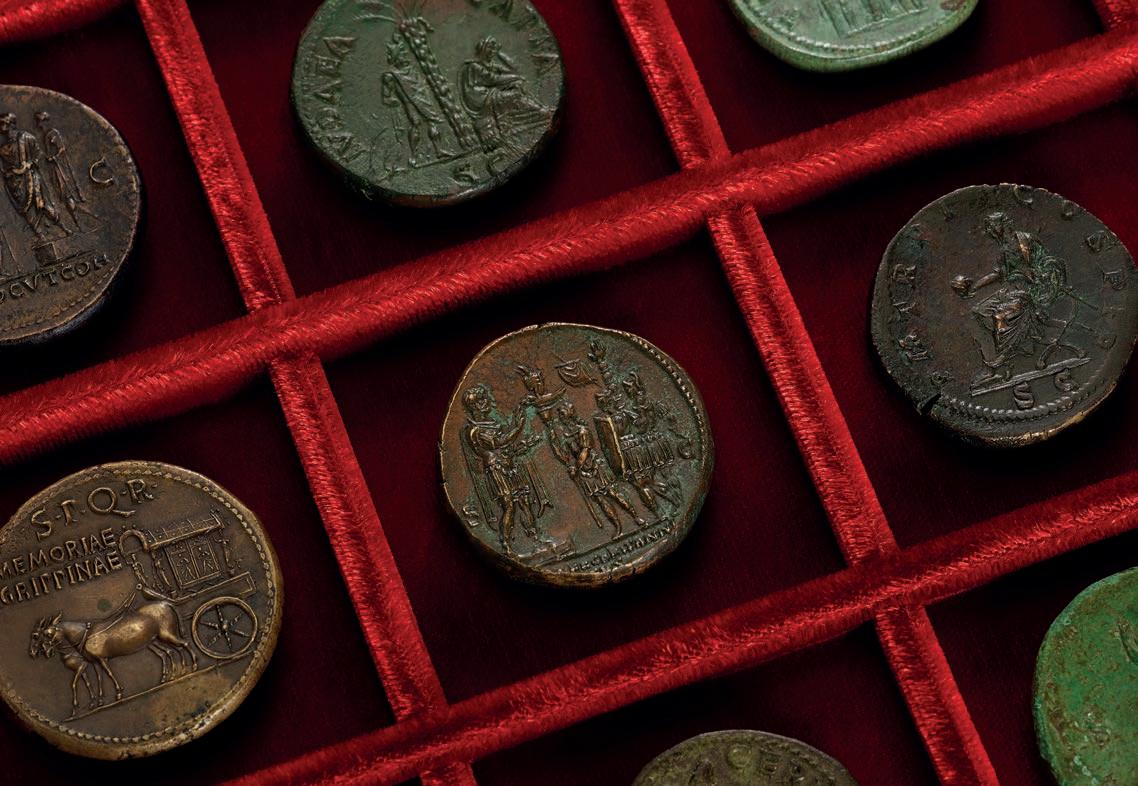
Another triumph for the collection – indeed the coin for which Cope mortgaged his home to secure – is a sestertius of Agrippina, which is expected to fetch £65,000.
e coin was issued by Agrippina’s son Caligula to commemorate his mother’s death, with the reverse depicting a funeral carriage drawn by two donkeys.
When Cope rst came across it at Sotheby’s in 1995 he said: “It was, in my eyes, the perfect coin. If one can ‘love’ a coin at rst sight, then I was bewitched by the brass sestertius. I was to have it at any price, the ageless portrait smiled at me from the coin, she was

e
Below left Sestertius of Agrippina the Elder from the
beautiful and digni ed and I had not realised that such a piece existed with such beauty.”
He continued: “ is artist created a piece that would be treasured throughout time, a portrait of the emperor’s mother, a coin that would never age in its beauty, maybe for several thousand years more and be preserved for future generations to enjoy.”
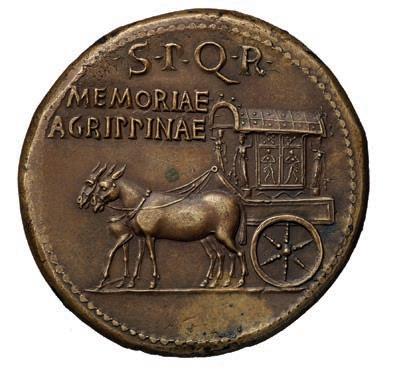
sestertius of
Agrippina the Elder, who died in 33CE, is one of the most tragic women in Roman history. She was the daughter of Marcus Vipsanius Agrippa, and married to the Emperor Tiberius’ nephew, Germanicus Julius Caesar, who was a highly esteemed military leader and heir apparent to the
‘Cope said: “It was, in my eyes, the perfect coin. If one can ‘love’ a coin at first sight, then I was bewitched by the brass sestertius. I was to have it at any price, the ageless portrait smiled at me from the coin, she was beautiful and dignified and I had not realised that such a piece existed with such beauty.”’
throne with whom she had nine children, including the future Emperor Caligula.
Known for her intelligence and virtuous qualities, Agripinna was admired by the general Roman public not least because she accompanied her husband on his military campaigns.
But when Germanicus, died under suspicious circumstances in 19CE, Agrippina was banished to the island of Pandataria (modern-day Ventotene) where she died four years later, allegedly from starvation.
When Caligula became emperor one of his rst acts was to retrieve his mother’s remains from the island and give her a proper burial in the Mausoleum of Augustus.
Cope said: “She has an appeal today. I also felt that the magni cent lettering around the head of Agrippina was so perfectly ‘Roman’. It was, in my eyes, the perfect coin.”
e rst part of the Geo rey Cope collection, which will include his Roman coins, will be auctioned jointly in Zurich on May 8, by Numismatica Ars Classica, Classical Numismatic Group and Numismatica Genevensis with another sale in October 2024. For more details go to www.copecollection.com
British coins in brief Celtic and Roman Coins
From c.150 BCE onwards, coins began to enter the British Isles as part of a trade route between the southern British tribes and Gaul (modern-day Belgium).
After the Roman invasion of Britain in 43CE under Emperor Claudius, they were were replaced by Roman coins which remained Britain’s exclusive coinage for more than 350 years. After the Romans left Britain in 410CE, for more than two centuries coins were hardly produced.
Anglo-Saxon and Viking coins
As Anglo-Saxon groups began to migrate to Britain after the decline of Rome, Merovingian gold coins slowly began to enter circulation, leading to the production of British gold thrymsa in 620-630, modelled on the Merovingian coinage.


These were replaced some 50 years later by the silver sceatta, which were, in turn, replaced by silver pennies based on the Carolingian Frankish denier.
When the Vikings first invaded Britain in the late 8th century, they brought with them their own Scandinavian pennies which circulated alongside the AngloSaxon coins.
Medieval coinage
The defeat of Harold II by William the Conqueror at the Battle of Hastings in 1066 marked the end of Anglo-Saxon England and the beginning of the Norman administration.
Silver pennies were essentially the only coin produced for the following two centuries, besides a groat of four pence struck in Edward I’s reign in 1272.
His grandson Edward III’s reign began in 1327 and, during this period, English currency underwent enormous reform with the introduction of the first multipledenomination gold coinage.
After an initial attempt of the ‘Leopard’ coinage of 1344 which proved unsuccessful, the gold noble, half noble and quarter noble were brought in and were instantly highly popular.

Tudor coins
The Tudor period began in 1485 and saw English coinage experience turmoil at the hands of the ruling monarchs. As mentioned, Henry VIII began to debase
coins in 1544 to help fund his wars, and it fell to his short-reigned son Edward VI to restore trust in circulating coinage.
By 1551, a new high-silver content ‘fine’ issue had been produced which quickly set the standard for purity.
From 1558, during Elizabeth I’s long reign, the production of a wide range of denominations began.
Stuart and Commonwealth coins
On James’s crowning, after the death of Elizabeth I the titles and arms of the coins changed to reflect his ties to both England and Scotland. As well as the spur ryal, other new gold types were produced including laurels and unites.
Notably, the first copper coinage was struck during James’s reign, a series of farthings in response to public demand for low-value coins.
During the Civil War coins were produced in emergency situations, sieges or at small provincial mints; meanwhile, Charles I oversaw the production of highdenomination propaganda types such as the gold triple unite and silver pound.
During the Commonwealth, coins featured shields rather than a crown with the writing in English not Latin. With the restoration on Charles II, English coins finally ceased to be produced through the now-antiquated hammering method and from 1662 onwards were produced in screw-presses giving far sharper detail and edge lettering.
Go head to head with the nest antiques brain in the country – our puzzle supremo Peter Wade-Wright

Q1 e term ca awa (with various pronunciations) refers to what? (a) 17th-century south Asian cloth, (b) 18th-century wallpaper, (c) 19th-century tea pots, (d) 20th-century Scottish takeaway drink-containers.
Q2 Gaudy Welsh is (a) the American name for 19th-century pottery, (b) collectable kitsch seaside memorabilia, (c) a particular decoration on dressers, (d) fairground collectables.
Q3 ‘Pulse’ is part of the name given to (a) more sensational examples of a Valentine’s Day card, (b) cooking pots made in 18th-century Ireland, (c) promotional photographs of early 20th-century screen stars, (d) watches for particular uses.
Q4 e bowler hat was originally designed for which of the following groups? (a) city gents, (b) Smith eld porters, (c) gamekeepers, (d) factory foremen
Q5 In which year was the bowler designed? (a) 1839, (b) 1849, (c) 1859, (d) no-one knows.
Q6 On what would you most likely nd the ‘serpent and grape’ design? (a) garden furniture, (b) tapestries, (c) door handles, (d) 1940s Penguin book covers.
Q7 In Western art what do playing cards symbolise? (a) prophesy (e.g. tarot), (b) vice, (c) avarice, (d) biblical/seasonal reference (13 cards per suit, four seasons etc.)
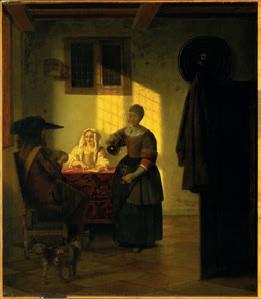
Send your answers to Crossword, AntiqueCollecting magazine, Riverside House, Dock Lane, Melton Woodbridge, Su olk, IP12 1PE. Photocopies are also acceptable, or email your answers to magazine@ accartbooks.com. The first three opened by May 14 will win a copy of Jackson’s Hallmarks, Pocket Edition: English, Scottish, Irish Silver & Gold Marks From 1300 to the Present Day, worth £6.95.

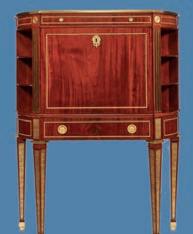
Anagram 4
The letters in the highlighted squares could be rearranged to make the word Ravenscroft. The three winners who will each receive a copy of the book are Mrs Jean HarveyBrown, Chichester by email; Paul Doherty, Halifax, and Henry Hethcoate, Nantes, by email.
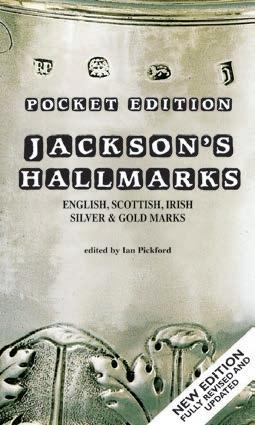
Q8 A veilleuse is French for ‘night-lamp’ but what is it as far as antiques are concerned? (a) garden lighting, (b) desk lamp, (c) food warmer, (d) a sleeping-potion container.
Q9 For what is Friedrich Elias Meyer (1723-1785) known? (a) penmanship, (b) cartographical errors, (c) glass, (d) porcelain sculptures.
Q10 What is ‘bronze disease’? (a) ‘metallic’ sheen on over-polished wood, (b) metal corrosion under certain conditions, (c) discolouration of old clothes from buckles/straps, (d) an overriding urge to buy metallic objects.
Finally here are four anagrams pirate’s drug, clone peers, retire aces and vermin rag Rearrange them to form, in order, (a) A secondary border on either side of the main border of a rug or carpet, (b) A small, adjustable re-screen, (c) A writing cabinet with a fall front, (d) Technique in which threads of softened glass are trailed over an object and then smoothed.
For the answers turn to page 10

ACROSS
What part of Austria is this?
3 Austrian/Italian alpine state where, tradition has it, tin-glazed earthenware was first produced. (5)
6 Large flat dish or platter, primarily designed for display. (7)
7 Flat (rather than round) cartographical work. (5)
8 Forerunner of chemistry and the study of which was associated with early porcelain experiments. (7)
10 Durable twilled fabric. Many a schoolchild will have worn it. (5)
13 Book-binder’s tools (pl.) in the form of a wheel bearing an engraved design. (5)
17 Engraved design on metal. (7)

19 Name by which the 13th/14th century ‘infernal’ Italian writer and philosopher is now known. (5)
20 Compass parts that point a/the way. (pl.) (7)
21 Max ____ (1891-1976) German pioneer of the Dada movement. (5)
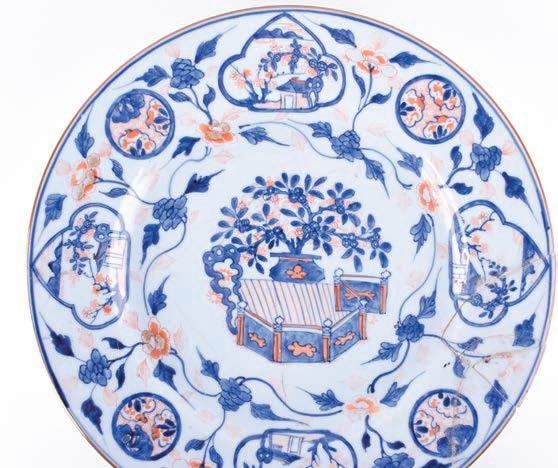
5
1 Storage/display surface on a wall or part of furniture. (5)
2 Continuous S-shaped section. (4)
3 Flat containers with raised rims (pl.) (5)
4 Straight piece of material for distance measuring. A pied du roi is a folding one of specific length. (5)
5 The company that produced Matchbox toys. (6)
9 ____-mark…showing date, place and purity. (4)
11 Parts (pl.) of dolls that can seem to follow you. (4)
12 Type of fluting decoration between stem to bowl on drinking glasses. 18th c. also called ‘cresting’. (6)
14 ____ fold. European (mainly) wood relief carving widespread in 14th-16th century (5)
15 ____ bottle. Perfume container. (5)
16 Inlay with a different material…or a professional day away from the office? (5)
18 Jacobite drawn-stem wine-glass. (4)
Finally, rearrange the letters in the highlighted squares to form the name of the porcelain manufacturing company founded in the late 18th century by John Rose. Note: one letter is missing! You are invited to write it into the central square.























































































































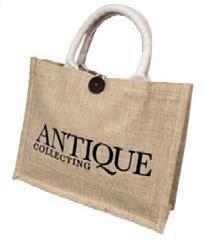
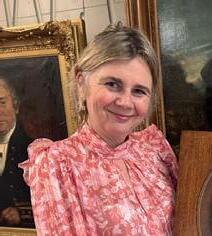

Silversmith Stuart Devlin’s designs, including his famous ‘surprise’ eggs never fail to make Catherine Southon crack a smile
My favourite modern silversmith has to be the Australian-born Stuart Devlin, who died in 2018. Devlin de ed the stripped back Scandinavian and Bauhaus design of his day and dived head rst into Romanticism, creating highly recognisable luxury goods, occasionally with a nod to good old-fashioned humour. roughout his illustrious career, during which he designed everything from jewellery and coins to atware and furniture, he pushed the boundaries of innovation, experimenting with di erent textures and forms.
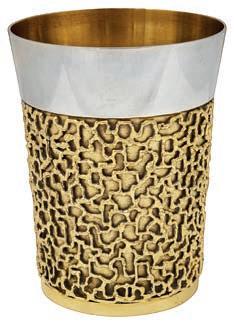
Born in Geelong, Victoria, Devlin nished a three-year course in silversmithing and goldsmithing at the Royal Melbourne Technical College in just a year, achieving the highest possible grades and gaining a scholarship to study at the Royal College of Art in London. After returning to Australia he won a competition to design the country’s rst decimal coinage, much of which is still in circulation today. From circulation in 1966, every Australian would carry around a piece of his design in their pocket, but few would be familiar with his work and the master craftsman he would quickly become.
Designing the coinage changed Devlin’s life. e prize money allowed him to move back to London and buy a small house with a basement workshop where he began goldsmithing and silversmithing as well as supervising the cutting of the dies of the Australian currency at the Royal Mint.
His career ourished, at his peak, he employed more than 60 workers developing a technique of combining gold and silver, with a creativity and style that set him apart. With old silversmithing techniques dying out, Devlin
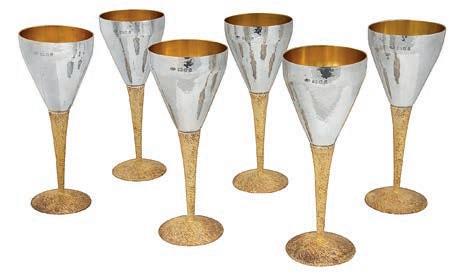
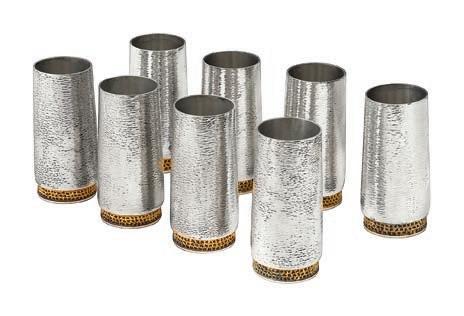
experimented with new techniques and was remarkably clever at juxtaposing clean, elegant forms with detailed, intricate silver-gilt textured decoration using an acetylene torch to achieve ligree forms. His work also had a playfulness that added delight and surprise to what had become an austere area of modern design.
As well as producing beautiful tableware, goblets and atware for the masses, Devlin was commissioned to design coins and medals for 36 countries, as well as make pieces for celebrities, and even royalty. In 1967, Elizabeth Taylor commissioned Devlin to design a cocktail shaker for Richard Burton which was famously returned some years later for repairs due to a “domestic incident.” In 1982, Devlin was granted a royal warrant.
Above right Stuart Devlin (1931-2018), a set of eight Modernist silver and parcel-gilt beakers, sold for £4,200 February 2024
Above Stuart Devlin (1931-2018) an Elizabeth II modernist silver and parcel-gilt beaker, London, 1969, it has an estimate of £500£800 at this month’s sale
Below left Stuart Devlin (1931-2018) an Elizabeth II modernist set of silver and parcelgilt goblets, London, 1970, it has an estimate of £1,000-£1,500 at this month’s sale
Right Stuart Devlin (1931-2018) a silvergilt limited-edition ‘surprise’ Jack and Jill egg, marked London, 1977, sold for £300
He was also known for his ‘surprise’ eggs. With humour at their heart, and rather kitsch in style, he created them in the ‘70s and ‘80s in a variety of sizes as ornaments as well as pendants. With a nod to the Fabergé eggs, they open to reveal a ‘surprise’ in the form of a gem crystal, gural scene or a ower. However, unlike Fabergé, who often looked to the past and altered it slightly, Devlin looked to the future, describing them as: “Objects which have no function whatsoever, except to delight, to surprise, to intrigue – made entirely for enjoyment.”
Devlin also designed jewellery which rarely appears on the market. His designs didn’t use gemstones, as such, but often experimented with contemporary designs applying gold onto silver.
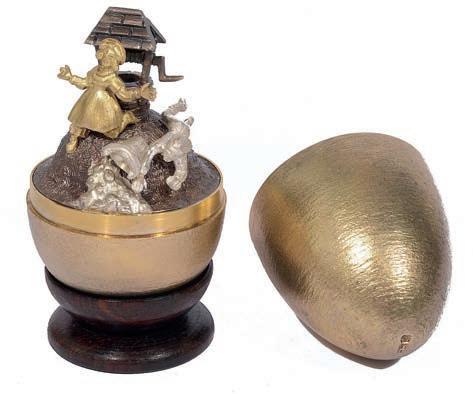
Catherine Southon Auctioneer’s sale on May 15 includes a number of pieces by Stuart Devlin. For more details go to www.catherinesouthon.co.uk
‘In 1967, Elizabeth Taylor commissioned Devlin to design a cocktail shaker for Richard Burton which was famously returned some years later for repairs due to a “domestic incident”’

is month, to mark the 150th anniversary of the birth of the Scottish Colourist JD Fergusson, the Edinburgh auction house Lyon & Turnbull is hosting a sale of Scottish art with a special focus on his work. Alice Strang reports on his career and lifelong love of France
This year’s anniversary has seen a number of events devoted to the in uential artist John Duncan Fergusson (1874-1961) one of the most important Scottish painters of the 20th century. A new permanent display of his work has opened at Perth Art Gallery and, following its exhibition in partnership with the Fleming Collection A Scottish Colourist at 150: John Duncan Fergusson, Lyon & Turnbull is hosting a sale of Scottish art with a special focus on his works at its Edinburgh saleroom.
e exhibition traced Fergusson’s career from his emergence as an artist of sophistication in Edwardian Edinburgh, to his role in the development of modern art in Paris. It also explored the inspiration he clearly found in the Scottish Highlands and his joy in portraying the pupils of the summer schools held in France by his wife, the dance pioneer Margaret Morris (1891-1981).
Fergusson was born in Leith, near Edinburgh and is one of four artists, along with Francis Campbell Boileau Cadell (1883-1937), George Leslie Hunter (1877-1931) and Samuel J Peploe (1871-1935), known as the ‘Scottish Colourists’. ey are revered as masters of modern Scottish art with their works often the highlights of collections in this eld.
In addition, collectors of both modern British art and modern European art are also drawn to Fergusson, who has the most international reputation of the group. is is partly due to key periods he spent living in Paris before WWI and during the 1930s, as well as in London between 1914 and 1929. As the longest-lived of the Colourists (the others died before the start of WWII, while Fergusson lived to the ‘60s) he also played an important role in the Scottish art world after WWII, from a
‘Fergusson

Opposite page JD
Fergusson (1874-1961)
Bathers, Antibes, 1937, oil on canvas, 65.6 x 54cm. Private Collection, courtesy of Lyon & Turnbull and Culture Perth and Kinross Museums & Galleries
Above right JD
Fergusson (1874-1961)
Jonquils and Silver, 1905, oil on canvas, 50.8 x 45.7cm, e FlemingWyfold Art Foundation, London, courtesy of Culture Perth and Kinross Museums and Galleries
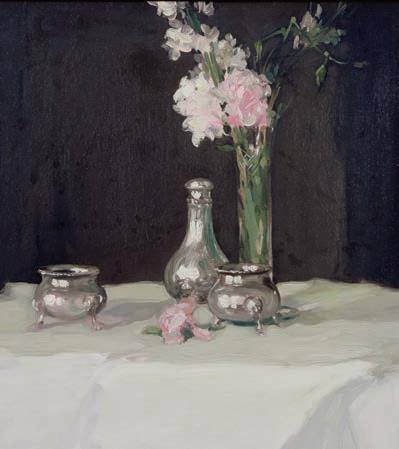
One of the loans to the exhibition at Lyon & Turnbull was Fergusson’s exquisite oil on canvas Jonquils and Silver painted in1905. It reveals Fergusson’s friendship with fellow Colourist SJ Peploe, whom he met in Edinburgh in about 1900. Both shared an admiration for artists including Édouard Manet and Diego Velázquez, whose work they saw in Paris in the 1890s and whose influence is clear as can be seen in this painting.
In a manner similar to that employed by Peploe in a series of contemporary still lifes, Fergusson set his props of Adam revivalstyle silver salts and a pepper pot on a white tablecloth, set before a dark background.
A sense of a refined lifestyle is emphasised by the inclusion of the jonquils, which represent a token of desire in the language of flowers.
Fergusson’s technical virtuosity is clear, for example, in the depiction of the reflections on the surface of the silverware.
base in Glasgow; he died in the city in 1961.
Fergusson’s international standing is epitomised by his election as a sociétaire, or member, of the progressive Salon d’Automne, in Paris in 1909, in recognition of his contribution to the modern movement. Indeed, the six years he spent in the city, between 1907 and 1913, provide the foundation of his standing beyond Scotland, underpinned by his lifelong pride in being a Scot.
embarked upon a series of vibrant Parisian street scenes, such as BoulevardEdgar Quinet, where he rented his first studio in the French capital. His excitement about his new surroundings is clear, as he revelled in the depiction of the city’s architecture and citizens’
In 1907, Fergusson decided to move from Edinburgh to Paris. e trip was made possible thanks to an inheritance following his father’s death and was encouraged by meeting the American artist, Anne Estelle Rice (1877–1959), in Paris-Plage in the summer.
e pair began a romantic and professional relationship which lasted until 1913. Fergusson declared “Paris is simply a place of freedom” and settled in Montparnasse, the celebrated artists’ quarter.
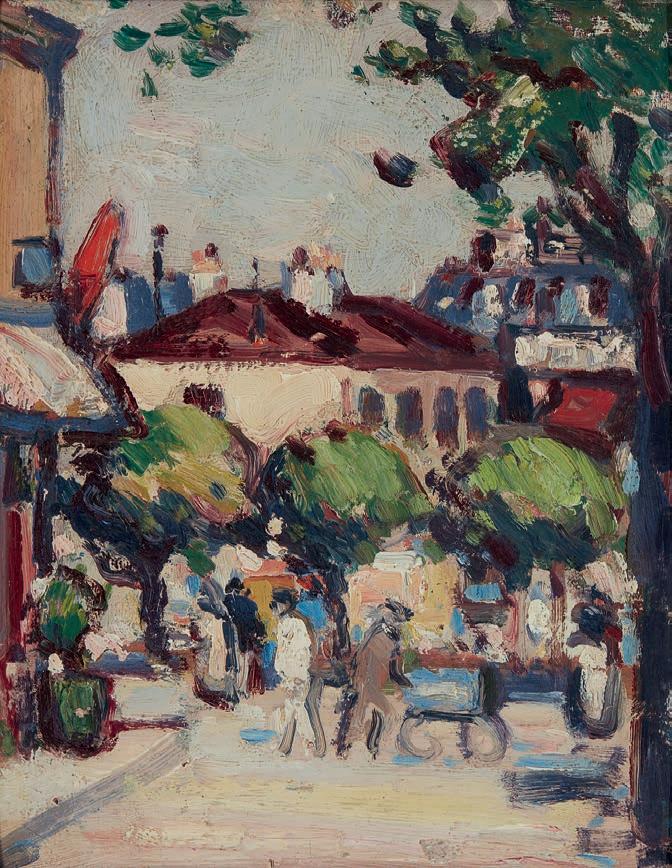
Fergusson embarked on a series of vibrant Parisian street scenes, such as Boulevard Edgar Quinet, where he rented his rst studio in the French capital. His excitement about his new surroundings is clear, as he revelled in the depiction of the city’s architecture and citizens.
His brushwork became bolder and his palette brighter in deftlycaptured scenes of daily life. With a con dent command of modernist technique, form is indicated by way of distinct brushstrokes, whilst highlights of bright colours, including red and turquoise, enliven the composition and suggest a response to the brighter light of France compared to that of Scotland.
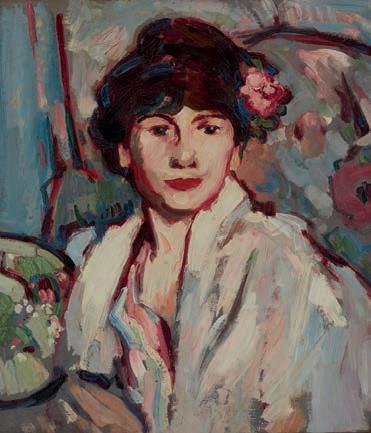
In his memoirs, Fergusson recorded: “I immediately found there, what the French call an ‘ambience’ – an atmosphere which was not only agreeable and suitable to work in, but in which it was impossible not to work!”
Fergusson also indulged his love of drawing and sketching. He rarely ventured outside without a sketchbook and worked at speed and with spontaneity in front of his subjects, usually capturing them in charcoal or watercolour.
One of the highlights of the upcoming sale is Fergusson’s Rose in the Hair, painted in 1908 the year following his move to Paris. It is a tour de force example of how his practice ourished in the context of the very birth of modern art. He absorbed and evolved the latest developments in the work of artists including Pablo Picasso, Henri Matisse and André Derain. He and Anne Estelle Rice, became key gures in the Anglo-American ‘Rhythmist’ group, known for their progressive arts journal Rhythm. e controlled, realist technique of the portraits Fergusson had made in Edinburgh gave way to the gestural, suggestive brushstrokes seen here. Feminine con dence, beauty and style remain but are now celebrated by way of layered colours and a sense of spontaneity. Fergusson kept Rose in the Hair all his life and selected it for inclusion in a solo exhibition of his work staged at L’Institut Français d’Ecosse in Edinburgh in 1950.
Below JD Fergusson (1874-1961) Le Manteau Chinois (Anne Estelle Rice), 1909, oil on canvas, 200 x 97cm. Courtesy of Culture Perth and Kinross Museums and Galleries
Top JD Fergusson (18741961) Boulevard Edgar Quinet, Paris, 1909, oil on board, 36 x 27cm. It has an estimate of £40,000-£60,000 at Lyon & Turnbull’s Scottish Paintings & Sculpture sale on June 6
Above JD Fergusson (1874-1961) Rose in the Hair, 1908, oil on board, 64 x 53.5cm. It has an estimate of £100,000£150,000 at the same sale
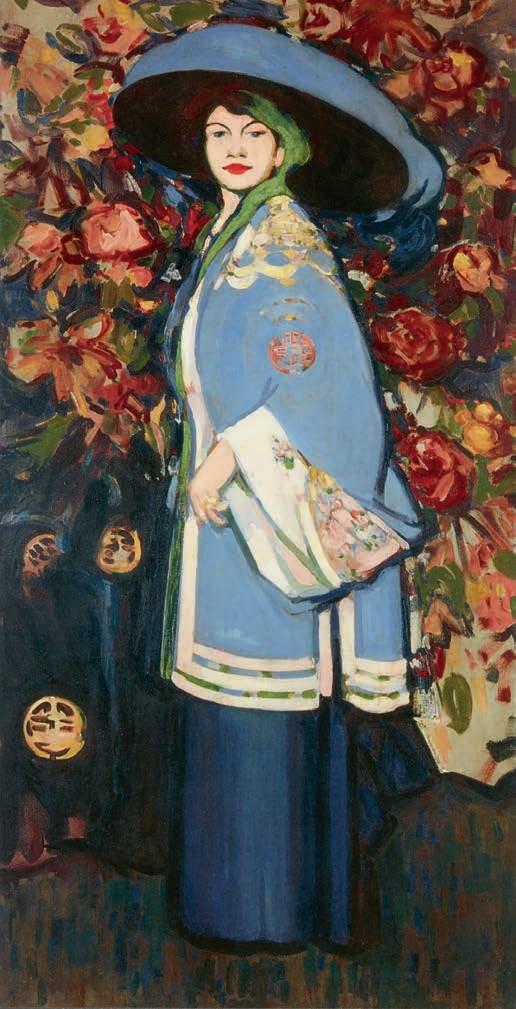
It was in Paris in 1913 Fergusson met his long-term love, the dance pioneer Margaret Morris (1891-1981).
Soon after meeting, their personal and professional lives became interwoven. Later that year they left the capital for the Cap d’Antibes, Fergusson saying: “I had grown tired of the north of France; I wanted more sun, more colour; I wanted to go south.”
But the outbreak of WWI prompted a move to London. Morris had a dance school and theatre in Chelsea and established the Margaret Morris Club. is became a popular meeting place for the creative avant-garde, from poets and composers to painters and sculptors. Fergusson thus found himself in the centre of the English art scene and lived in the city for 15 years.
e years 1929 to 1939 saw Fergusson back in Paris. Bathers, Antibes of 1937 encapsulates the active, outdoor lifestyle he and Morris enjoyed during the summer schools she ran in the south of France.
In 1923 the school was held in Antibes for the rst time and the following year Morris and her dancers posed for photographs which were used to launch the rst summer season at the Cap, which is now one of the world’s most luxurious resorts.
Morris and her pupils dancing barefoot in pine forests and on beaches, as well as swimming and sunbathing, provided Fergusson with endless inspiration for his work. In his turn, he taught them to draw and paint and to design theatre sets and costumes.
Bathers, Antibes depicts some of Morris’s pupils at a bathing place cut into cli s. e red forms are handrails and ladders which were installed in the warmer months. As she recalled: “Everyone bathed o the rocks and afterwards sun-bathed in the woods or on the rocks. When they got too hot, they dived into the sea again. Fergus [sic] got much inspiration and did hundreds of

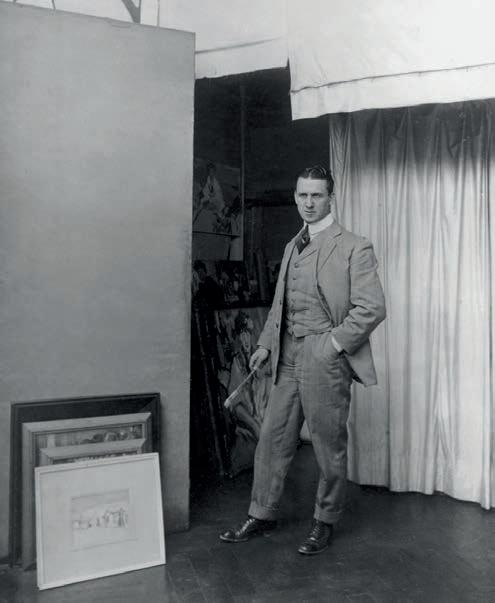

‘Morris and her pupils dancing barefoot in pine forests and on beaches, as well as swimming and sunbathing, provided Fergusson with endless inspiration for his work’
sketches over the years, from which he painted many pictures.” An art deco stylishness can be seen in this sunkissed image of healthy, tanned women.
Above right JD Fergusson (1874-1961) Figures amongst the Pine Trees, watercolour on paper, 17.5 x 14cm. It has an estimate of £2,000-£3,000 at Lyon & Turnbull’s, Scottish Paintings & Sculpture sale on June 6

Left Fergusson in his Paris studio, c.1910, courtesy of Culture Perth and Kinross Museums and Galleries
On the outbreak of WWII Fergusson and Morris relocated to Glasgow, which Fergusson felt to be the most Celtic Scottish city, an important accolade from an artist who was endlessly proud of his Scottish ancestry. In 1940, Fergusson and Morris were co-founders of the New Art Club, out of which emerged the New Scottish Group of painters.
Following Fergusson’s death in 1961, Morris established the JD Fergusson Art Foundation to secure his legacy and to support living artists. e Foundation’s aims were achieved with the opening of e Fergusson Gallery in Perth in 1992 and the launch of the JD Fergusson Arts Award Trust in 1995.
e radical work of Fergusson. and the other Scottish Colourists, truly enlivened the Scottish art scene with the dynamism, vibrancy and colour of European Modernismin doing so they breathed new life into Scottish art.
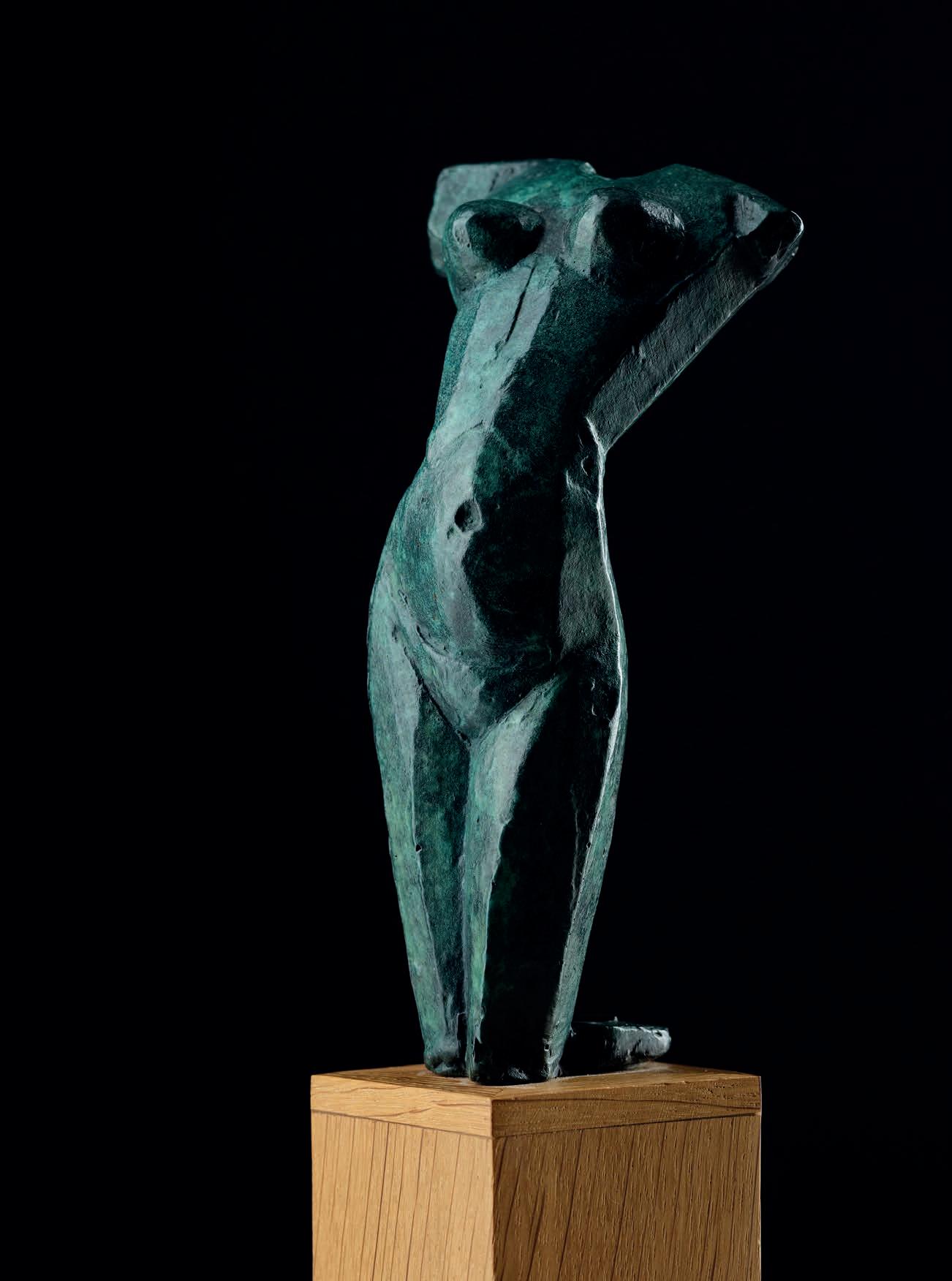
It was during WWI that Fergusson turned to sculpture. It was a new, provocative way to manipulate and experiment with the human form and the physicality of his sculpture is as exciting as the colour in his painted works. Although relatively little is known about his sculptural work, it remains an important part of his oeuvre, and demonstrates his distinctive artistic identity and talent.
Fergusson made and exhibited sculpture for more than 35 years, with a concentrated period of productivity from about 1918 to 1922. This coincided with a parallel development in the Margaret Morris Movement, the dance technique devised by his partner.
Eástre (Hymn to the Sun) of 1924 (cast 1991) is his best-known sculpture, not least because two posthumous editions of it exist. Fergusson made it in plaster in 1924, but kept it under his bed for three years before he could afford to have it cast in brass.
Eástre is the Saxon goddess of spring and the rising sun. The work is believed to be a portrait of Morris, who devised a ballet of the same title inspired by the music of Nikolai Rimsky-Korsakov. Reflective brass was popular in the 1920s as a way to signify modernity.

‘It is a powerful depiction of female physicality and embodies key themes in Fergusson’s sculptural practice: the cropped female form, an interest in non-Western sculpture and a sleek modernism, based on curves and planes with particular attention paid to the breasts, bottom and the base of the spine’
The charitable trust Culture Perth and Kinross is the custodian of the largest collection of artwork and personal, archival material belonging to JD Fergusson. In March, Perth Art Gallery opened a new exhibition called Fergus and Meg: A Creative Partnership made up of 40 paintings, drawings, and watercolours, including some of the artist’s best-known works such as The Grey Hat, Le Manteau Chinois and At My Studio Window. It will also feature important works by his wife Margaret Morris, as well as dance costumes, photography, and film.
National Galleries of Scotland in Edinburgh houses a significant collection of works by Fergusson and other Scottish Colourists. In Glasgow, the Kelvingrove Art Gallery and Museum is another institution with a notable collection, along with the city’s Hunterian Art Gallery.
Torse de Femme, 1918 (cast 1991) is perhaps his second best-known sculpture, not least because an enlarged cast of it was installed in Perth in 1994.
It is a powerful depiction of female physicality and embodies key themes in Fergusson’s sculptural practice: the cropped female form, an interest in non-Western sculpture and a sleek modernism, based on curves and planes with particular attention paid to the breasts, bottom and the base of the spine.
It pays testament to the sculptors with whose work Fergusson would have been familiar in prewar Paris, such as Constantin Brancusi, Alexander Archipenko and Jacob Epstein. e angularity of form also relates to Vorticism, whose members Wyndham Lewis, Christopher Nevinson and Edward Wadsworth Fergusson knew through the Margaret Morris Club.
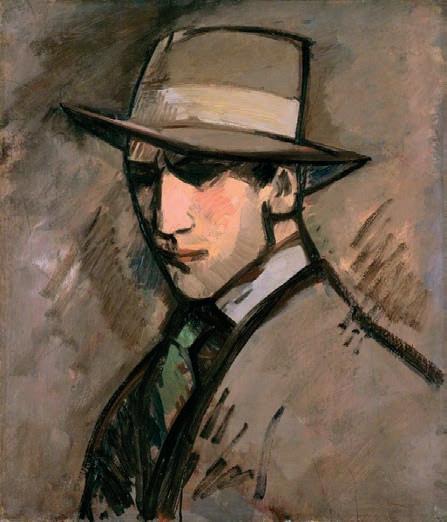
Opposite page JD Fergusson (1874-1961)
Torse de Femme, 1918 (cast 1991), bronze with a green patina, 14 x 7 x 5cm (excluding base). It has an estimate of £6,000-£8,000 at Lyon & Turnbull’s, Scottish Paintings & Sculpture sale on June 6
Opposite page inset JD Fergusson (1874-1961)
Eástre (Hymn to the Sun), 1924 (cast 1991), bronze, 42 x 26 x 28cm. Private Collection, courtesy of Lyon & Turnbull Culture Perth and Kinross Museums and Galleries and Lyon & Turnbull
Above right JD Fergusson (18741961) Submarines and Camou aged Battleship, 1918, set a record for a work sold at auction by the artist, image courtesy of Christie’s
Below left JD Fergusson (1874-1961) Self Portrait: the Grey Hat, 1909, oil on board, 61 x 51cm. Image courtesy of Culture Perth and Kinross

Last year, a record was set for a work by Fergusson at auction when his 1918 painting Submarines and Camouflaged Battleship sold for £1,074,000, beating its estimate of £400,000-£600,000. Fergusson, who was given privileged access to the naval harbour because he was working under a military commission from the Ministry of Information’s Propaganda and Record Department, carried out a series of paintings of what he saw. He wrote to Margaret Morris: “I went down to Southsea last night, it was quite wonderful – really like the south of France … I go round the docks with the Commander man again today. We went round in a boat yesterday and it was very fine indeed to paint.”
The submarines and ships Fergusson found in the docks had all been kitted out in the striking, broken-form colours and shapes of dazzle camouflage. This was a unique camouflage style, devised by the English Vorticist painter Edward Wadsworth that made practical use of a CuboFuturist technique to distort a ship’s outline and confuse the visual rangefinders of enemy vessels.
But if six figures is beyond the collecting budget of most, Fergusson was also a prolific sketcher with a multitude of works on paper regularly making their way to UK (and French) salerooms – many of which are affordable.
Thoughout his career Fergusson loved drawing and sketching in charcoal and pencil with subjects ranging from self portraits, to still lifes and women – often either nude or in a variety of hats. In 2021, nine of his sketches, ranging from his early academic studies in Edinburgh to his more mature ‘European’ technique went under the hammer at Lyon and Turnbull, with prices ranging from £2,000 to £4,000, the latter achieved by Flowers and Fruit, a pen, ink and wash of 1911 that relates directly to a handful of Colourist oils Fergusson painted between 1910 and 1912.
Alice Strang is an associate director and senior specialist in modern and contemporary art at Lyon & Turnbull, the market leader in dedicated Scottish art sales. As senior curator at the National Galleries of Scotland, she curated its John Duncan Fergusson retrospective exhibition of 20132014 and edited the accompanying book. She is a BBC Expert Woman and a Saltire Society Outstanding Woman of Scotland.
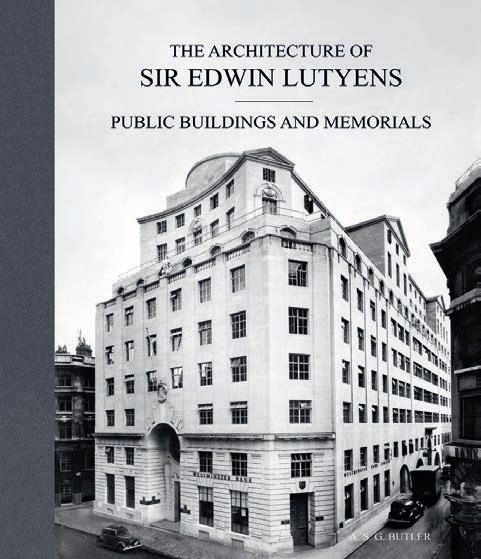
THE ARCHITECTURE OF SIR EDWIN LUTYENS - VOLUME 3: PUBLIC BUILDINGS, ETC.
BY A. S. G. BUTLER, GEORGE STEWART, CHRISTOPHER HUSSEY
ISBN 9781788842501
RRP £125.00
OFFER PRICE £81.25
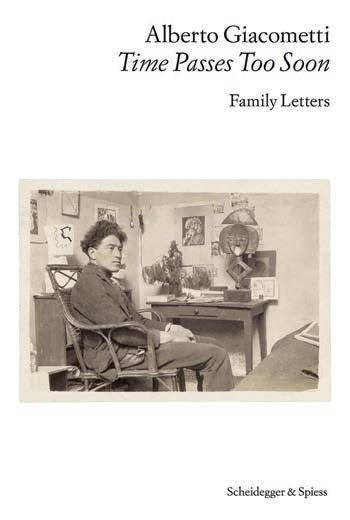
Take a trip around Monet’s garden and pop into London’s legendary Biba store, all without leaving your armchair with this month’s selection of titles from our sister publisher ACC Art Books
One of the most famous architects of the 20th century, this lavish third volume of Lutyens’ work showcases his finest public buildings, memorials and townhouse renovations. Includes the Cenotaph at Westminster, the Thiepval Memorial, The Metropolitan Cathedral in Liverpool, and the colossal Midland Bank building in Manchester, as well as numerous townhouse renovations. Featuring beautiful black & white photography as well as working drawings.
ALBERTO GIACOMETTI -TIME PASSES TOO SOON - FAMILY LETTERS
BY ALBERTO GIACOMETTI FOUNDATION, CASIMIRO DI CRESCENZO, ALTA L. PRICE
ISBN 9783039421695
RRP £32.00
OFFER PRICE £20.80
First publication of Alberto Giacometti’s family letters. Offers fascinating new insights into the personal and artistic evolution of one of Modernity’s greatest artists and brings to life the vibrant Paris art scene of the 1920s and 1930s. Illustrated with facsimiles of letters, reproductions of works discussed, and photographs.
TIBETAN RUGS - THE RUDI MOLACEK COLLECTION
BY RUDI MOLACEK, THOMAS WILD, THOMAS COLE, FELIX ELWERT
ISBN 9781898113713
RRP £80.00
OFFER PRICE £52.00
Artist and photographer Rudi Molacek has assembled, with an artist’s eye, an idiosyncratic collection of more than 300 Tibetan carpets, rugs, mats, seat-, bench- and saddle-covers. Between the 15th and the 20th centuries they were woven for both sacred and secular purposes by Tibetan nomads and villagers, and in the shadow of monastic centres across the Tibetan Plateau. Two hardbacks, slipcased.

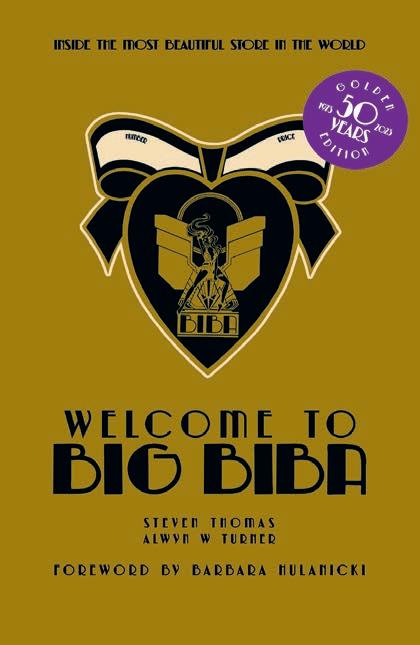
ISBN 9781843682431

RRP £9.99
OFFER PRICE £6.49
This shimmering novel is an extraordinary portrait of a day in the life of an artist at work and at home. In prose as luminous as the colours Monet is using to portray his garden, Eva Figes gently guides us through the day - Monet’s wife, grieving for a lost daughter; a living daughter, fretting that she will not be able to marry the man she loves; their friend the abbé, eating and drinking with them; two children playing, closest to Monet in the freshness and certainty of their vision; all experiencing in different ways the richness of the light that Monet works unceasingly to pin down in his last, great paintings.
ISBN 9781788842617
RRP £22.00
OFFER PRICE £14.30
A love letter to the most beautiful shop in the world. Big Biba was the final flowering of the nearmythical Biba retail brand. A shop like no other, all seven storeys stocked own-brand products packaged in the distinctive Biba style. Customers were immersed in a sensory smorgasbord – the complete shopping experience. This book keeps the spirit alive with over 150 photographs of the store and its products and designs.
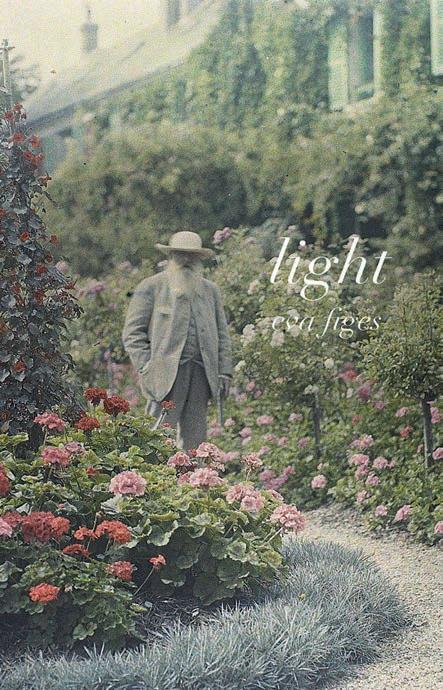
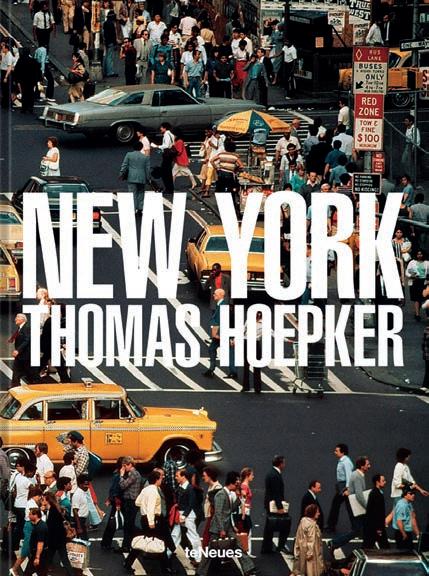
ISBN
New York’s evolution through time, devoid of glitz and glamour, is masterfully captured by the renowned photographer Thomas Hoepker in his revised and extended edition of New York. The artist, a resident of the mega metropolis himself, has been passionately photographing his hometown since the 1960s. His insights into this unique city are far removed from the image entrenched in people’s minds about the big city. Hoepker portrays the people, their way of life, their homes, and their leisure activities, unfiltered and directly.
Email uksales@accartbooks.com, or call 01394 389950.
Postage to UK addresses is £7, call for overseas rates. Offer subject to change without notice.
Work by three iconic 20th-century female designers appear for sale, while a striking bust goes under the hammer in Berkshire
An arts and crafts silver caddy spoon by AE Jones (18781954) has an estimate of £250-£300 at Woolley & Wallis’ silver and objects of vertu sale, in Salisbury, on May 1.
Albert Edward Jones studied at the Birmingham School of Art where he met some of the greats of the arts and crafts movement including Arthur Dixon, Bernard Cuzner and Arthur Gaskin. He later became a leading member of the Birmingham Guild of Handicraft, with one of the distinguishing features of his work being ecclesiastical themes and motifs. The spoon, which has a spot-hammered bowl with a tree of life design at the terminal, is 7cm (2¾in) long.
A sampler consigned from a collector in Salisbury has an estimate of £100 at Charterhouse’s specialist auction of textiles in Sherborne on May 3.






The collection of samplers date from the 18th to the 20th century and incorporate animals, houses, letters of the alphabet, numerals, and other motifs.
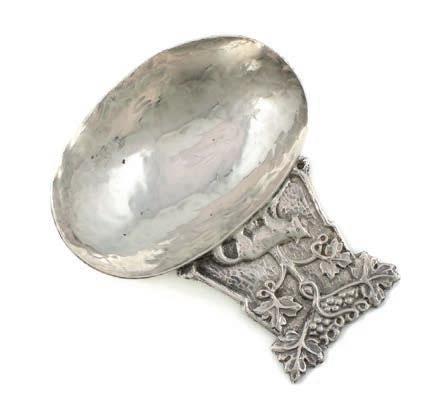
An ink drawing of David Hockney’s lover, Peter Schlesinger, who he portrayed in his famous work Portrait of an Artist (Pool with Two Figures), has an estimate of £30,000-£40,000 at Parker Fine Art Auctions in Farnham, Surrey, on May 9. Schlesinger, who enrolled in Hockney’s drawing class at the University of California, Los Angeles, in 1966 aged 18, soon became the artist’s most famous muse and romantic partner.
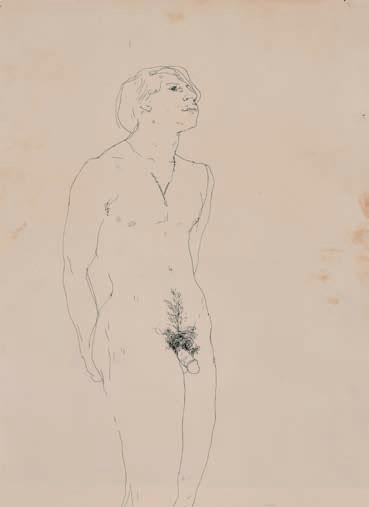
Hockney’s iconic picture of a Schlesinger figure in a pink jacket overlooking a sun-dappled swimming pool became the most expensive painting by a living artist when it sold at auction for $90.3m(£70.3m) in 2018. The pair’s break up was dramatised in the 1974 film, A Bigger Splash. The current picture has been in private hands since the ‘60s.


English samplers date back 400 years, their original purpose – before embroidery pattern books became available – was to demonstrate a repertoire of embroidery stitches. Later versions, often made at school, also showcased the maker’s skills.
A patinated bronze bust by Sir Jacob Epstein (1880-1959) of The Honourable Wynne Godley is one of five busts by the AngloAmerican sculptor appearing in Dawson’s sale in Maidenhead on May 15.
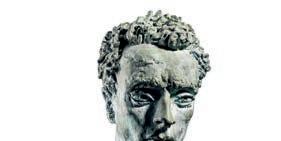
Measuring 52cm (20½in) high (including the base), it has an estimate of £3,000£5,000.

Godley, the younger son of the second generation peer Lord Kilbracken, married Epstein’s illegitimate daughter Kitty in 1955. Considered handsome and athletic, Godley also became the model for Epstein’s wellknown sculpture of St Michael on the outside of the rebuilt Coventry Cathedral.
Above right e bust of e Honourable Wynne Godley by Sir Jacob Epstein goes under the hammer
Right Godley was the model for Epstein’s sculpture of St Michael on the wall of Coventry Cathedral
A pair of George VI coronation chairs has an estimate of £700-£1,000 at Bonhams Knightsbridge’s online sale from April 29 to May 8.



The limed-oak frame is upholstered in sage green velvet, trimmed with gold braid, with the backrest embroidered with the GVI cypher.
The coronation of George VI took place at Westminster Abbey on Wednesday May 12, 1937. This date was originally selected for the coronation of his brother, Edward VIII. After Edward’s abdication in December 1936 it was agreed that the coronation ceremony for George VI would remain on this day. The chair is stamped with the maker’s name W.Hands & Son.
Above right One of a pair of chairs which has an estimate of £700-£1,000 at Bonhams’ online sale
The work of three pioneering French women goes under the hammer this month at Christie’s in Paris, part of a 200-lot sale of classic 20th-century design.
Leading the sale, on the 25th anniversary of her death, is furniture by the sought-after and influential French inter-war and mid-century designer. Charlotte Perriand (1903-1999).
Several pieces were designed for the Maison Borot in Montmartre, the home of the industrialist Jean Borot, a commission which Perriand started in 1951 and took 15 years to complete.
The serving hatch made for the house is expected to sell for €150,000-€200,000 (£130,000-£170,000).
Made from a mahogany countertop with bamboo detailing it clearly shows the importance of Japan in Perriand’s designs. She moved to the country in 1940 at the invitation of the Japanese government, where she served as a cultural advisor on industrial arts.
Other pieces by her on sale this month include a Mexique bookcase which was created for student rooms in the Maison du Mexique at the Cité Universitaire Internationale de Paris in 1952. Made by Steph Simon, she designed two types of shelves for the commission: the Tunisie, with U-shaped metal blocks attached to the wall and the freestanding Mexique made to be placed either against or away from the wall. The sale also includes one of Perriand’s emblematic Free Form tables, estimated at €35,000€55,000, (£30,000-£48,00) and an iconic Berger stool expected to make €3,000-€4,000 (£2,500-£3,500).
Another section of the sale is dedicated to Maria Pergay (1930-2023), one of the most important designers from the 1960s and 1970s who died last year. The Moldovan-born French designer is best known for her unique use of stainless steel. Her Flying Carpet daybed, which has an estimate of €60,000-€80,000 (£50,000-£70,000), being the recliner Brigitte Bardot posed on for one of her most famous photographs.
The sale also includes 10 mirrors by Line Vautrin, (1913-1997) dubbed “the poetess of metal” by Vogue in the 1940s. Born in Paris in 1913 into a family which owned a bronze foundry, Vautrin taught herself metalworking skills such as gilding, chasing and casting.
Following a brief spell with Elsa Schiaparelli, she began making boxes, ashtrays and compacts. After WWII she began to experiment with a material she patented and called Talosel – a cellulose acetate which she moulded and used to embed mirrored glass, with her Huître (oyster) mirror echoing her love of the sea.
The Design sale is on May 23 at Christie’s France, 9, Avenue Matignon, 75008, Paris.
1 Some 200 lots from the nest 20th-century designers go under the hammer this month, all images © Christie’s Images Ltd 2024 Paris 2 Charlotte Perriand (1903-1999), serving hatch, c. 1959, for the Maison Borot, mahogany and bamboo. It has an estimate of £130,00-£170,000 3 Charlotte Perriand (1903-1999), Mexique bookcase, c. 1952. It has an estimate of £85,000-£130,000 4 Maria Pergay (1930-2023), Éventail (fan) co ee table, c. 1968, brushed stainless steel and brass. It has an estimate of £13,000-£17,000 5 Line Vautrin (1913-1997) Huître (oyster) mirror, Talosel and mirrored glass, c. 1960. It has an estimate of £85,000£130,000 6 Maria Pergay (1930-2023), Flying Carpet daybed, c. 1968, brushed stainless steel, and painted plywood. It has an estimate of £50,000-£70,000
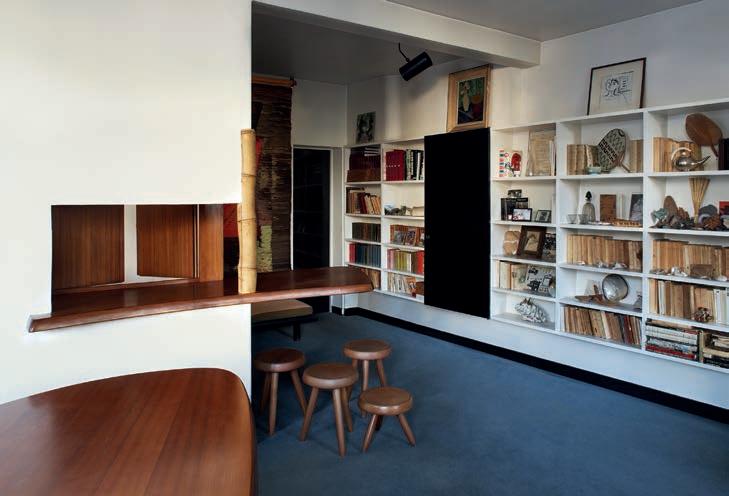


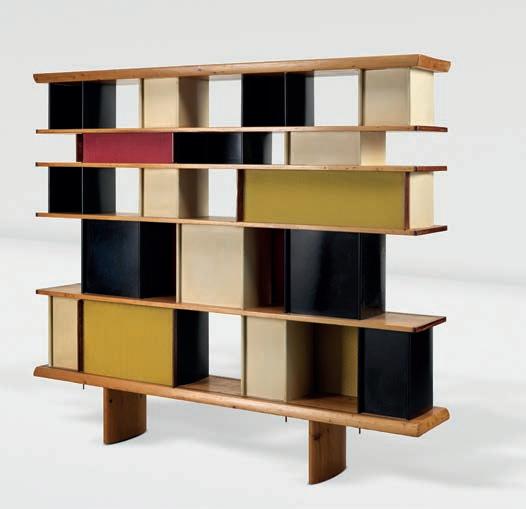
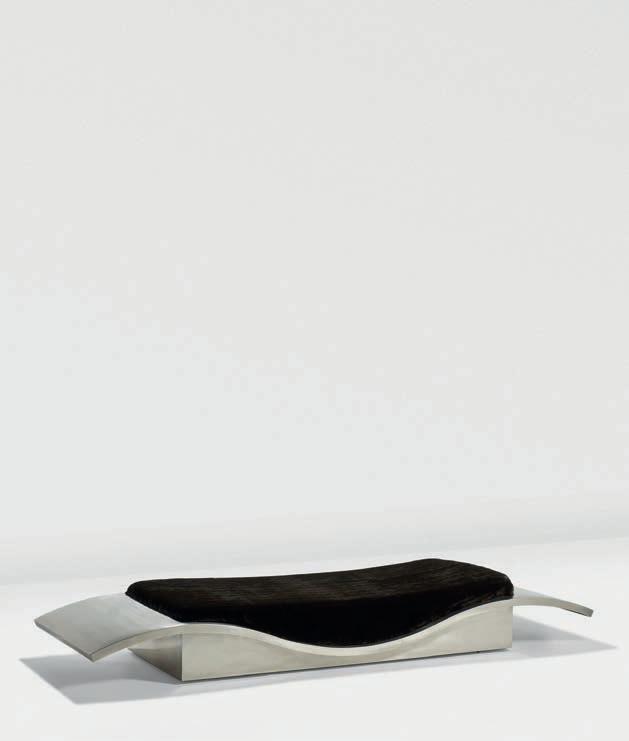

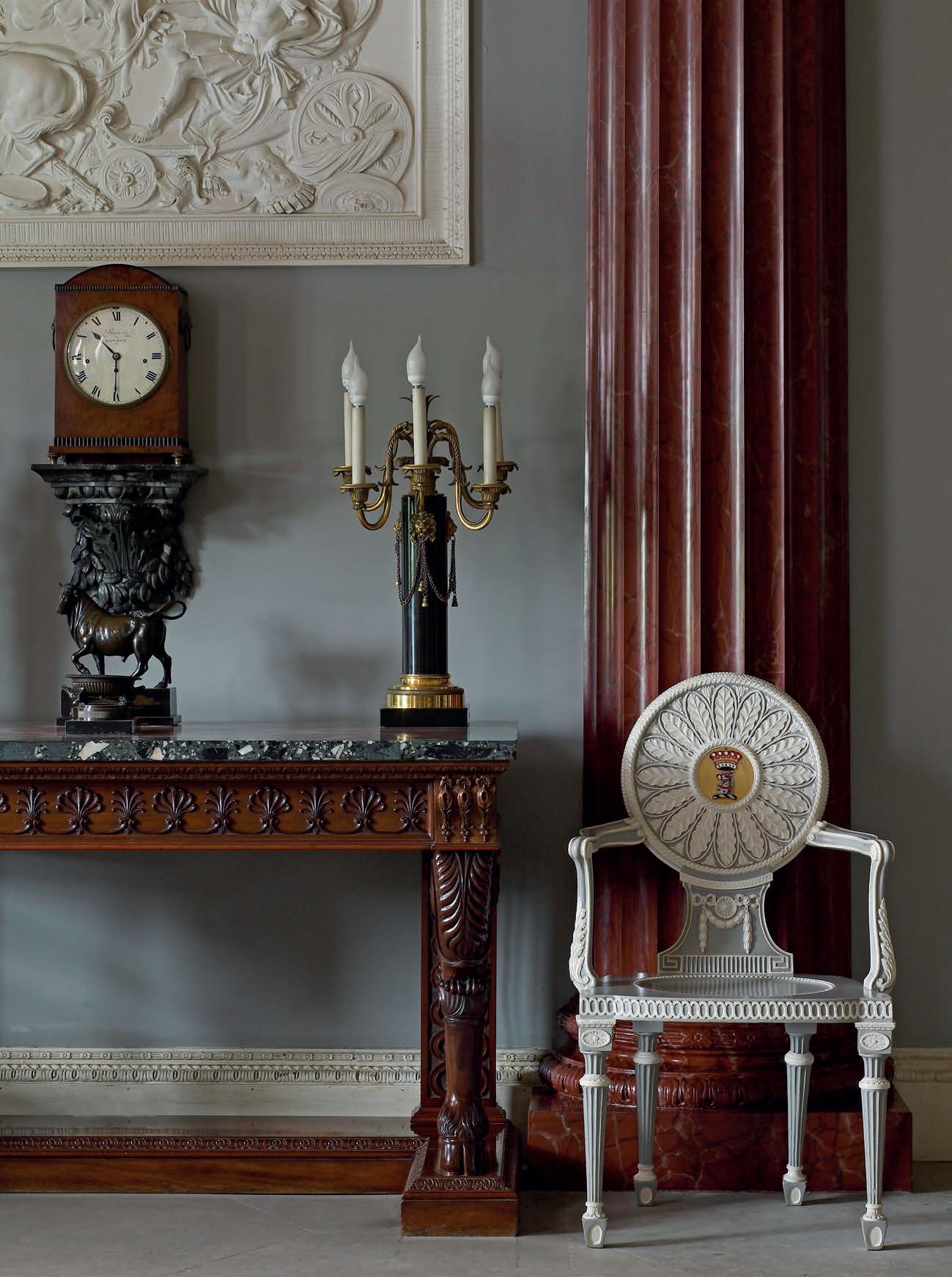
From pink and grey to vibrant yellow, Georgian interiors were awash with colour as a new exhibition reveals
If you think the interior colour palette of the 18th-century was as muted as a Farrow & Ball catalogue, its time to think again, as a new exhibition at Harewood House, built between 1759 and 1771, makes clear.
e trust’s curator and archivist, Rebecca Burton, said: “Harewood’s interiors were designed by the Scottish architect Robert Adam, famous for his signature neoclassical style. Like many other interior designers of the late-18th century he was not afraid to use bold colours, inspired in part by the rediscovery of the vibrant colour palette of the ancient world. Bright blues and greens, lilacs, pinks, terracotta-browns, and sometimes even black.”
e exhibition puts the colours which would have been at the heart of Harewood in the spotlight. Albeit some may now have faded. Rebecca continued: “Looking at colours of the 18th century is like looking through a faded lens because the colours are muted now, mainly due to light damage. At the time, everything was really bright, almost gaudy. is intensity has disappeared but in reality the colours were eye-popping and bright.”
As one might expect from the fashion-conscious Georgians, choosing the right colour for your home was vital, with price always a factor. Colours made from easy to obtain pigments were used to make inexpensive ‘common colours’, including stone, earthy yellows, lead grey and white. However, a more colourful palette needed more expensive pigments. ese ‘fancy’ or ‘party’ colours, blossom and pea green, could be triple the cost of common colours.
In 1770, the architect William Chambers wrote to a friend: “With regard to the painting of your Parlours, if they are for Common Use, Stone Colour will last best and be cheepest, but if you mean them to be very neat, pea-green and white, Bu colur and white, Paris grey and white is the handsomest.”
Opposite page
e entrance hall at Harewood would probably have been decorated in light, stone colours during Adam’s day. It is now painted in colours partly inspired by the Regency redecoration of the room, Harewood House Trust
Below right e Chinese Wallpaper is situated in the East Bedroom at Harewood House, Harewood House Trust
e start of George I’s reign in 1714 had seen the publication of two works which had a great impact on Georgian architecture and design: the rst was the English edition of Palladio and the initial volumes of Vitruvius Britannicus. Both leant towards a classical approach to building design. But while the Palladian period, roughly 1700-1750, looked to the Renaissance for inspiration, neoclassicism looked directly to antiquity.
Harewood owner, the sugar merchant and enslaver Edwin Lascelles, commissioned the house in the Palladian style. But before long he had given way to Adam’s neoclassical fervour, which went on to include a gallery ceiling inspired by the ruins of Palmyra in Syria. Lascelles also commissioned omas Chippendale to make the furniture with Lancelot ‘Capability’ Brown charged with landscaping the gardens.
In terms of its colour palette, Palladianism turned away from the dark timber colours of the 17th century towards lighter interiors. A wealthy entrance hall was intended to showcase the majesty of the rest of the house. Harewood’s hall may have been decorated in light, stone colours during Adam’s day. It is now painted in colours partly inspired by the Regency redecoration of the room. ere would have been no ‘stu s’ (no curtains or upholstery) as they could harbour germs.
‘The use of paint colours became more complex with the advent of neoclassicism, a taste popularised by Adam’s influential interiors. Designers did not, as is often thought, rely only on pastel hues. Bright blues, greens, browns, and lilacs were becoming increasingly popular’



Instead a polished hall chair with its decorative arms would declare the lineage of the owner. Even today the communal spaces of grand buildings are often painted in pale colours alongside statues.
As Palladianism gave way to neo-classicism in the 1760s the bold use of colour within the home, and at Harewood, became more popular.
One of the crazes was for pink, a shade particularly popular in France where it was a symbol of power, novelty and luxury.
e sugary-pink cuvetteMahon ower vase (above), part of the Harewood collection, was made by the Sèvres porcelain factory. Patronised by the French royal family, Sèvres was known for producing the most exquisite and innovative wares, designed to appeal to and entice the ckle and fashion-hungry French court.
One of Sèvres’ selling points was the development of a unique colour palette, invented by pioneering artists and chemists employed by the factory. It was known for its brilliant ground colours (couleurs de fond). ese are the solid or monochrome background colours tinted with metallic oxides. One of those colours was ‘fond rose’, a strong pink, which achieved huge popularity with the French royal court (and beyond) and over time became associated with Madame de Pompadour (hence the term ‘rose pompadour’ or ‘Pompadour Pink’).
Indeed, Louis XV preferred the colour more than his mistress, purchasing 77 rose-ground pieces (the majority of which were decorated with masculine hunting scenes).
Opposite page
e Music Room at Harewood House harmonises green and pink, credit Paul Barker and Harewood House Trust
Above left Sèvres porcelain vase with rose ground, c.1757-1758, Harewood House Trust, photo credit Glen Segal. Harewood’s collection of Sèvres was acquired by Edward ‘Beau’ Lascelles, son of the 1st Earl, following the French Revolution
Below e original Axminster carpet, using bold pink and green, in the Music Room re ects the Adam ceiling above, Harewood House Trust
Below right Pair of 18th-century Chinese celadon baluster vases mounted with giltbronze, photo credit Glen Segal, Harewood House Trust
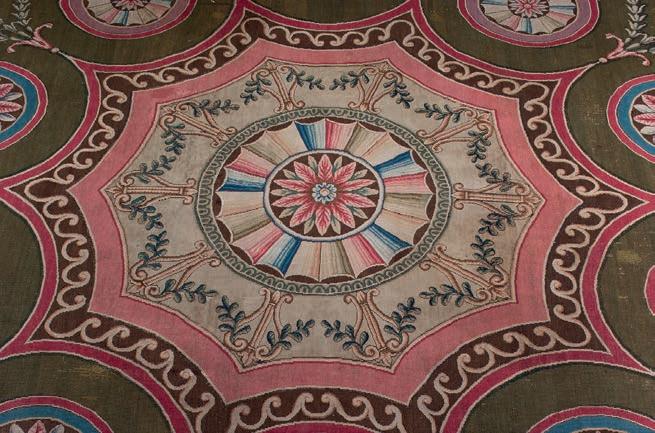
Adam’s bright colour palette was also inspired in part by the rediscovery of the vibrant colour palette of the ancient world. He was particlarly fond of pink and green together.
In Robert and his brother James Adam’s Works in Architecture, which rst appeared in 1773, Robert writes: “Light tints of pink and green, so as to take the glare o the white, so common in every ceiling and side walls with their hangings, pictures and other decorations.”
e combination is best seen at Harewood in the Music Room. Here a at plaster ceiling decorated with low-relief arabesques and geometric motifs incorporates small round classical paintings thought to be by Angelica Kau man; these medallions are exactly re ected in the Axminster carpet below, harmonising with the pink and green decorative scheme.
Even the other furnishings incorporate elements of the same motifs: the Chippendale tables repeat the bell ower swags of ceiling and carpet, and the geometric curved inlay echoes the circles and lines of the plaster mouldings. is room is one of the most ‘complete’ Adam interiors within the house (many others having been modi ed by Sir Charles Barry in the 19th century).
roughout the house Adam introduced intricate and subtly contrasting areas of colour into wall and ceiling decoration with pale green one of his default colours.
Green is another colour seen not just in Harewood’s interiors but in its porcelain. Chinese porcelain has been highly prized by European collectors since it was rst traded in Europe in the early 1500s. Harewood’s collection was acquired by Edward ‘Beau’ Lascelles in the late 18th century. Many of his pieces are decorated with gilt-bronze mounts that were added in France and England to appeal to the European taste for gilded decoration.
China’s celadons are the world’s oldest style of highred glaze. ey emerged in China’s Bronze Age when white-hot wood ash in the kiln fused onto the wares’ surfaces. eir distinctive grey-green colours derive from iron oxides in both ashes and clays.

Chinese goods were highly fashionable in Europe in
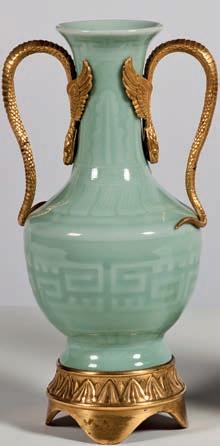
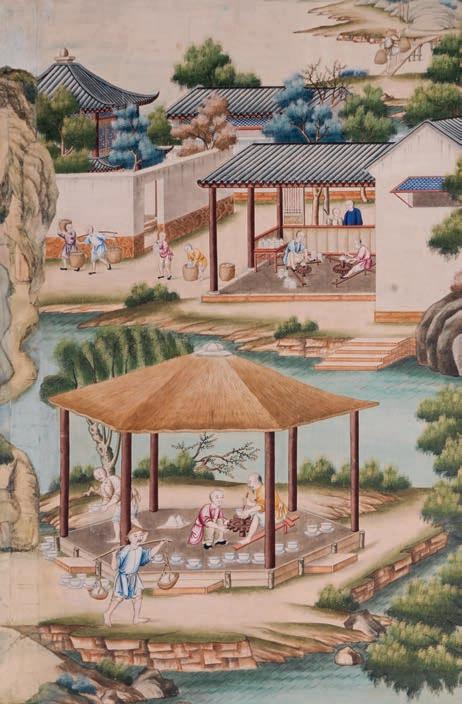
the 18th century and some of the bedrooms at Harewood were hung with hand-painted Chinese wallpapers imported via the East India Company.
Paper conservator Allyson McDermott, said: “ e 18th-century Chinese pigments were made from semiprecious stones including azurite (blue) and malachite (green) giving a depth of colour unfaded by time. ere are also rare organic purples, deep crimson reds made from crushed cochineal beetles and whites from the shells of oysters.”
Of all the primary colours, yellow is the one that seems least used by the Georgians (apart from at Harewood).
One reason may have been the jarring e ect it had on the gilt frames of the paintings which hung against it which was said to kill the picture.
In one famous outburst from Mrs Arbuthnot, writing about the Duke of Wellington’s plans for the Waterloo Gallery








Left Greens and blues, as seen in the hand-painted Chinese wallpaper, c.1760, photo credit Simon Dewhurst, Harewood House Trust
Below left Chippendale’s furniture for the Drawing Room would have been upholstered in yellow damask, Harewood House Trust
Below Yellow Drawing Room at Harewood House, credit Paul Barker and Harewood House Trust
at Apsley House, she wrote: “He is going to hang it with yellow damask, which is just the very worst colour he can have for pictures and will kill the e ect of the gilding. However he will have to have it.”
Another homeowner determined on the same scheme was Harewood’s Edwin Lascelles who purchased yellow silks for Drawing Room walls. One reason may be the colour, like the more expensive bright blues, greens and reds, it signalled rarity and richness. Yellow was also the colour of the Chinese emperor becoming a symbol of power in the Western world too.
e use of yellow was most likely to the frustration of Adam, who had originally envisaged another pink and green scheme for the room, like the Music Room, evident from the mismatched pink and green colour palette of the original Axminster carpet (which had clearly been put into production before this last-minute change of plan).
‘Of all the primary colours, yellow is the one used least by the Georgians (apart from at Harewood). One reason was the jarring effect it had on the gilt frames of the paintings hanging against it which was said to kill the picture’









Chippendale commission
Chippendale responded to the change of plan with enthusiasm and designed the seat furniture (originally yellow not red) to correspond to the new colour scheme.
He supplied 10 cabriole chairs without arms at £4 4s each, as well as two bergeres and two sofas. e bill describes the chairs as “10 Cabriole chairs without Arms richly Carved neatly Japann’d yellow and white varnished, stuft and Covered with your Damask and nished with gilt Nails £44 ”, which implies that Edwin Lascelles provided the silk damask for the whole suite, as well as for the walls and curtains.
Not only would each seat have been painted white and yellow and upholstered with yellow damask, but each piece was also topped o with a carved sun ower positioned on its top rail (below left). Now painted green, it would have originally been in matching yellow.
Rebecca Burton continued: “ ere’s something wonderfully poetic about Chippendale’s level of attention to detail, combining colour and carved motif.”
Colours Uncovered Exploring the Pigments and Colours Beyond its Collection is on at Harewood House, Harewood, Leeds LS17 9LG, until June 9. For more details visit www.harewood.org

The vast majority of the paintings at Harewood were created by using paint made from pigments. Pigments are formed of tiny insoluble particles that require a ‘medium’ or binder to attach it to an object.
By the 18th century, for instance, paint was created by mixing pigments with oil (as well as other solvents) – hence the term ‘oil paint’.
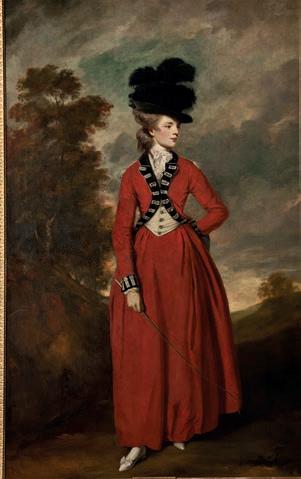
In earlier centuries (particularly during the Renaissance, up to about 1500), binders such as egg yolk were commonly used.
Joshua Reynolds (1723-1792) was known to advocate the use of as few pigments in paintings as possible, writing: “Lake, yellow ochre, blue and black are sufficient…to paint anything”, and he was convinced that the fewer pigments mixed together, the cleaner the colour and brightness of their effect. But he did also try many different ways of combining colours. He also experimented with new pigments as they became available.
Reynolds is famous for using reds, such as lake and carmine, which he particularly favoured for flesh tones. However, these pigments were ‘fugitive’ and faded over time and with exposure to light, sometimes making the faces of his sitters look ghostly white today.
Luckily, eventually Reynolds adapted his technique and instead began to use the more stable vermillion and red-lead for faces and for his sitters’ clothing.
There has been no scientific analysis of Harewood’s portrait of Lady Worsley, painted between 1776 and 1779 and along with one of her husband created to showcase their shared social status and wealth. But it is likely that Reynolds used one or both of the latter pigments to create the striking scarlet of her military-inspired riding habit.
Lady Worsley’s portrait is extraordinary for many reasons, but the dominance of red pigment in her portrait is unusual for the period.
Red was a colour generally associated with male power and authority, often used by rulers, religious leaders or military men. Her confident pose, with one hand on her hip also hints at female power.
A rare and highly-collectable Suffragette vesta case is one of the highlights of a Derbyshire fair this month. Made by William Neale in Chester in 1908 and with a full set of hallmarks, it is on sale from Aberdeen-based Highland Antiques at the Buxton Decorative, Antiques and Art Fair from May 10-12.

The dealer joins more than 40 specialists exhibiting at the UK’s longest running art and antiques fair, held annually at the Octagon in Buxton’s Pavilion Gardens.
Additional highlights include a signed and hand-coloured etching by Salvador Dali from his Mythologie Suite which has a price tag of £3,250 from Sheffield-based Hispanic Antiques. Among the newcomers for 2024 will be the Cotswolds gallery Rastall Fine Art and North Yorkshire’s Dales Antiques which specialises in early country furniture.
Sandown Racecourse in Surrey is the must-visit destination for trading card collectors this month for the highly-anticipated London Card Show.
From humble beginnings in 2021, when the fair saw just 10 tables and 40 attendees, the show has grown exponentially becoming Europe’s largest trading card show.
The weekend of May 11-12 is set to see up to 4,000 visitors and 500 tables with a range of cards on offer from mainstream Pokémon, Yu-Gi-Oh!, and Formula 1 to the niche UFC, Disney, and Marvel cards.

A number of UK auction houses now hold sales devoted to trading cards and Pokémon, including Ewbank’s in Woking, whose next Pokémon sale is on May 16
Above e London Card Show
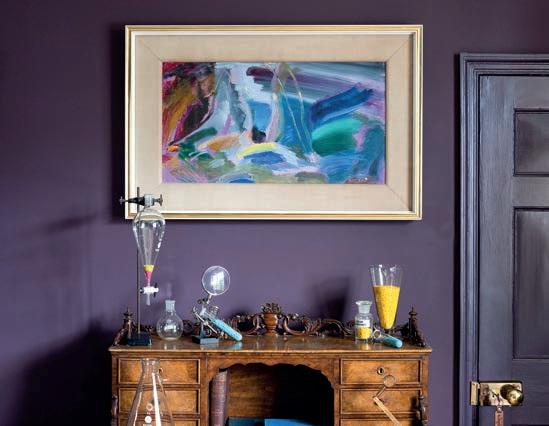
One of the most-awaiting events of the fairs calendar, the Petworth Park Antiques and Fine Art Fair, returns to the grounds of the Grade I-listed West Sussex country house this month. Some 60 exhibitors will offer hand-picked pieces specially chosen for the event from May 17-19 in the purposebuilt marquee of Petworth House.
The event attracts collectors from the UK and abroad, as well as interior designers on the hunt for a statement piece. The fair is well supported by the area’s many local dealers, as well as having a reputaion for showcasing work by artists who made West Sussex their home. One such being Ivon Hitchens (1893-1979), whose oil on canvas Wildflower Wood, will be offered by the London gallery Gladwell & Patterson, priced £160,000. Tickets to the fair are £10 each, which includes access to Petworth House, home to one of the country’s finest art collections. A courtesy bus will also be available to take visitors from the centre of Petworth to the fair.
Above Ivon Hitchens (1893-1979) Wild ower Wood, 1975, will be o ered at the fair by Gladwell & Patterson priced £160,000
An iconic piece of Liberty’s architectural history takes centre stage at the Decorative Fair in Battersea this month when the staircase from famous Great Marlborough Street shop takes part in the fair’s arts and crafts-themed foyer display.
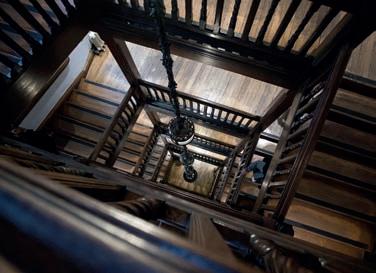
Arthur Lasenby Liberty started work on the famous shop in 1924 which was designed to feel like a home, with each atrium surrounded by smaller rooms, complete with fireplaces and furnishings.
The fashionable fair, which attracts interiors specialists and antique collectors alike, takes place in a purpose-built pavilion in the London park, from May 7-12.
This year’s event, which also celebrates garden antiques and furniture, has the addition of an exciting new fair-within-a-fair located on the mezzanine and hosted by the interiors website The House Directory.
Above e staircase at the famous store today, image ShutterstockBecause this list is compiled in advance, alterations or cancellations to the fairs listed can occur and it is not possible to notify readers of the changes. We strongly advise anyone wishing to attend a fair especially if they have to travel any distance, to telephone the organiser to confirm the details given.
LONDON:
Inc. Greater London
Adams Antiques Fairs
020 72544054
www.adamsantiquesfairs.com
Adams Antiques Fair, The Royal Horticultural Halls, Elverton Street, SW1P 2QW, May 19, Jun 9
Coin and Medal Fair Ltd 01694 731781
www.coinfairs.co.uk
London Coin Fair, NOVOTEL London West, 1 Shortlands, Hammersmith, London W6 8DR, Jun 1
Etc Fairs
01707 872140
www.bloomsburybookfair.com
Bloomsbury Book Fair, Turner Suite at Holiday Inn, Coram Street, London, WC1N 1HT, Bloomsbury Book Fair, May 12, Jun 9
Bloomsbury Ephemera Fair, May 26
Sunbury Antiques 01932 230946
www.sunburyantiques.com
Kempton Antiques Market, Kempton Park Race Course, Staines Road East, Sunbury-onThames, Middlesex TW16 5AQ, May 14, 28
Wimbledon Antiques Market, Prince Georges Playing Fields, Bushey Road, Raynes Park, London, SW20 8TE, May 19
The Decorative Fair - Spring 0207 76169327
www.decorativefair.com
Evolution London, Battersea Park, London SW11 4NJ, May 7-12
SOUTH EAST & EAST ANGLIA: including Beds, Cambs, Essex, Hertfordshire, Kent, Norfolk, Suffolk, Surrey, Sussex.
Antique Dealers Fair Limited, 01797 252030
www.adfl.co.uk
The Petworth Park Antiques and Fine Art Fair, The Marquee, Petworth House and Park, Petworth, West Sussex GU28 0QY May 17-19
Arun Fairs
07563 589725
Rustington Antiques & Collectables Fair, The Woodland Centre, Woodlands Avenue, Rustington, West Sussex, BN16 3HB, May 5, Jun 2
CL Fairs
07501 782821
Norfolks Collectors Fair At The Parish Hall, Church Street, Cromer, Norfolk, NR27 9HH, May 4, Jun 1
including Berkshire, Buckinghamshire, Cornwall, Devon, Dorset, Gloucestershire, Hampshire, Isle of Wight, Oxfordshire, Somerset, Wiltshire.
Antique Fairs Cornwall 07887 753956
www.antiquefairscornwall.co.uk
Lostwithiel Antiques & Collectors Fair Community Centre, Plyber Christ Way, Lostwithiel, Cornwall, PL22 0HA, May 12
Pensilva Liskeard Antique and Collectors Fair, PL14 5NF, May 26
Arun Fairs 07563 589725
Emsworth Antiques and Collectors Fair, Emsworth Community Centre., North Street, Emsworth, Hampshire, PO10 7DD, May 12, Jun 9
Cameo Fairs
07790 126967
www.cameofairs.co.uk
Antique, Vintage and Collectables Fair, Central car park, High Street, Lyndhurst. SO43 7NY
May 19
Corfe Castle Antiques Fair
Village Hall, East Street, Corfe Castle, Dorset, BH20 5EE, May 5, Jun 2
Continiuity Fairs
01584 873634
www.continuityfairs.co.uk
The International Westpoint
Antique Home and Vintage Fair, Westpoint Arena Clyst St Mary, Exeter EX5 1DJ, Jun 1-2
Drayton Antique & Collectors Fair
07488549026
Drayton Village Hall, Lockway, Drayton, Abingdon Oxon, OX14 4LG, May 12, Jun 2
Hidden Treasures 073947 04272
Benson on Thames Antique & Collectors Fair, The Parish Hall Sunnyside, Benson, Wallingford Oxon, OX10 6LZ, May 19
New Forest Fairs Dorset 07904 634858
Shaftesbury Town Hall Antique & Vintage Fair Shaftesbury Town Hall, High Street, Shaftesbury, Dorset, SP7 8LY, May 7, 11, 14, 21, 28
Sga Fairs 07759 380299
Browsers Antique & Collectors Fair, Pangbourne Village Hall
Adj to Central Village Car Park Pangbourne, Berkshire, RG8 7AN, May 25
EAST MIDLANDS
including Derbyshire, Leicestershire, Lincolnshire, Northamptonshire, Nottinghamshire, Rutland.
Arthur Swallow Fairs
01298 274493, asfairs.com
Antiques & Home Show, Vintage Flea Market, EXO Centre, Lincolnshire Showground, Lincoln, LN2 2NA, Jun 9
Stags Head Events 07583 410862
www.stagsheadevents.co.uk
Bank Holiday Antiques, Vintage & Collectors Fair, Hood Park Leisure Centre, Ashby-de-la-Zouch, LE65 1HU, May 27
WEST MIDLANDS
Wolverhampton, Staffordshire, WV8 1PL, May 26
Coin and Medal Fair Ltd
01694 731781 www.coinfairs.co.uk
Midland Coin Fair
National Motorcycle Museum, Bickenhill, Birmingham, B92 0EJ, May 12, Jun 9
including Cheshire, Cumbria, Lancashire, Northumberland, Tyne and Wear, Yorkshire.
Ilkley Fairs
07973 563992
Ilkley Antiques, Vintage & Collectables Fair, Clarke Foley Centre, Cunliffe Road, Ilkley, West Yorkshire, LS29 9DZ, May 5, Jun 2
V&A Fairs
01244 659887
www.vandafairs.com
Nantwich Civic Hall Antique and Collectors Fair, Civic Hall Nantwich, Beam Street, Nantwich, Cheshire England, CW5 5DG, May 27
Continuity Fairs, International Antiques & Collectors Fair of Wales 01584 873634
Royal Welsh Showground, Builth Wells, Powys, LD2 3SY, May 4-5
Glasgow, Antique, Vintage & Collectors Fair
07960 198409
including Birmingham, Coventry, Herefordshire, Shropshire, Staffordshire, Warwickshire, Worcestershire
B2B Events 07774 147197/ www.b2bevents.info
Malvern Flea & Collectors Fair Three Counties Showground, Malvern, Worcestershire WR13 6NW, May 27
Codsall Antiques and Collectables fair 07923 538178
Codsall Village Hall, Wolverhampton Rd, Codsall,
Bellahouston Leisure Centre, 31 Bellahouston Drive, Glasgow, G52 1HH, May 19
Vintage Ireland +353 85 862 9007
Waterford Antiques, Vintage & Collectables Fair, Waterford Tower Hotel The Mall, The Viking Triangle May 5
Laois Antiques, Vintage & Collectables Fair, Abbeyleix Manor Hotel Abbeyleix Manor Hotel, N77, May 12
South Dublin Antiques, Vintage & More Fair, Royal Marine Hotel Marine Rd, Dun Laoghaire, Jun 2
Because this list is compiled in advance, alterations or cancellations to the auctions listed can occur and it is not possible to notify readers of the changes. We strongly advise anyone wishing to attend an auction especially if they have to travel any distance, to telephone the organiser to confirm the details given
Inc. Greater London
Adam Partridge
The London Saleroom, The Auction Room , Station Parade, Ickenham Road, West Ruislip, HA4 7DL, 01895 621991 www.adampartridge.co.uk
Antiques and Fine Art, Jun 11
Bonhams
101 New Bond St, London W1S 1SR, 020 7447 7447
www.bonhams.com
Hot Off the Press, May 1
Weekly Watches (Online) ends May 8
Fine Chinese Art, May 16
Fine Japanese Art, Including Meiji Masterpieces from a Distinguished Deceased Estate, May 16
Islamic and Indian Art, May 21
Fine and Rare Wines (Online), May 21-Jun 3
Jewels (Online) May 20-28
20th Century Decorative Arts (Online) May 27-Jun 5
Modern and Contemporary Middle Eastern Art, Jun 5
Bonhams
Montpelier St, Knightsbridge, London, SW7 1HH, 020 7393 3900
www.bonhams.com
Weekly Watches, May 2 Collections (Online), ends May 8 Asian Art, May 13-14
Collector’s Treasures: Asian Art (Online) May 13-20
Silver and Objects of Vertu (Online), May 10-21
Antique Arms and Armour (Online), May 13-22
Watches and Wristwatches, May 22
Travel and Exploration (Online) Jun 3-12
Chiswick Auctions
Barley Mow Centre
Chiswick, London, W4 4PH 020 8992 4442
www.chiswickauctions.co.uk
Old Masters and 19th-Century Art, May 1
Fine Oriental Rugs and Carpets, May 14
Asian Art I & II, May 23, 24
Coins and Banknotes (Timed
Online), May 10-26
Autographs & Memorabilia (Timed Online) May 31
Silver and Objects of Vertu, Jun 4
19th and 20th-Century Photographs, Jun 6
Chiswick Auctions
1Roslin Square, Roslin Road, London, W3 8DH
www.chiswickauctions.co.uk
Books and Works on Paper, May 14
Christie’s 8 King St, St. James’s, SW1Y 6QT, 020 7839 9060
www.christies.com
Jewels Online: The London Edit
May 24-Jun 11
British and European Art, Jun 4
Elmwood’s
101 Talbot Road, London, W11 2AT, 0207 096 8933
www.elmwoods.co.uk
Important Jewels, May 1
Fine Jewels, May 8, 22
Fine Jewellery, May 15, 29
Silver and Vertu, May 16
Forum Auctions
220 Queenstown Road, London SW8 4LP, 020 7871 2640 www.forumauctions.co.uk
Modern Literature (Online), May 9
Books and Works on Paper (Online), May 23
Hansons Auctioneers
Richmond Saleroom, 6 Parkley’s Parade, Upper Ham Road, Richmond, TW10 5LF www.hansonsauctioneers.com 0207 018 9300/ 07469 353077
Jewellery, Watches, Fine Art & Antiques Auction, May 25
Lyon & Turnbull
Mall Galleries, The Mall, St. James’s, London SW1Y 5AS, 0207 930 9115
www.lyonandturnbull.com
Fine Asian Works of Art Viewing in London, May 17
Noonans
16 Bolton St, Mayfair, W1J 8BQ, 020 7016 1700 www.noonans.co.uk
A Collection of Scottish Coins (Pt II), May 8
The Michael J. McKeever Collection of Irish Coins, May 8 Coins and Antiquities, May 9 Orders, Decorations, Medals and Militaria, May 15
World Banknotes, May 29
Phillips
30 Berkeley Square, London, W1J 6EX, 020 7318 4010 www.phillips.com
Design, May 2 Photographs, May 16
Olympia Auctions
25 Blythe Road, London W14 0PD, 020 7806 5541 www.olympiaauctions.com
Modern and Contemporary African and Middle Eastern Art.
May 1
Chinese and Japanese Works of Art, May 14
European Objects & Works of Art, May 23
Roseberys Knights Hill, Norwood, London, SE27 0JD, 020 8761 2522 www.roseberys.co.uk
Traditional Home (Live Online), May 1
Modern Home (Live Online), May 1
Chinese, Japanese & South Eastern Asian Art (Part I), May 15 Chinese, Japanese & South Eastern Asian Art (Part II), May 16
The George Farrow Collection Jun 4
Sotheby’s
New Bond St., London W1A 2AA, 020 7293 5000 www.sothebys.com
Journey Through China’s History. The Dr Wou Kiuan Collection Online. Part III (Online), May 8-15
The Samurai: Japanese Arms and Armour, May 9
China/ 5000 Years (Online), May 10-17
Fine Watches (Online), May 15-29
Fine Jewels, May 30
Finest and Rarest Wines (Online), May 20-Jun 5
Ornellaia Vendemmia d’Artista 2021 | La Generosità Marinella Senatore (Online), May 22-Jun 5
Modern British and Irish Art
Evening Auction, Jun 6
Made in Britain Day Auction, Jun 7-8
Timeline Auctions
23-24 Berkeley Square
London W1J 6HE, 020 7129 1494
www.timelineauctions.co.uk
Ancient Art, Antiquities, Natural History and Coins, Jun 4-8
SOUTH EAST AND EAST
ANGLIA: Inc. Bedfordshire, Cambridgeshire, Essex, Hertfordshire, Kent, Norfolk, Suffolk, Surrey, Sussex
Bishop and Miller
19 Charles Industrial Estate, Stowmarket, Suffolk, IP14 5AH, 01449 673088
bishopandmillerauctions.co.uk
Medals and Militaria, May 8
Music and Audio, May 22
The Explorer, May 30
Bishop and Miller
Unit 12 Manor Farm, Glandford, Holt, Norfolk, NR25 7JP 01263 687342
bishopandmillerauctions.co.uk
The Collector & Asian Art, May 8
Bellmans
Newpound, Wisborough Green, West Sussex, RH14 0AZ, 01403 700858
www.bellmans.co.uk
Antiques and Interiors, May 13
Fine Clocks, May 13
Modern British and 20th Century Art, May 15
Watches and Fine Jewellery, May 16
Brighton & Hove Auctions
112-114 Warren Rd, Brighton and Hove, Brighton BN2 6DB 01273 23 00 50
brightonandhoveauctions.co.uk
Antiques and Collectables, May 9-10, Jun 6-7
Burstow & Hewett
The Auction Gallery, Lower Lake, Battle, East Sussex,TN33 0AT, 01424 772 374
www.burstowandhewett.co.uk
Luxury Watches, Fine Jewellery and Silver, May 3, 31
Homes and Interiors, May 8-9, Jun 6
Fine Sale, May 23
Fine Art and Sculpture, May 23
The Canterbury Auction
Galleries 40 Station Road West, Canterbury, Kent, CT2 8AN, 01227 763337
canterburyauctiongalleries.com
Fine Sale, Jun 7-8
Catherine Southon Auctioneers
Farleigh Court Golf Club, Old Farleigh Road, Selsdon, Surrey, CR6 9PE, 0208 468 1010 www.catherinesouthon.co.uk
Antiques and Jewellery, May 15
Cheffins
Clifton House, Clifton Road, Cambridge, CB1 7EA 01223 213343, www.cheffins.co.uk
The Interiors Sale, May 9
The Art and Design Sale, May 23
Ewbank’s
London Rd, Send, Woking, Surrey, 01483 223 101 www.ewbankauctions.co.uk
Retro Video Games and Consoles - The SEGA, May 2
Vintage Posters, May 3
Pokémon - Trading Cards, May 16
Pre-Loved Vintage and Antique, May 17
Fine Wines and Spirits, May 24
Comics, May 29
Entertainment and Memorabilia
Premier Live Auction, May 30
Entertainment and Memorabilia Collectables, May 31
James Bond, Jun 7
Excalibur Auctions Limited Unit 16 Abbots Business Park Primrose Hill Kings Langley, Hertfordshire, WD4 8FR 020 3633 0913
www.excaliburauctions.com
Diecast and Vintage Toys and Model Railway Collectors Sale, May 18
Marvel, DC and Independent Comic Book, Jun 8
Gorringes
15 North Street, Lewes, East Sussex, BN7 2PE, 01273 472503
www.gorringes.co.uk
Weekly featuring Coins and Stamps, May 13
Weekly Featuring Toy, Teddy and Doll, May 20
Weekly Featuring Music and Science, Jun 3
Weekly Featuring Textiles, Jun 10
Hansons
The Pantiles Arcade, 49 The Lower Pantiles, Royal Tunbridge Wells, Kent, TN2 5TE, 01892 573540
www.hansonauctioneers.co.uk
None listed in May or early June
Hanson Ross Unit 1, The Power House, Lumen Road, Royston, Hertfordshire, SG8 7AG, 01763 430 042
www.hansonsauctioneers.co.uk
May Silver, Jewellery and Fine Art, May 3
John Nicholson’s Longfield, Midhurst Rd, Fernhurst, Haslemere, Surrey, GU27 3HA, 01428 653727
www.johnnicholsons.com
Islamic and Oriental Auction, May 14
A Fine Antique Auction, May 15
Antique and General, May 25
Lacy Scott & Knight 10 Risbygate St., Bury St Edmunds, Suffolk, IP33 3AA, 01284 748 623
www.lskauctioncentre.co.uk
Home and Interiors, May 18, Jun 8
Coins, Banknotes and Tokens, May 21
Jewellery and Watches, May 21
Lockdales Auctioneers
52 Barrack Square, Martlesham Heath, Ipswich, Suffolk, IP5 3RF 01473 627110
www.lockdales.com
Toys, Ceramics and Antiques, May 8
Coins and Exonumia, May 14-15
Medals, Militaria and Weapons, May 21-22
The Banknote Sale, Jun 4-5
Mander Auctioneers The Auction Centre, Assington Rd Newton, Sudbury, Suffolk CO10 0QX, 01787 211847
www.manderauctions.co.uk
Interiors, May 18
Parker Fine Art Auctions
Hawthorn House, East Street, Farnham, Surrey, GU9 7SX, 01252 203020
www.parkerfineartauctions.com
Fine Paintings and Frames, May 9
Reeman Dansie 8 Wyncolls Road, Severalls Business Park, Colchester, Essex, CO4 9HU, 01206 754754
www.reemandansie.com
East Anglian, Fine Art and Antiques, Apr 30 to May 1
Homes and Interiors, May 21-22
Sworders Fine Art Auctioneers
Cambridge Road, Stansted Mountfitchet, Essex, CM24 8GE, 01279 817778
www.sworder.co.uk
Coins (inc. Historical Medals,
Banknotes, Tokens) May 3-12
Homes and Interiors, May 14, Jun 4
Asian Art, May 17
The Sculpture Park | Shaping The Future (Online), ends May 19
Fine Jewellery and Watches, May 21
Toovey’s Antique & Fine Art
Auctioneers Spring Gardens, Washington, West Sussex, RH20 3BS, 01903 891955 www.tooveys.com
Firearms and Edged Weapons, Militaria, Medals and Awards, May 14
Prints, Maps and Posters, Decorative Pictures, Silver and Plate, Jewellery, May 15
Furniture, Objects of Vertu, Collectors’ Items, Works of Art and Light Fittings, Needleworks, Textiles, Clothing, Rugs and Carpets, May 16
Stamps, Cigarette and Trade Cards, Postcards, Photographs, Autographs and Ephemera, May 22
Wristwatches and Pocket Watches, Clocks and Barometers, Cameras and Scientific Instruments, May 23
British and Continental Ceramics, Glassware, May 30
T.W. Gaze Diss Auction Rooms, Roydon Road, Diss, Norfolk, IP22 4LN, 01379 650306. www.twgaze.com
Antiques and Interiors, May 3, 10, 17, 24, 31
Bygones, May 14
Blyth Barn Furniture Auction, May 14, 21, 28
Clocks and Watches, May 16
Special Antiques Sale, May 30
W&H Peacock Auctioneers Eastcotts Park, Wallis Way Bedford, Bedfordshire MK42 0PE, 01234 266 366 www.peacockauction.co.uk
Mid-Century Design, May 17
SOUTH WEST: Inc. Berkshire, Buckinghamshire, Cornwall, Devon, Dorset, Gloucestershire, Hampshire, Isle of Wight, Oxfordshire, Somerset, Wiltshire
Adam Partridge The Devon Saleroom, The Antique Village Station Rd, Hele, Exeter EX5 4PW 01392 719826
www.adampartridge.co.uk
Fine Art, Antiques & Collectors’ Items with Books & Ephemera, May 20
Auctioneum Broadlands Fruit Farm, Box Road, Bathford, Bath BA1 7LR, 01225251303 www.auctioneum.co.uk
Fine Art & Antiques Auction (Part 2) - Furniture, Paintings & Interiors, May 17
Bearnes Hampton & Littlewood
St. Edmund’s Court, Okehampton Street, Exeter EX4 1DU, O1392 41310 www.bhandl.co.uk
Antiquarian Book Auction, May 14
Spring and Jewellery Auction, Jun 4
British Bespoke Auctions
The Old Boys School, Gretton Rd, Winchcombe, Cheltenham, GL54 5EE 01242 603005
www.bespokeauctions.co.uk
Art, Jewellery, Silver, Militaria, Antiques and Collectables, May 9
Chorley’s Prinknash Abbey Park, Near Cranham, Gloucestershire, GL4 8EU, 01452 344499 www.chorleys.com
Modern Art and Design, May 21 Country House Attics, May 22
David Lay Auctions Lay’s Auctioneers, Church Row, Lanner Redruth, Cornwall, 01736 361414, TR16 6ET www.davidlay.co.uk
Antiques and Interiors, May 2-3
The Timed Art Sale ends, May 12 Rare Books and Works on Paper, May 23
Jewellery and Luxury Fashion, May 30
Cornish Art and Fine Art, Jun 6
Dawsons Unit 8 Cordwallis Business Park, Clivemont Rd, Maidenhead, Berkshire, SL6 4BU, 01628 944100
www.dawsonsauctions.co.uk
Design Art and Interiors, May 16 Jewellery, Watches and Silver, May 23
Fine Art and Antiques, May 30
Dominic Winter
Mallard House, Broadway Lane, South Cerney, Cirencester, Gloucestershire, GL7 5UQ, 01285 860006 www.dominicwinter.co.uk
Printed Books and Maps, Early Printed Books, May 15 Photographs, Historical Documents, Autographs from the
Because this list is compiled in advance, alterations or cancellations to the auctions listed can occur and it is not possible to notify readers of the changes. We strongly advise anyone wishing to attend an auction especially if they have to travel any distance, to telephone the organiser to confirm the details given.
Collections of Martha Spriggs and Peter Bland, May 22
Aviation and Military History, Medals and Militaria, May 23
Dreweatts
Donnington Priory
Newbury, Berkshire, RG14 2JE 01635 553 553
www.dreweatts.com
Interiors, May 9
Single Owner Collection, May 14
Chinese Ceramics and Works of Art (Pt I), May 21
Chinese Ceramics and Works of Art (Pt II) and Japanese, Indian and Islamic Ceramics and Works of Art, May 22
Jewellery, Silver, Watches, Pens and Luxury Accessories, May 23
Fine Wine, Champagne, Vintage Port and Spirits, May 30
Single Owner Collection, Jun 4 Art Live, Jun 6
Duke’s Brewery Square, Dorchester, Dorset, DT1 1GA, 0105 265080
www.dukes-auctions.com
Medals and Militaria, May 9 Asian Art, May 23 Interiors, May 30
East Bristol Auctions
Unit 1, Hanham Business Park, Memorial Road, Hanham, BS15 3JE, 0117 967 1000 www.eastbristol.co.uk
Special Star Wars Auction, May 4
Antiques & CollectablesCeramics, Collectables, Music Memorabilia & Ephemera, May 14
Antiques & Collectables - Furniture & Decorative Interiors, May15
Gardiner Houlgate
9 Leafield Way, Corsham, Wiltshire, SN13 9SW, 01225 812912
www.gardinerhoulgate.co.uk
The Watch Auction, May 21-22
The Clock Auction, May 23
Hansons Auctioneers
49 Parsons Street, Banbury, Oxford, OX16 5NB, 01295 817777
www.hansonsauctioneers.co.uk
Silver, Jewellery, Watches, Fine Art & Antiques Auction, May 22
Harper Field Auctioneers
The Stroud Auction Saleroom
Ebley Road, Stonehouse, Stroud, Gloucestershire, GL10 2LN
01453 873800
www.harperfield.co.uk
May Auction, to include Guns, Weapons, Medals, Militaria, Ceramics, Glass, Asian and Tribal Art, May 8-9
Kinghams 10-12 Cotswold
Business Village, London Road, Moreton-in-Marsh, Gloucester, GL56 0JQ, 01608 695695
www.kinghamsauctioneers.com
Jewellery, Watches and Designer Goods, May 3
Fine & Decorative Arts, May 23-24
Lawrences Auctioneers Ltd
The Linen Yard, South St., Crewkerne, Somerset, TA18 8AB, 01460 703041
www.lawrences.co.uk
Militaria and Medals, May 22
Coins and Banknotes, May 23
Mallams Oxford
Bocardo House, St Michael’s St., Oxford, OX1 2EB, 01865 241358
www.mallams.co.uk
The Oxford Library Sale, May 22
Mallams Cheltenham
26 Grosvenor St., Cheltenham. Gloucestershire, GL52 2SG 01242 235 712
www.mallams.co.uk
Asian and Islamic Art, May 9
Mallams Abingdon
Dunmore Court, Wootten Road, Abingdon, OX13 6BH, 01235 462840
www.mallams.co.uk
None listed in May or early June
Moore Allen & Innocent
Burford Road Cirencester, Gloucestershire GL7 5RH, 01285 646050
www.mooreallen.co.uk
Vintage And Antique Furniture Auction (Timed), ends May 5, May 24-Jun 2
Vintage And Antique Furniture Auction (Timed), May 22-23
Nesbits Auctioneers & Appraisers 7 Clarendon Road, Southsea, PO5 2ED,
023 9229 5568
www.nesbitsauctions.co.uk
Fine Art, Antiques and Collectables, May 22
Philip Serrell Barnards Green Rd, Malvern, Worcestershire. WR14 3LW, 01684 892314 www.serrell.com
Interiors, May 2
Fine Art and Antiques, May 23
Richard Edmonds Auctions Ltd (formerly Chippenham Auction Rooms) Unit 1, Showell Business Park Showell. Chippenham Wiltshire. SN15 2NU, 01249 444544
Motorcycles, May 11
Enamel Signs and other Early Advertising with a Petroliana Section, Jun 1
Special Auction Services
Plenty Close, Newbury, Berkshire, RG14 5RL 01635 580 595 www.specialauctionservices.
Bank Note Auction (Pt II), May 2
Sand and Clay: Ceramics, Glass, Wine and Spirits Auction, May 9
Military and Collectors’ Auction including Scientific and Dentistry, May 14-15
Music and Entertainment, May 21
Jewellery, Pens and Silver Auction, May 30
The Cotswold Auction Company Bankside Saleroom, Love Lane, Cirencester, Gloucestershire, GL7 1YG, 01285 642420 www.cotswoldauction.co.uk
Pictures, Antiques and Interiors, May 21-22
The Cotswold Auction Company
Chapel Walk Saleroom, Chapel Walk, Cheltenham, Gloucesterhire, GL50 3DS, 01242 256363
www.cotswoldauction.co.uk
Books, Medals, Militaria, Coins, Stamps and Collectables, Jun 4
The Pedestal
The Dairy, Stonor Park, Henleyon-Thames, Oxfordshire RG9 6HF, 01491 522733
www.thepedestal.com
None listed in May or early June
Wessex Auction Rooms
Westbrook Far, Draycot Cerne, Chippenham, Wiltshire, SN15 5LH, 01249 720888 www.wessexauctionrooms.co.uk
Toys, May 2-3
Antiques, Collectables and Furniture, May 11
Woolley & Wallis
51-61 Castle Street, Salisbury, Wiltshire, SP1 3SU, 01722 424500 www.woolleyandwallis.co.uk
Silver and Objects of Vertu, May 1-2
Asian Art, Chinese Paintings & Japanese Works of Art, May 21-22
Medals and Coins, Arms and Armour, May 30
Modern British and 20th-Century Art, Jun 5
EAST MIDLANDS: Inc.
Derbyshire, Leicestershire, Lincolnshire, Northamptonshire, Nottinghamshire, Sheffield
Bamfords
The Derby Auction House, Chequers Road, Derby, Derbyshire, DE21 6EN, 01332 210 000
www.bamfords-auctions.co.uk
Antiques, Interiors, Estates and Collectables Auction, May 1, 15, 29
Toys For The Collector - The June Toy, Juvenalia, Advertising and Collector’s Auction, Jun 4
The Collector’s Grand Tour: Curated Objects, Interior Design, Curiosities and Works from the Library, Jun 6
Bamfords
Peak Shopping Village
Chatsworth Road, Rowsley, Derbyshire,DE4 2JE, 01629 730 920
www.bamfords-auctions.co.uk
None listed in May or early June
Gildings Auctioneers
The Mill, Great Bowden Road, Market Harborough, Leicestershire, LE16 7DE 01858 410414
www.gildings.co.uk
Antiques & Collectors, May 14, Jun 4
Fine Art & Antiques, May 21
Golding Young & Mawer
The Bourne Auction Rooms, Spalding Road, Bourne, Lincolnshire PE10 9LE
01778 422686
www.goldingyoung.com
Collective Sale, May 8-9, Jun 5-6
Golding Young & Mawer
The Grantham Auction Rooms, Old Wharf Road, Grantham, Lincolnshire NG31 7AA, 01476 565118
www.goldingyoung.com
Collective Sale, May 1-2, May 29-30
Golding Young & Mawer
The Lincoln Auction Rooms, Thos Mawer House, Station Road North Hykeham, Lincoln LN6 3QY, 01522 524984
www.goldingyoung.com
Collective Sale, May 15-16, Jun 12-13
Fine Art Sale, May 22
Hansons Heage Lane, Etwall, Derbyshire, DE65 6LS 01283 733988
www.hansonsauctioneers.co.uk
Derby Gallery and Photographicia Auction, May 2
Derby Single Owner Star Wars Auction, May 3
Derby May Royal Auction, May 10
Derby May Medals, Militaria and Firearms Auction, May 15
Derby May Antique and Collectors Auction: Including Silver, Jewellery and Watches, May 16-21
Irita Marriott Auctioneers and Valuers Ltd, William’s Yard Derby Road, Melbourne, Derbyshire, DE73 8JR 01332 414848
iritamarriottauctioneers.co.uk
May Live Online Auction, May 15-16
John Taylors Auction Rooms
The Wool Mart, Kidgate Louth, Lincolnshire LN11 9EZ 01507 611107
www.johntaylors.com
Antiques , May 21
Unique Auctions
Vincent Court,Teal Park, Turnstone Road,, Lincoln,, Lincolnshire, LN6 3AD, 01522 690444
www.the-saleroom.com
Antiques and Collectors, May 4-5
Collectors May 8
WEST MIDLANDS: Inc.
Birmingham, Coventry, Herefordshire, Shropshire, Staffordshire, Warwickshire
Bigwood Fine Art Auctioneers
The Old School, Tiddington, Stratford-Upon-Avon, Warwickshire, CV37 7AW 01789 269415
www.bigwoodauctioneers.com
None listed for May or early June
Cuttlestones Ltd
Pinfold Lane, Penkridge
Staffordshire
ST19 5AP, 01785 714905
www.cuttlestones.co.uk
Antiques and Interiors, May 2, 16, 30
Fellows
Augusta House, 19 Augusta Street, Hockley, Birmingham, B18 6JA, 0121 212 2131
www.fellows.co.uk
Pawnbrokers Jewellery and Watches, May 8, 22, Jun 5
Fine Jewellery, May 9
Jewellery, Day 1, May 14, 28
Jewellery, Day 2, May 15, 29
Watches and Watch Accessories, May 16
Gemstones, May 21
Silver and Plated Ware, May 23
Antiques, Fine Art and Collectables, Jun 4
Watches, Jun 6
Fieldings Mill Race Lane, Stourbridge, DY8 1JN 01384 444140
www.fieldingsauctioneers.co.uk
The Collectors Sale, May 16-17
Antiques (Online), May 21-28
Bespoke, May 29
Halls
Bowmen Way, Battlefield, Shrewsbury, Shropshire, SY4 3DR 01743 450700
www.hallsgb.com/fine-art.com
Silver, Jewellery and Watches Auction, May 15
Hansons Auctioneers
Bishton Hall, Wolseley Bridge, Stafford, ST18 0XN, 0208 9797954
www.hansonsauctioneers.co.uk
Bishton Hall May Whisky and Spirits Auction, May 8
Bishton Hall May Classic Car and Automobilia Auction, May 11
Bishton Hall May Silver, Jewellery, Watches, Fine Art and Antiques Auction, May 14
Potteries Auctions Unit 4A, Aspect Court, Silverdale Enterprise Park, Newcastle, Staffordshire, ST5 6SS, 01782 638100
www.potteriesauctions.com
20th-Century Pottery, Collectables and Jewellery, May 10
Potteries Auctions The Cobridge Saleroom, 271 Waterloo Road, Cobridge, Stoke-on-Trent, Staffordshire, ST6 3HR 01782 212489
www.potteriesauctions.com
British Pottery, Furniture, Unreserved Items, May 12, 26
Trevanion The Joyce Building, Station Rd, Whitchurch, Shropshire, SY13 1RD, 01928 800202
www.trevanion.com
Fine Art and Antiques, May 22
Warwick & Warwick Chalon House, Scar Bank, Millers Road, Warwick, CV34 5DB, 01926 499031
www.warwickandwarwick.com
None listed in May or early June
NORTH: Inc. Cheshire, Co. Durham, Cumbria, Humberside, Lancashire, Greater Manchester, Northumberland, Tyne & Wear, Sheffield, Yorkshire
Adam Partridge Withyfold Drive, Macclesfield, Cheshire, SK10 2BD 01625 431 788
www.adampartridge.co.uk
Asian Art and Musical Instruments with Wines and Spirits, May 22-23
Adam Partridge The Liverpool Saleroom, 18 Jordan Street, Liverpool, L1 OBP, 01625 431788 www.adampartridge.co.uk
Maritime and Militaria with Antiques and Collectors’ Items, May 1-2
Anderson and Garland Crispin Court, Newbiggin Lane, Westerhope, Newcastle upon Tyne, NE5 1BF, 0191 4303000 www.andersonandgarland.com
Collectors’ Auction, May 2 Homes and Interiors, May 21 Silver, Jewellery and Watches Auction, May 22
The Modern Art and Design Auction, May 23
Capes Dunn The Auction Galleries, 40 Station Road, Heaton Mersey, Cheshire, SK4 3QT, 0161 2731911
www.capesdunn.com
Interiors, Vintage and Modern Furniture, May 13, 28, Jun 10
Jewellery, Silver, Watches and Gold Coins, May 14
Antique Furniture, Clocks, Eastern Carpets and Traditional Paintings, May 29
Hawleys Auctioneers, Albion House, Westgate, North Cave, Brough, Beverley, East Yorkshire, HU15 2NJ. 01482 868193
www.hawleys.info
Antiques and Fine Art, May 18-19
David Duggleby Auctioneers
The Gallery Saleroom, Scarborough, North Yorkshire, YO11 1XN, 01723 507111 www.davidduggleby.com
Coins and Banknotes, May 15
The Stamp Sale, May 15
Jewellery and Watches, May 16, Jun 6
Affordable Art, May 16, Jun 6
Decorative Antiques and Collectors, May 17, Jun 7
Collectors and Clearance, May 17, Jun 7
Furniture, Rugs and Interiors, May 18, Jun 8
Militaria, Weapons and Sporting Guns, May 25
Garden, Home and Commercial, May 29
Whisky, Wine and Advertising, Jun 5
The Silver Sale, Jun 6
Duggleby Stephenson
The Saleroom, York Auction Centre, Murton, York, YO19 5GF,01904 393300
www.dugglebystephenson.com
Jewellery and Watches, May 9
The Silver Sale, May 9
Antiques and Collectors, May 9
Collectors and Clearance, May 9
Fine and Affordable Art, May 10 Furniture, Rugs and Interiors, May 10
Elstob Ripon Business Park, Charter Road, Ripon, North Yorkshire HG4 1AJ, 01677 333003
www.elstob.co.uk
Fine Art and Antiques, May 8
Omega Auctions Ltd
Sankey Valley Industrial Estate, Newton-Le-Willows, Merseyside WA12 8DN, 01925 873040
www.omegaauctions.co.uk
TV, Film, Sporting Memorabilia and Collectables, May 21
The Danny Baker Collection, Jun 4
Because this list is compiled in advance, alterations or cancellations to the auctions listed can occur and it is not possible to notify readers of the changes. We strongly advise anyone wishing to attend an auction especially if they have to travel any distance, to telephone the organiser to confirm the details given.
Richard Winterton Lichfield
Auction Centre, Wood End Lane, Fradley Park, Staffordshire, WS13 8NF, 01543 251081 www.richardwinterton.co.uk
Antique and Home, May 7-8, 13-14, 20-21, Jun 3-4
Richard Winterton Tamworth
Auction Rooms, 34-35 Church Street, Tamworth, B79 7BX, 01827 217746 www.richardwinterton.co.uk
None listed in May or early June
Ryedale Auctioneers Cooks Yard, New Rd, Kirkbymoorside, North Yorkshire, YO62 6DZ, 01751 431544 www.ryedaleauctioneers.com
Monthly Antiques, Interiors and Collectables, May 2-4, May 31 to Jun 1
Collectables and Militaria, May 17-18
Sheffield Auction Gallery
Windsor Road, Heeley, Sheffield, S8 8UB, 0114 2816161 www.sheffieldauctiongallery.com
Specialist Collectable Toys, May 2 Silver, Jewellery and Watches, May 2
Antiques and Collectables, May 3
Shelby’s Auctioneers Ltd
Unit 1B Westfield House, Leeds LS13 3HA, 0113 2502626 www.shelbysauctioneers.net
Antiques and General Sale, (Online) May 14, 28
Tennants Auctioneers
The Auction Centre, Harmby Road, Leyburn, North Yorkshire DL8 5SG, 01969 623780 www.tennants.co.uk
Antiques and Interiors, May 3, 24
Coins and Banknotes, May 8
Scientific and Musical Instruments, Cameras and Tools, May 15
Jewellery, Watches and Silver, May 18
Country House Sale, May 18
Costume, Accessories and Textiles, May 24
Stamps, Postcards and Postal History, Jun 5
Antiques and Interiors, including Designer Fashion, Jun 7
Thompson Roddick Callan
The Auction Centre, Marconi Road, Carlisle, Cumbria, CA2 7NA 01228 535288
www.thomsonroddick.com
Carlisle - Antiquarian & Collectable Books and Related Items, May 2
Carlisle: Home Furnishings and Interiors Auction To Include Jewellery, Silver, Paintings, Porcelain, Collectables, Furniture Etc., May 13, Jun 3
Vectis Auctions Ltd Fleck Way, Thornaby, Stockton on Tees, TS17 9JZ, 01642 750616
www.vectis.co.uk
Doll & Bear Auction, May 2
Specialist Diecast Auction, May 8
Retro Gaming, Comics & General
Toy Auction, May 9
Specialist Diecast Auction, May 14
The Sound It Out Record Collection, May 15
General Toy Auction, May 16
Military Models, Military Figures and Militaria Auction, May 21
TV & Film Related Auction, May 29
Model Train Auction, May 30
Matchbox Model Auction, May 31
Wilkinson’s Auctioneers
The Old Salesroom, 28 Netherhall Road, Doncaster, South Yorkshire, DN1 2PW, 01302 814884
wilkinsons-auctioneers.co.uk
None listed in May or early June
Wilson55 Victoria Gallery, Market St, Nantwich, Cheshire CW5 5DG 01270 623878
www.wilson55.com
Firearms, Shotguns, Airguns, Arms and Militaria, May 8
Bonhams 22 Queen St, Edinburgh, EH2 1JX 0131 2252266 www.bonhams.com
Whisky (Online), ends May 9
Scottish Art, May 15
Lyon & Turnbull 33 Broughton Place, Edinburgh. EH1 3RR, 0131 5578844 www.lyonandturnbull.com
Five Centuries, May 15
Jewellery and Watches, Jun 5
Scottish Paintings and Sculpture featuring JD Fergusson at 150, Jun 6
McTears Auctioneers 31
Meiklewood Road, Glasgow, G51 4GB, 0141 8102880 www.mctears.co.uk
Coins and Banknotes, May 1
Jewellery, May 1
Watches, May 1
Antiques and Interiors, May 2, 16, 30
Whisky, May 8
The Scottish Contemporary Art Auction, May 9
Militaria, Maps and Ethnographica, May 22
19th and 20th-Century Design, May 22
Silver and Luxury Accessories, May 23
Asian Art, May 23
Thomson Roddick The Auction Centre, Irongray Road Industrial Estate, Dumfries, DG2 0JE, 01387 721635
www.thompsonroddick.com
Home Furnishings and Interior, May 14, 28
Thomson Roddick The Auction Centre, 118 Carnethie Street, Edinburgh, EH24 9AL 0131 4402448
www.thompsonroddick.com
None listed in May or early June
Thomson Roddick 22 Smith Street, Ayr, KA7 1TF 01292 267681
www.thompsonroddick.com
Fine Art and Antique Sale, May 16
Interior Sale of Household Furnishings to include Antiques and Modern Furniture. A Large Selection of Ceramics, Glass and Decorative Ware, Assorted Pocket and Wrist Watches, Jewellery, May 30
Anthemion Auctions, 15 Norwich Road, Cardiff, CF23 9AB., 029 20472444
www.anthemionauction.com
Monthly General Sale of
Ceramics, Glass, Paintings, Furniture, Works of Art, Books, Sporting Memorabilia, May 8 Fine and Antique Auction to include Jewellery, Silver, Ceramics, Glass, Paintings, May 22
Jones & Llewelyn Unit B, Beechwood Trading Estate, Llandeilo, Carmarthenshire, SA19 7HR, 01558 823430 www.jonesandllewelyn.com
General Sale, May 4, 18, Jun 1
Rogers Jones & Co Colwyn Bay Saleroom, 33 Abergele Road, Colwyn Bay, Conwy, North Wales, LL29 7RU, 01492 532176 www.rogersjones.co.uk
None listed for May or early June
Rogers Jones & Co 17
Llandough Trading Estate, Penarth, Cardiff, CF11 8RR, 02920 708125 www.rogersjones.co.uk
Jewellery and Collectables, May 17
Out of Europe: Asian, Native & World Fine Arts, May 29 Fine Art and Interiors, Jun 7
Adam’s 26, Stephens Green, Dublin 2, D02 X665, Ireland 00 353 1 6760261 www.adams.ie
The Library Collection, May 1 Fine Jewellery and Watches, May 14
Mid Century Modern, May 21
DeVeres 35 Kildare Street Dublin, D02 X088, Ireland www.deveres.ie
00 353 (0)-1676 8300
Outstanding Irish Art & Sculpture, May 28
Sheppards Irish Auction House The Square, Durrow, Co. Laois, R32 FN88, Ireland. 00 353 (0)57 874 0000 www.sheppards.ie
Great Irish Interiors ends May 2
Whyte’s
38 Molesworth St. Dublin D02 KF80 Ireland
00 353- (0)1-676 2888 www.whytes.ie
Important Irish Art, May 27
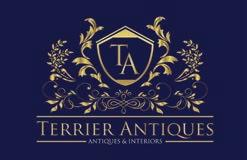
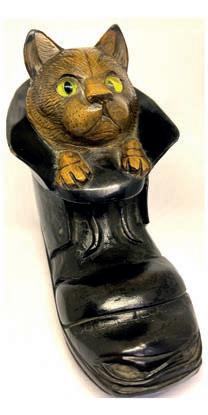
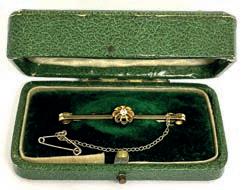
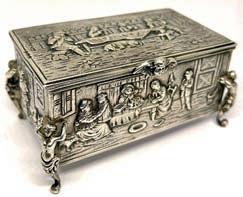



Labelled/ stamped branded furniture from Georgian to Victorian, eg Thomas Butler, Morgan & Sanders, J Alderman, Ross of Dublin (pictured), Gregory Kane, Wilkinson of Ludgate Hill, Robert James of Bristol, James Winter, W Priest, Samuel Pratt and many others. Tables all types, chairs, bookcases, , Davenport. mirrors etc. Campaign shower.
Georgian chamber horse exercise chair (pictured)
Unusual Georgian to William IV architectural features eg doors, door frames, over door pediments. 18th century staircase spindles and handrail needed. Anything Georgian or Regency with lots of character considered.
Rectangular Georgian fanlight.
Four identical reclaimed Georgian wooden sash windows with boxes, approx 60 high x 37 wide.
Marble fire surrounds from 1750 to 1850ish. White or coloured. Bullseyes, William IV styles etc. Brass Regency reeded fire insert and Victorian griffin grate (pictured) Human skull,
alligator. Grand tour souvenirs.




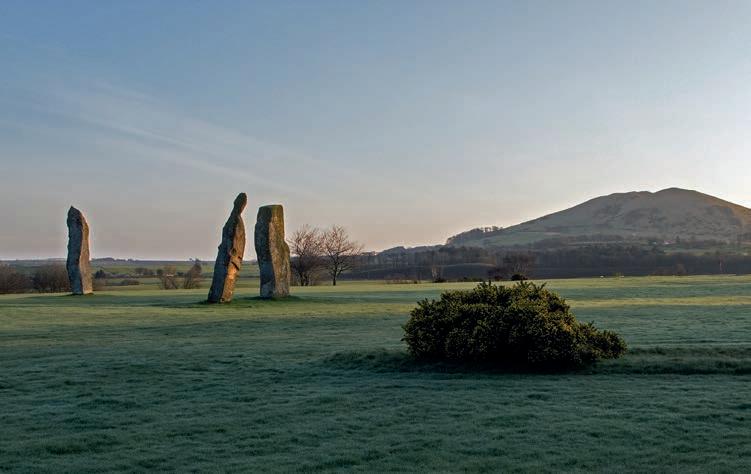

expert Marc Allum visits the land of his forebears and discovers prehistoric standing stones on a golf course and in the middle of a housing estate
It’s been a very busy few weeks. I’ve travelled to Vietnam and Cambodia ticking several wishlist boxes, including visiting several of the 400 ancient temples at Angkor Wat one of the largest eligious structure in the world. At home I’ve appeared on the rostrum, selling several hundred lots; cleared and distributed the contents of my late mother’s home; presented ve lectures and two charity events.
As I write this, I’m sitting in an Airbnb looking across a valley in Fife. In the distance I can see the lights of the Quaker Oats factory and, after today’s lecturing engagements, I decided to head o in search of mythical stone circles and ruinous castles. I wasn’t disappointed.
Wherever I am in the world, I’m on an antiquarian safari seeking out interesting buildings and prehistoric sites, and Scotland never lets me down.
I regard myself as a latter-day antiquarian, equipped with the modern advantages of car, sat-nav and the internet. So it was Google that helped steer me towards the ruinous Collairnie Castle, where Mary Queen of Scots reputedly spent three nights, located just a couple of miles down the road from my Airbnb.
Sadly it’s situated among a number of farm buildings and a huge silo. It’s begging to be saved and, despite its status as a scheduled ancient monument, needs urgent help. It’s quite depressing to see these Scottish gems with their roofs caving in.
A little further down the road, in the beautifully decayed Monimail Old Cemetery, I found the curtilage
of Monimail Tower, once part of a Renaissance palace in Fife and occupied from the 13th century by the archbishops of St Andrews.
I love Scottish churchyards with their table tombs and austere-looking heavy head stones. ey are so atmospheric, with their encroaching decay only heightening the romantic beauty of these sad and enigmatic places.
Part of my a nity to this country is no doubt in my genes as I am half Scottish. My mother’s family all come from Kirkcaldy in Fife.
While my childhood memories of the town are a little vague I do remember the smell of the linoleum works, so it was nostalgic to head down the coast taking in as many sights as I could before dusk settled.
One of the highlights, and a must-see for latter-day antiquarians, are the mystical Standing Stones of Lundin.
Despite their historic pedigree (they date to the Bronze Age) and their impressive stature (each is 5m, 18ft, tall), they are situated, somewhat less romantically, on the fairway of the Lundin Link’s ladies golf course.
After gaining permission from the chap in the starters hut I ambled across the course. One stone was far warmer than its partners, which I put down to the angles of the sun rather than some mysterious ancient rite. However, who knows?
Further down, in Glenrothes, I tracked down the standing stones of Balbirnie and Balfarg, once part of a vast prehistoric landscape but now land-locked in the middle of a huge housing estate. Designed in a circle around the large ring ditch of Balfarg, it was surreal to imagine that thousands of years ago the estate would have looked out on neolithic rites taking place in henges just beyond their front lawns.
While these Scottish wonders might not rival Angkor Wat, or attract as many tourists, to the antiquarian in me, as I reach for my kilt, they are every bit as wonderful.
‘Wherever I am, I’m on an antiquarian safari. Searching out interesting buildings and prehistoric sites is par for the course and it’s one of the things I love about Scotland’
Marc Allum is an author, lecturer and specialist on the BBC’s Antiques Roadshow. For more details go to www.marcallum.co.uk
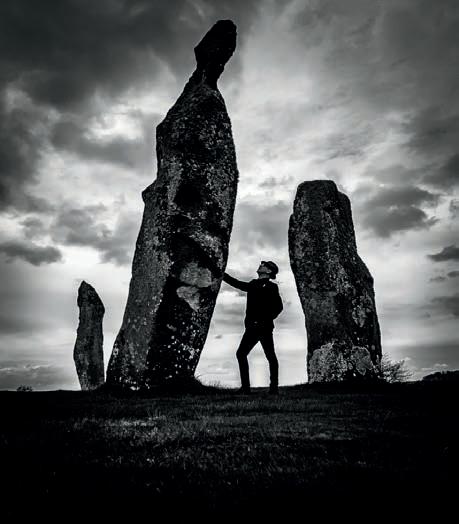

LARGE OAK REFECTORY TABLE, CHARLES I 17TH CENTURY
£15,000-25,000 + fees
MATCHED SET OF TEN OAK BACKSTOOLS 17TH CENTURY
£3,000-4,000 + fees
Provenance: Private Collection, Buckinghamshire

FURNITURE, PAINTINGS & WORKS OF ART AUCTION 15 & 16 MAY 2024 LIVE FROM EDINBURGH & ONLINE